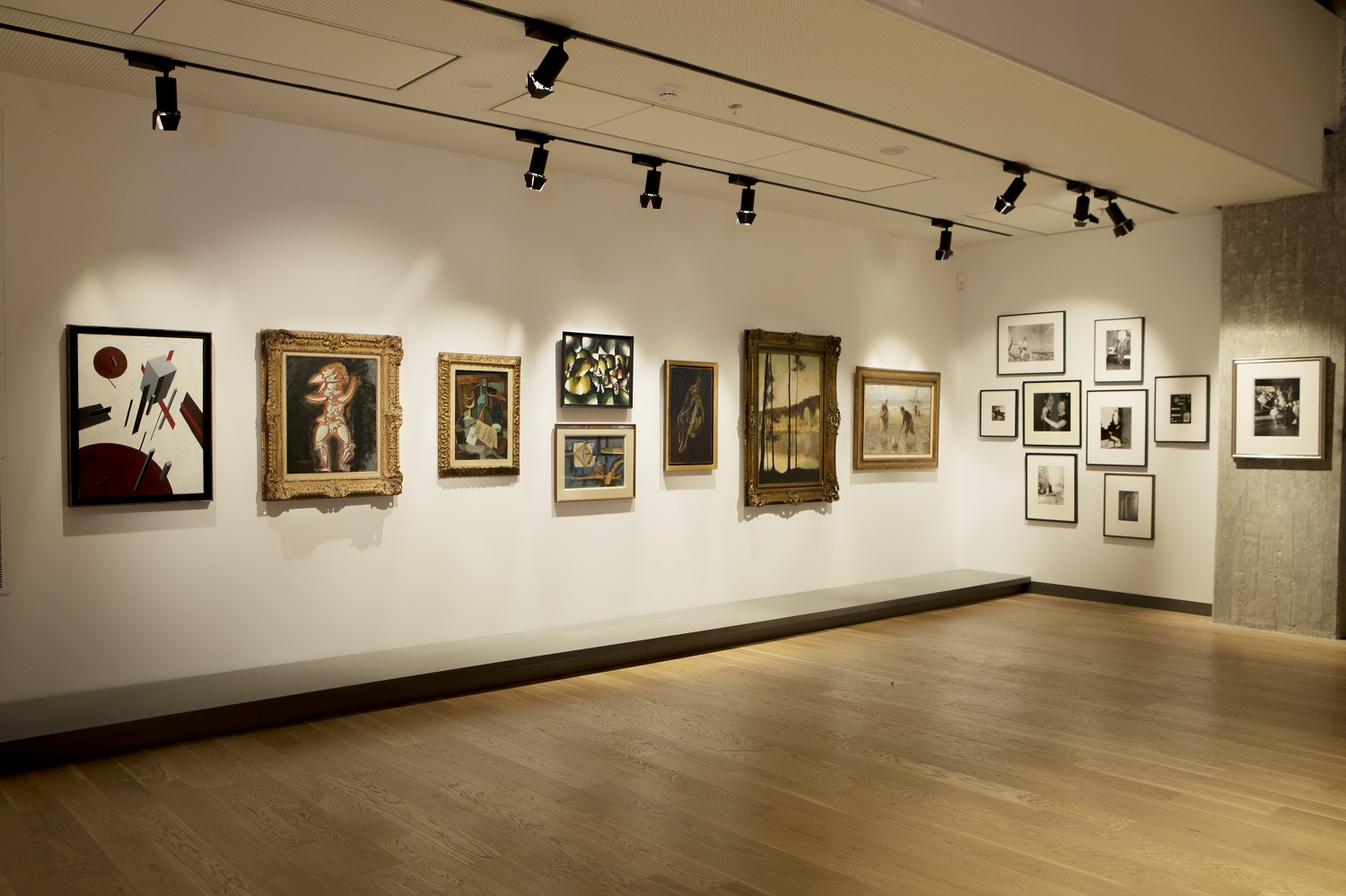Opened: February 2014, closed: September 2014 | Exhibition Curator: Eli Atias | Chief Curator: Orit Shaham Gover | In collaboration with the Joint and the JDOCU Group | JDOCU Photographers: Eli Atias, Benny Levin, Atalia Katz, Naphtali (Tali) Idan, Amir Halevy, Itzik Goren, Yossi Beinart, Eliezer Yaari, Shai Beilis
Education
Search Results
Past Exhibitions
Let There Be Laughter
Jewish Humor Around the World
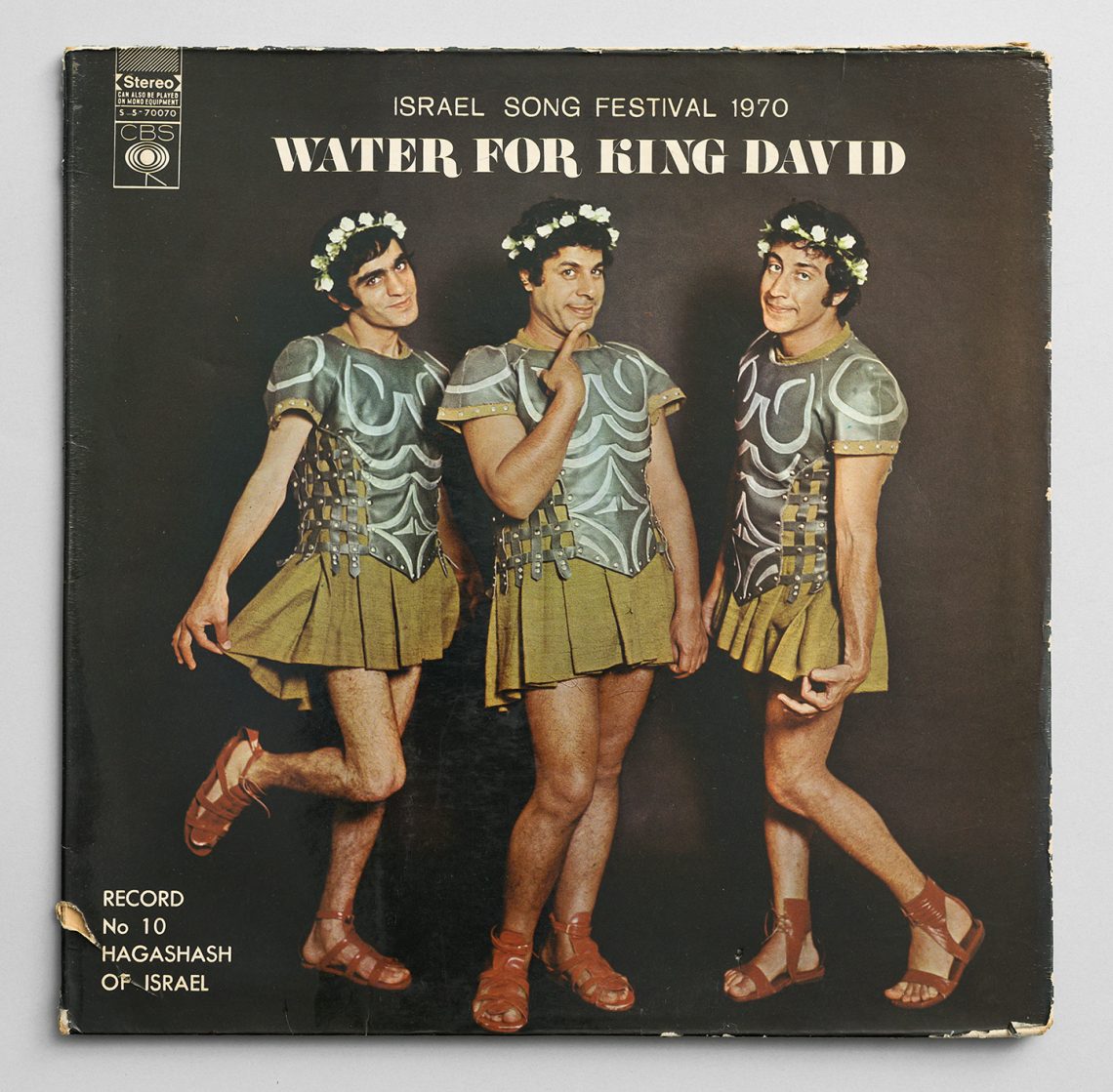
Let There Be Laughter
Jewish Humor Around the World
Opened: April 2018, closed: March 2025 | Curators: Asaf Galay, Michal Houminer
What makes Jews so funny? And how did “The People of the Book” turn out to be superstar writers, producers and comedians? The museum takes a lighthearted look at the origins of Jewish humor and the major contributions of Jews to the rise of a global industry.
This exhibition explores why Jews take their jokes so seriously. It celebrates the diversity and vitality of Jewish humor and explores how elements of Jewish joking have remained constant regardless of time, place, and language. Along the way, we’ll have some fun.
Odesa – Tel Aviv
Hebrew Literature and Universal Art
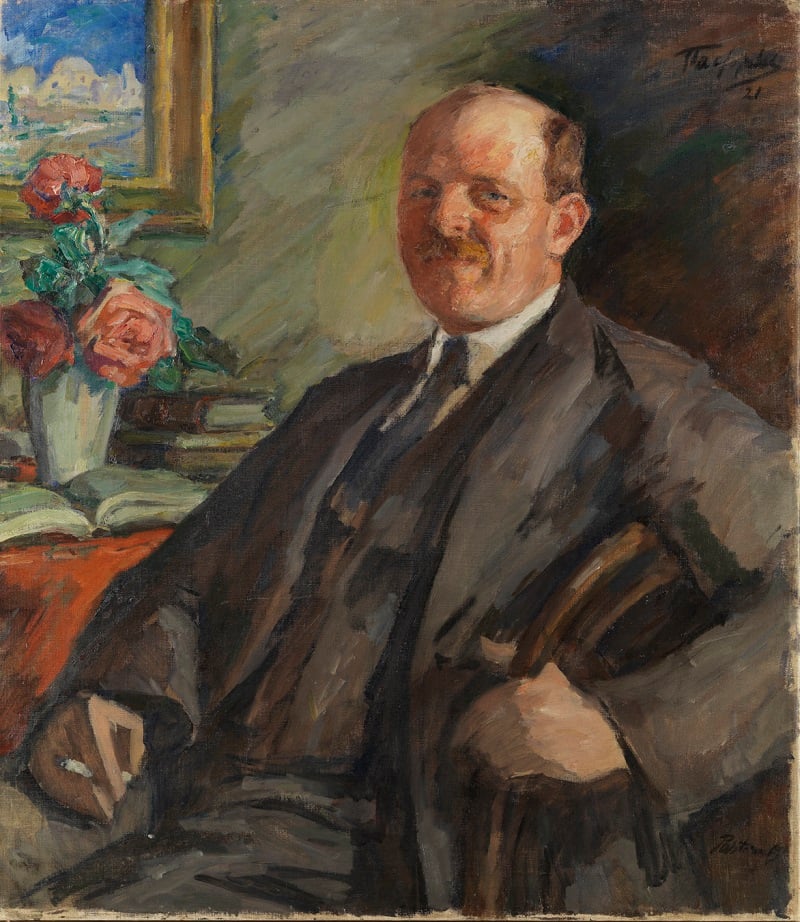
Odesa – Tel Aviv
Hebrew Literature and Universal Art
The exhibition Odesa – Tel Aviv: Hebrew Literature and Universal Art seeks to shed light on a unique chapter in the Jewish story from the early 20th century – namely, the blossoming of different categories of Jewish artists in Odesa, the untamed southern capital of the Russian Empire. At the time, the city was a cutting-edge cultural center that people called the "Paris of the Black Sea Coast."
The Jewish artists who worked in Odesa during the first three decades of the 20th century can be divided into two distinct groups: the first was comprised of painters and sculptors who dreamt about Paris and hoped to create avant-garde and universal art; the second group, who often collaborated with the first, was made up of writers, journalists and philosophers who hoped to create secular Jewish culture and modern Hebrew literature. The latter group included Bialik, Tchernichovsky, Jabotinsky, Klausner, Ravnitzky, Ahad Ha'am, and many others.
The Russian Revolution shattered the dreams they all had. Soon after that, the legendary SS Ruslan set sail from Odesa, whose journey marked the start of the Third Aliyah to pre-State Israel. Many Jews left Odesa and settled in Tel Aviv.
The artists among them brought with them a pluralistic spirit and a dream of universal art that reflected the spectrum of modern artistic styles. The writers among them created Hebrew literature here that advanced the movement for Jewish national revival. Both groups laid the foundations for the development of Israeli culture as we know it today. The first mayor of Tel Aviv, Meir Dizengoff, who had also spent time in Odesa, wanted to build a white city along the shores of the Mediterranean Sea, like the one he fondly remembered on the coast of the Black Sea.
Leonard Cohen in Israel
Video Art Display With Rare Footage
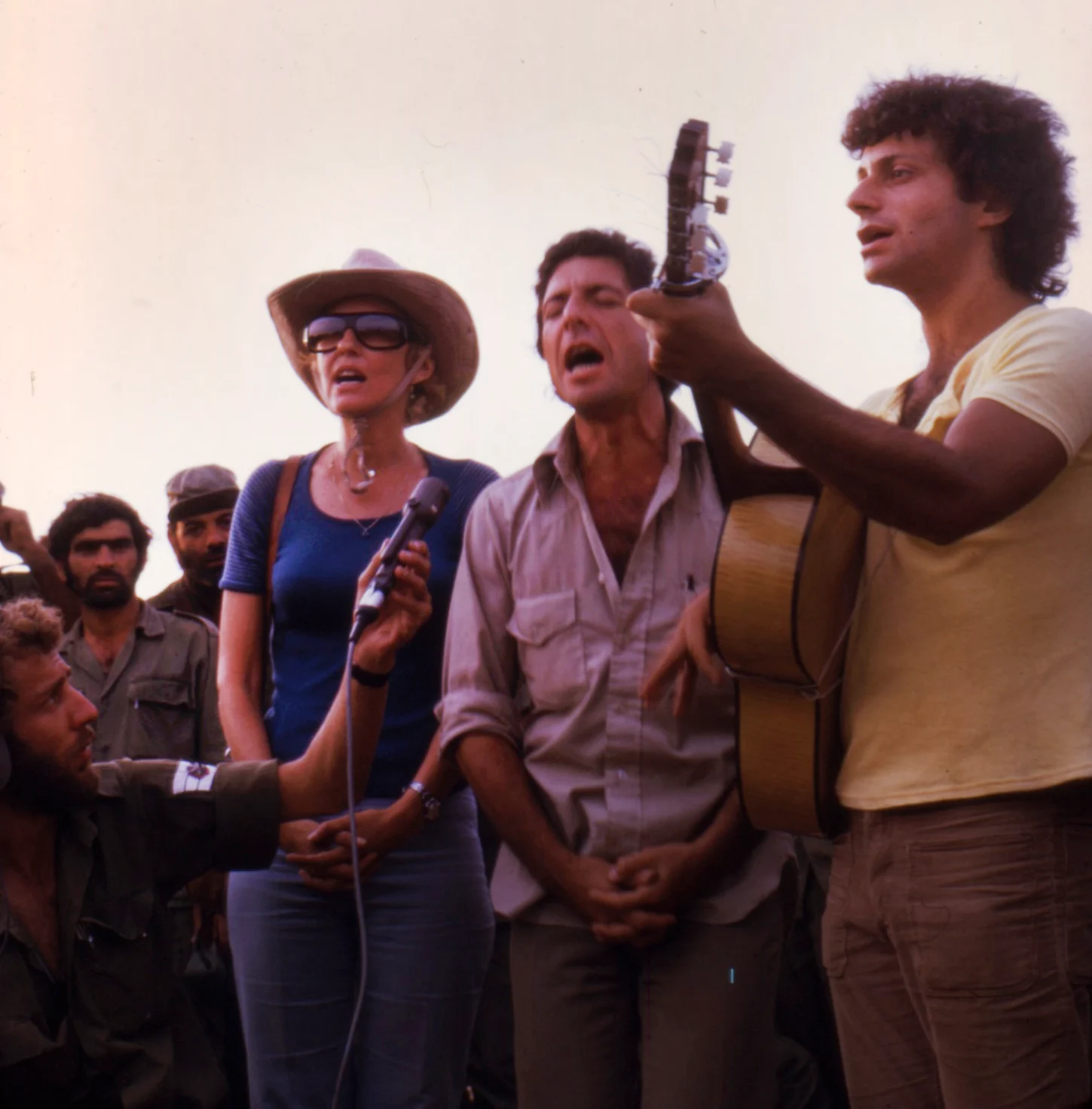
Leonard Cohen in Israel
Video Art Display With Rare Footage
Legendary musician Leonard Cohen’s relationship with Israel was complex. Cohen, raised observant, was a devout Zen-Buddhist for thirty years, though he famously maintained his connection to Judaism throughout his life. His soul-searching – grappling with his own heritage – intermingled with Israel’s story. From his first trip to Israel in 1960 as an unknown writer, when he met renowned Israeli poet Natan Zach at the iconic Café Casit in Tel Aviv, to two concerts in 1972 as a musical superstar – Cohen became one of Israel’s favorite rock icons. At his first concert here, a fight broke between audience members and security at the Yad Eliyahu sports arena, when Cohen asked the audience to move closer to the stage. At his second concert, Cohen famously did not feel his performance was living up to his expectations. He stopped playing in the middle of a song, and retreated to his dressing room to meditate. Half an hour later, he returned to the stage and brought his audience to tears. For Cohen, the event was traumatic – for those who were there, unforgettable.
Operation Moses
30 Years After
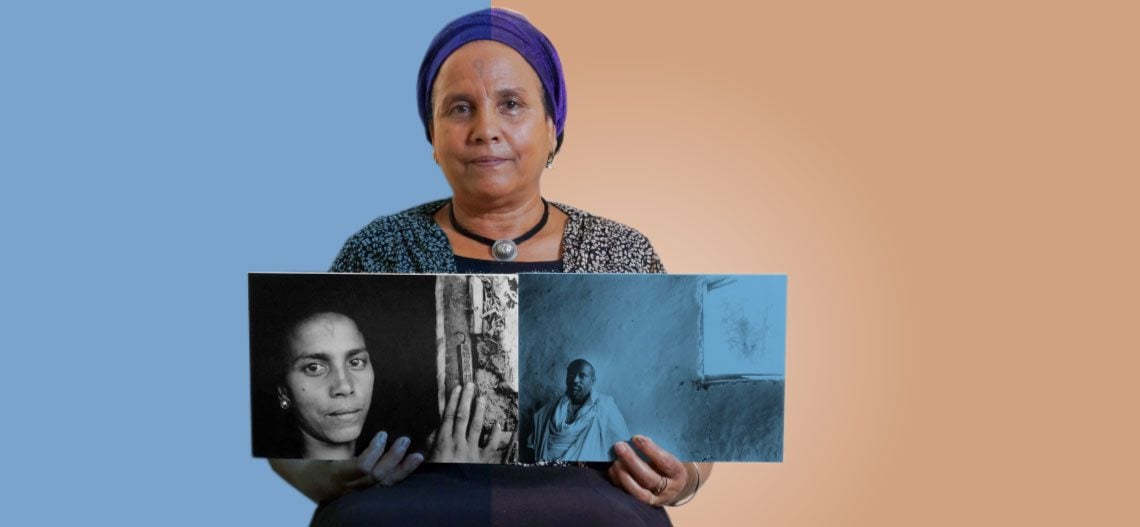
Operation Moses
30 Years After
Opened: May 2016, closed: February 2021 | Film Director: Orly Malessa Curators: Michal Houminer and Assaf Galai | Designers: Tucan Studio Chief Curator: Dr. Orit Shaham-Gover
2014 marked 30 Years to “Operation Moses”, the Aliya of Ethiopian Jewry. The Museum of the Jewish People was the only institution that photographed and documented this Aliya and the absorption of Ethiopian Jewry in Israel during the period of 1984 – 1991. Doron Bacher, the Museum’s house photographer at the time, began photographing the Jews in Ethiopia in April 1984, six months before the commencement of “Operation Moses” and continued documenting their Aliya and absorption. The result – 10,000 stills and slides which enriched the museum’s archives. The Museum of the Jewish People, together with photographer Doron Bacher and film director Orly Malessa, joined in preparing an exclusive and original exhibition that will examine what transpired to the community over the last 30 years. The exhibition’s perspective is not nostalgic and does not reflect the view of the Israelis, but rather reflects on those who personally experienced the immigration from Ethiopia. The exhibition is an opportunity to connect the past, as documented in the Museum’s archives, to the present and to the museum’s perception that everyone is part of “the Story”. The media exhibition “Operation Moses: 30 Years After” presents the story of the absorption of Ethiopian individuals and families in Israel, from Operation Moses to the present. The exhibition provides the stage of relating the stories of ten families documented in the Museum of the Jewish People ‘s photos. It examines their lives from the time they were photographed until the present, using texts and short videos; referring to their struggles with displacement, emigration and absorption, and their reception by Israeli society. The story in the exhibition is told from the perspective of those who personally experienced it all. The immigrants’ voices are heard from their vantage point. The exhibition reflects stories of the individuals who made their way to a new country, noting the lights and shadows of a long and complex process. Each story is accompanied by photographs, artifacts and a short film which in the interviewees are those who appear in the stills. They relate their personal accounts of what they experienced every step of the way from Ethiopia to Israel. The curator of the exhibition, director and producer Orly Malessa, immigrated to Israel with her family in the framework of “Operation Moses”. Malessa holds a degree in Technological and Cultural Communications from Ben Gurion University. In 2011 Orly wrote her thesis on “Ethiopian Representation in Israeli Television Series”, for which she received an award of excellence. She produced and directed several feature films and documentaries.
Our Thanks:
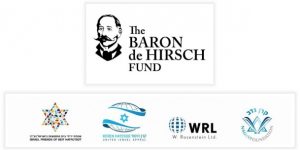
Capturing History
The Photography of Chim
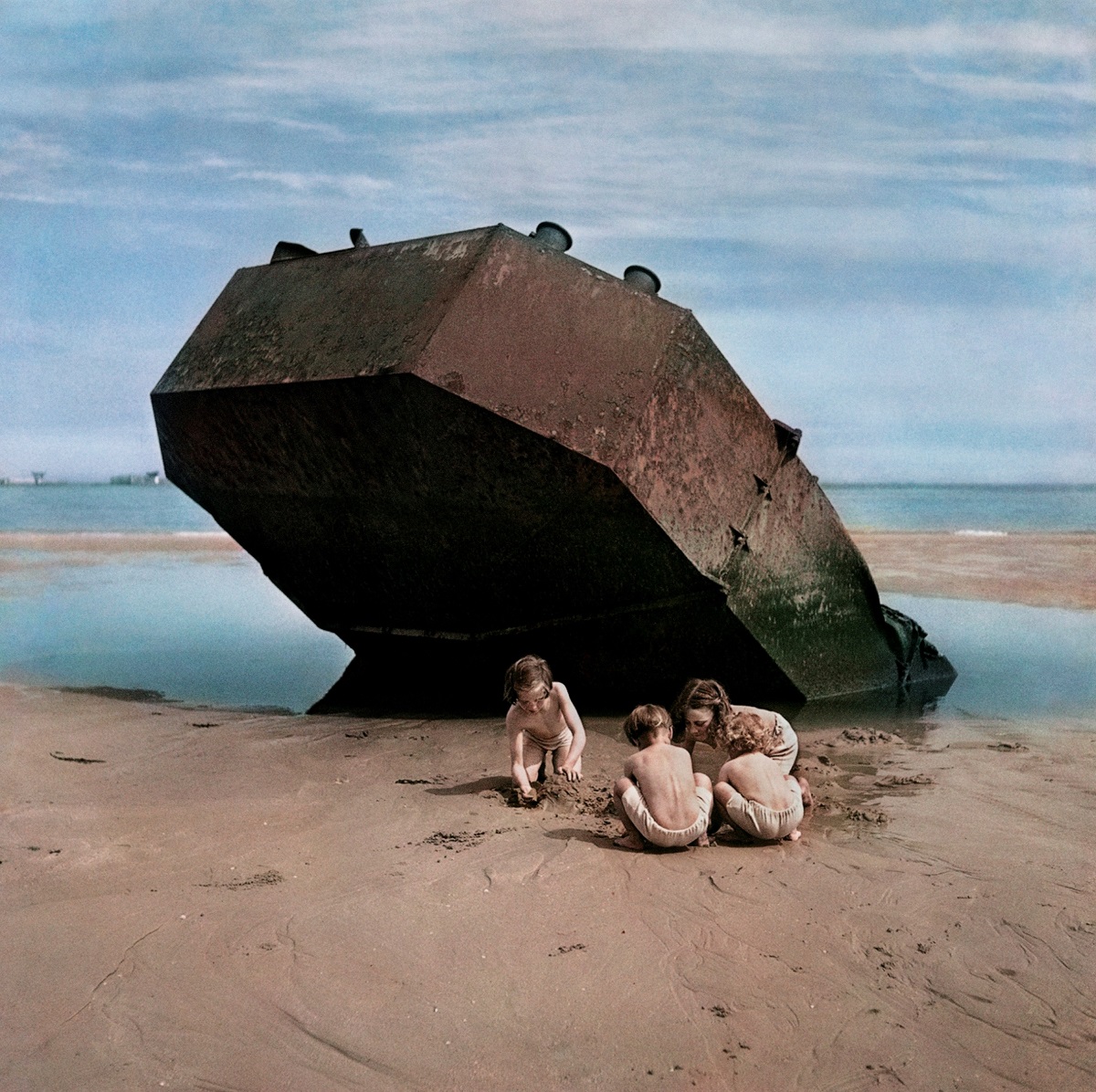
Capturing History
The Photography of Chim
Opened: March 2017, closed: February 2021 | Chief Curator: Dr. Orit Shaham-Gover | Exhibition Curator: Asaf Galay | Exhibition Director: Michal Houminer | Architect: Ori Glazer | Graphic Designer: Onna Segev Interior Designer: Lia Eleonora Fang | This exhibition was developed in collaboration with Helen Sarid and Ben Shneiderman, Chim’s niece and nephew. We thank Magnum for their assistance with this exhibition as part of their 70th anniversary celebrations.
The Museum of the Jewish People is proud to present this retrospective on the life and work of Chim, one of the greatest photojournalists of the first half of the twentieth century. Born Dawid Szymin, later called David Seymour, but known professionally as Chim, he was a pioneer of this golden age in political photojournalism. Founder of Magnum Photos with long-time friends Henri Cartier-Bresson and Robert Capa, Chim took portraits of leaders, artists and intellectuals that appeared in the world’s leading magazines. His depictions of the Spanish Civil War, Europe devastated by World War Two, and the first years of the State of Israel helped form the collective memory of the twentieth century. These iconic photographs reflect Chim’s technical expertise and visual intuition, but also the compassion, humanism and optimism that characterize his work. A highlight of this exhibition are Chim’s stunning photographs of the young State of Israel, including color works on display for the first time. Other features include personal items from the estate of Chim, who was killed in 1956 while covering the Suez Crisis.
9th Floor
Video Art Installation by Ronny Douek
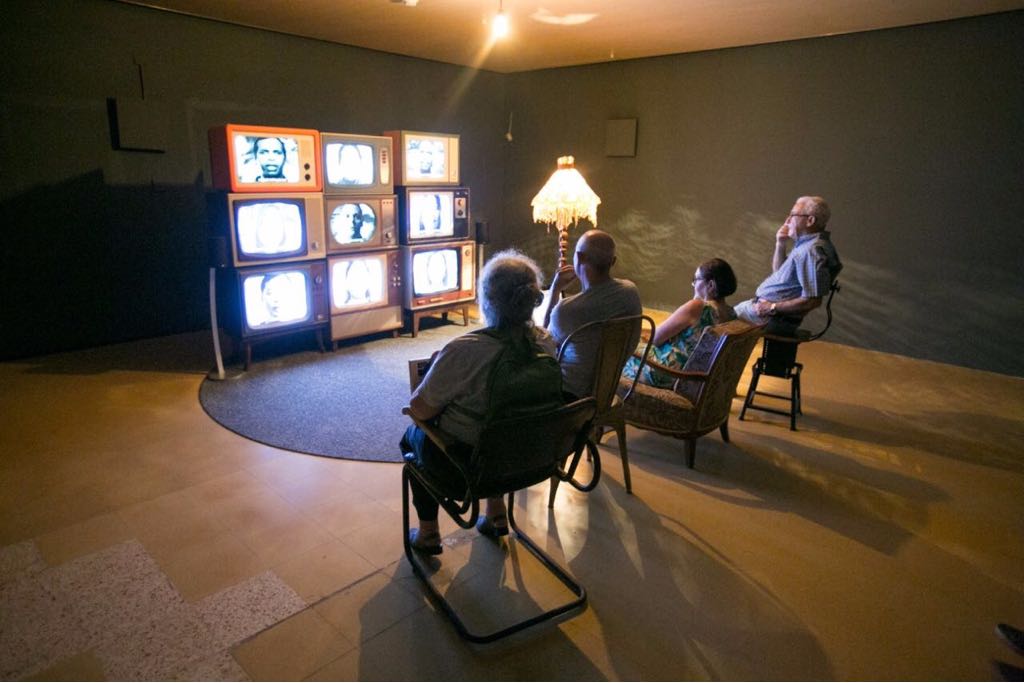
9th Floor
Video Art Installation by Ronny Douek
Opened: July 2018, closed: October 2018 | Artist: Ronny Douek | Director: Ayelet Menahemi | Producer: Amit Gintzler | Photographer: Boaz Yaacov Editors: Ayelet Menahemi & Amit Gintzler | Installation produced with the help of Ahuzat Rishonim, Rishon LeZion
An installation in which foreign caregivers are seen telling the life stories of elderly Israelis in Hebrew, and in first person. This dissonance illustrates the growing generational gap within Israeli society. Through the installation, we are trying to raise questions about the nature of the relationship between us, our parents, and our grandparents. The term “9th floor”, mentioned in the stories, refers to the upper floor of a known sheltered housing center, where the most terminally disabled people are housed, and which is in fact, their last life stage.
Forever Young
Bob Dylan at 75
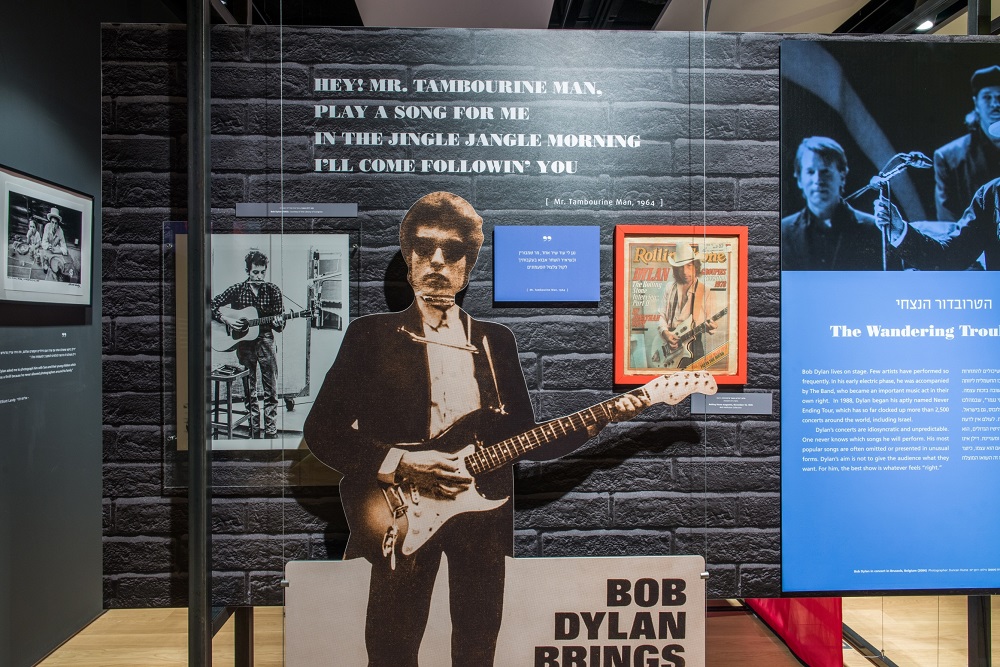
Forever Young
Bob Dylan at 75
Opened: May 2016, closed: January 2018 | Exhibition Curators: Amitai Achiman Asaf Galay | Chief Curator: Dr. Orit Shaham Gover | Designers: Tucan Studio | Artistic Director: Yoav Kutner
It is difficult to think of a Jewish musician who has had a greater influence on 20th century culture than Bob Dylan. Dylan was one of the greatest American poets, the voice of an entire generation. In 1999, he was included in Time Magazine’s ‘100 most influential people of the 20th century’ describing him as a “poet, artist, social commentator, and the leading spirit of the anti-culture generation”. In 2016 he was awarded the Nobel Prize in literature. In order to demonstrate to what extent Dylan had become became a myth in his lifetime, Time quoted a line from one of his songs, Jokerman, “You were born with a snake in both of your fists while a hurricane was blowing”. The exhibition is designed to show to Museum visitors the complex figure that is Bob Dylan; through film, pictures, images, posters, exhibits and of course a lot of his music. The exhibition deliberately does not follow the chronological order of his life but rather describes his life story according to three core themes: The social revolution that Dylan caused; Dylan’s influence on music throughout the world; Dylan’s complex relationship with his Jewish identity. The Artistic Director of the exhibition is Yoav Kutner whose voice will be heard in the audio guide. In the framework of the exhibition there will be on display for the first time in Israel original photographs by Elliott Landy, who was the official photographer of the Woodstock Festival. In addition, a special short documentary film will be produced – ‘My Dylan’ – which will show Dylan’s influence specifically on Israeli music. The film will include a number of leading Israeli musicians, over different generations of the Israeli music scene, who will describe Dylan’s influence on them or a meaningful personal experience they had as a result of his inspirational music.
The Original Core Exhibition
1978-2017
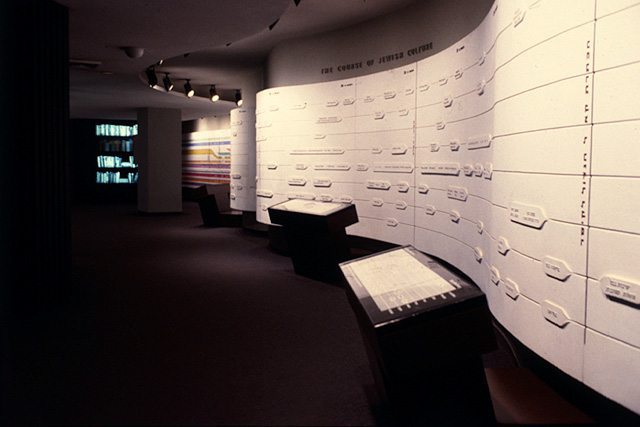
The Original Core Exhibition
1978-2017
Opened May 1978, closed October 2017
The Core Exhibition, in which various events were held used murals, reconstructions, dioramas, audio-visual displays, documentary films and interactive multi-media presentations to convey the panorama of the Jewish people. The exhibition was divided into six thematic sections: Family, Community, Faith, Culture, Among The Nations, and Return. In the center of the old core exhibition, a Memorial Column was displayed, in memory of Jewish victims throughout history.
On the Ground, in the Air and at Sea 1948
Volunteers from Abroad in Israel's War of Independence
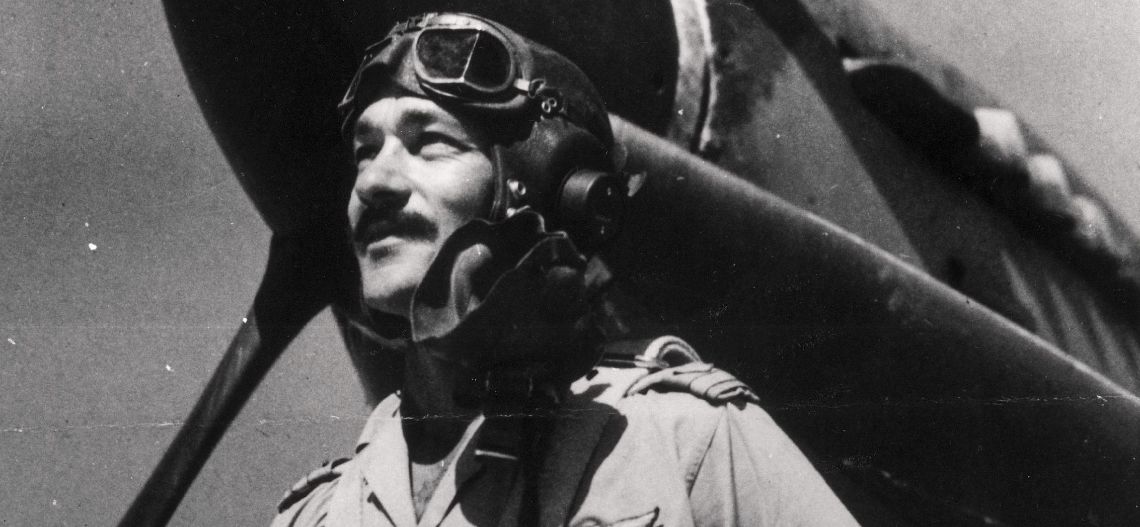
On the Ground, in the Air and at Sea 1948
Volunteers from Abroad in Israel's War of Independence
Opened: June 2012, closed: October 2017 | Curator: Shira Friedman | Designer: Design Mill | This exhibition is presented in cooperation with World MACHAL
This is the story of the visionary, brave and determined men and women of valor who responded to an immediate need and came from the ends of the earth to aid the fledgling State of Israel. This exhibition pays tribute to MACHAL (the Hebrew acronym for overseas volunteers), those who came when they were most needed during Israel’s struggle for survival and independence. The exhibition highlights their outstanding but little-known heroic and inspiring story. MACHAL was comprised of over 4,500 volunteers–Jews and non-Jews, men and women–who put their lives on hold and came from 58 countries under exceedingly dangerous circumstances. Among other heroic exploits, they smuggled into the nascent state airplanes, arms, ammunition and thousands of Holocaust survivors. Most ‘Machalniks’ were World War II veterans whose invaluable military experience and expertise was urgently needed by the newly-formed Israel Defense Forces (IDF). Machalniks served with distinction in every branch of the IDF, often in key positions of command, and helped lay the foundation for the future IDF. They came with a strong sense of purpose and a shared feeling of pride and privilege in knowing they were helping to create and defend a Jewish homeland.After the war, most Machalniks returned to their home countries, but a significant number remained and settled in Israel. Currently, the spirit and tradition of MACHAL lives on with the yearly arrival of hundreds of young volunteers from all over the world to do military service for 14 months in MACHAL units in the IDF. On display at the exhibition are fascinating artifacts and original works by artists Nachum Guttman, Ludwig Blum and Ardyn Halter, and aircraft models created by Asher Roth as well as clips from documentary films about MACHAL.
Home. Land.
Photographs by "OLIM" Students
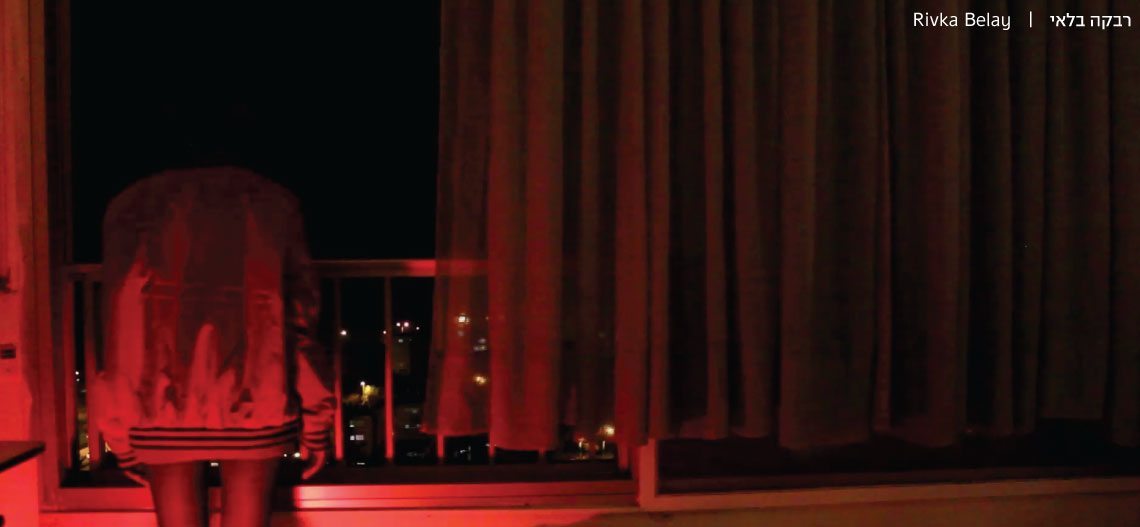
Home. Land.
Photographs by "OLIM" Students
Opened: June 6, 2017, closed: October, 2017 | Art directors: Chen Saar Cohen, Assaf Gamzou | Catalogue designer: Neta Harel | Artists: Rivka Belay, Konstantin Chumakov, Stefanie Mekler, Sam Griffin, Moshe Bukhman, Miriam Zimberknopf, Mariya Kol Yakov, Tanya Gershman, Viktoria Shelkovich, Hadar Lubmanh, Dina Wecker, Avnat Levy, Noam Dor, Gal Granot
The exhibition Home. Land. displays photos of “Olim” students of art, who participated in a workshop held by the Koret International School for Jewish Peoplehood Studies at Beit Hatfutsot, in cooperation with the Ministry of Aliyah and Integration. 14 students display various visual works (video art, photography, and displays.
Children of Abraham
A Jewish Revival in Africa - Jono David
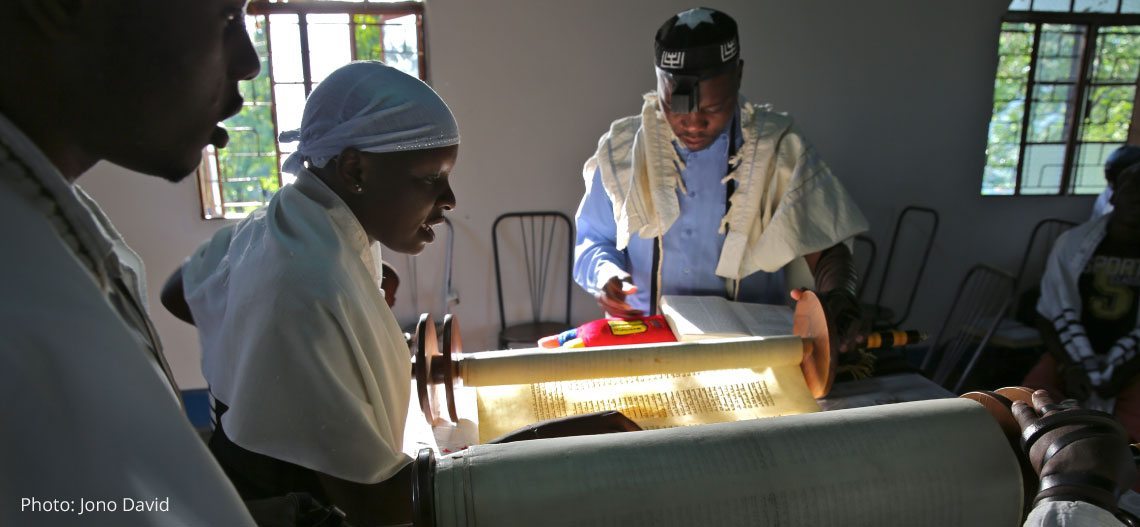
Children of Abraham
A Jewish Revival in Africa - Jono David
Opened: February 2016, closed: June 2017 | Curators: Amitai Achiman, Asaf Galay
According to Jewish tradition, Abraham and Sarah were the first Jews and the parents of the Jewish people. All Jews, whether they were born Jewish or are converts, are considered to be the Children of Abraham and Sarah. Photographer Jono David captures the amazing phenomenon of a Jewish revival in Africa. A convert to Judaism, when called to the Torah, is blessed as a child of Abraham. The love affair between the Jewish people and North Africa began in the time of Abraham and Sarah, who fled the great famine in Canaan (ancient Israel) and went to Egypt. North Africa was the home of many Jews, from the destruction of the First Temple until the end of the 20th century. In the 19th century Jews immigrated to the south of the continent. Today, in the 21st century, northern Africa has been drained of most of its Jewish inhabitants, while southern Africa has lost well over half. However, a Jewish renewal is beginning in the center of the continent as tribes adopt Jewish ways of life. The following exhibition is a glimpse into a fascinating new phenomenon still unknown to many of us. “He who travels the road less travelled will see things seen by few.” This saying encapsulates the work of photographer Jono David, an artist who has dedicated himself to documenting the Jews of Africa. This intimate photo exhibition will include a selection of David’s spectacular photos depicting a variety of communities of converted Jews throughout Africa. The focus of this exhibit is on community leaders and members, improvised synagogues, cemeteries and monuments, special Judaica items, Jewish holidays and local celebrations.
"Avraham Avraham" and "Sarah Sarah"
Nira Pereg
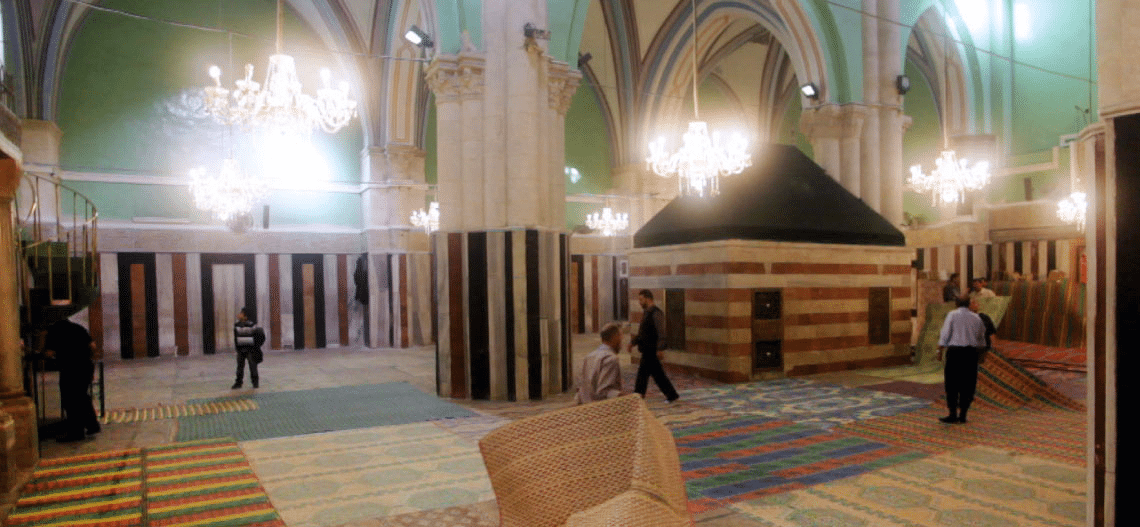
"Avraham Avraham" and "Sarah Sarah"
Nira Pereg
Opened: February 2016, June 2017 | Curators: Amitai Achiman, Asaf Galay
According to Jewish tradition, Abraham and Sarah were the first Jews and the parents of the Jewish people. All Jews, whether they were born Jewish or are converts, are considered to be the Children of Abraham and Sarah. Video artist Nira Pereg explores the interaction between Jewish and Muslim worship at the Cave of the Patriarchs. This cave according to the Bible in Genesis, was purchased by Abraham as a burial place for Sarah. Abraham was also the father of Ishmael, the father of the Arab nation. Video artist Nira Pereg filmed the moments when the prayer hall in the Cave of the Patriarchs (Cave of the Machpelah) changes from Muslim to Jewish and vice versa, and photographer Jono David chose to aim his lens at the renewal of Jewish identities in Africa. “Abraham Abraham”and “Sarah Sarah”were filmed at the Cave of the Patriarch, also known as the Ibrahimi Mosque, in Hebron. Holy both to Muslims and Jews, the Cave has long been a place of controversy and violence. These works portray the results of this explosive situation, and describe the “status quo” that regulates use of the Cave and is administered by the Israeli Defense Forces.
Italian Jewish Renaissance
The Beauty of Italian Judaica
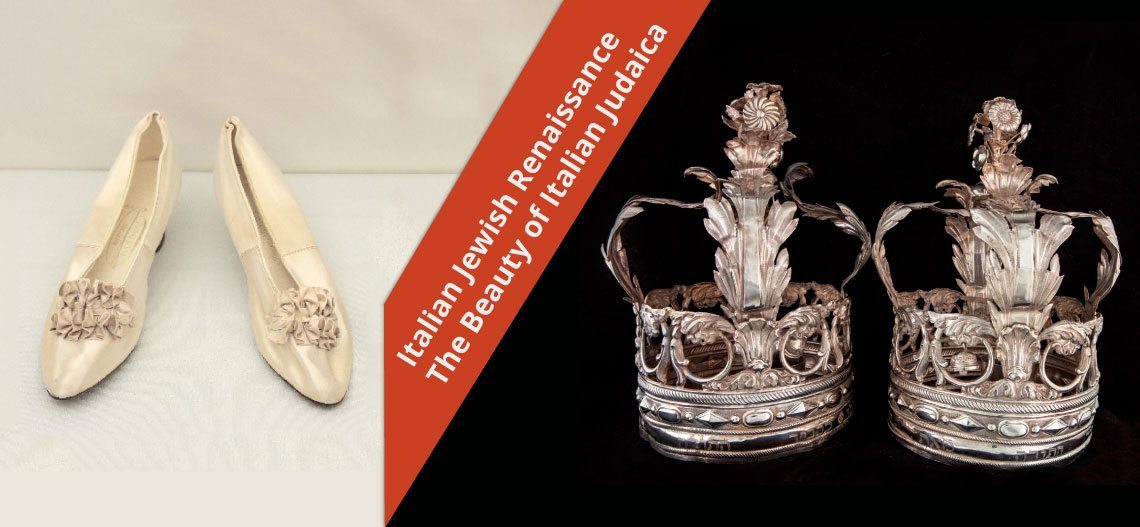
Italian Jewish Renaissance
The Beauty of Italian Judaica
Opened: March 2016, closed: January, 2017 | Curator: Micol Schreiber Benarroch | Chief Curator: Dr. Orit Shaham Gover | Curatorial and Research Advisor: Andreina Contessa Ph.D. | An exhibition of artifacts from the U. Nahon Museum of Italian Jewish Art, Jerusalem 
Italian Jewish Renaissance showcases the elegance, refinement and harmony that characterize Italian Jewish culture. By combining their own traditions with Italian aesthetics, Jewish artists have created works of rare quality. Sacred Jewish objects are decorated with the finest techniques and motifs of Italian art, everyday items are imbued with aesthetic value, and beauty is pursued through technical skill. This spectacular exhibition is a tribute to the synergy of Italian Jewish art. Most of the 40 objects on display date from the golden age of Jewish art in Italy between the Renaissance of the fifteenth century and the Risorgimento or Italian National Revival of the nineteenth century. Inspired by their cultural surroundings and supported by wealthy patrons, Jewish artists merged the spiritual with the material to produce sacred objects of artistic importance. Precise decorations integrated style with theme. The Jewish tradition of using and creating fine objects to beautify the religious commandments had reached its artistic apex. The synergy between Jewish content and Italian artistic influence continues today. Italians have long decorated their synagogues with astonishing embroidery. The parochet – the curtain covering the ark of the Torah – designed by Emanuele Luzzati is a modern example of this tradition. The Shabbat candlesticks created by Luigi Del Monte are another contemporary highlight of the exhibition.
Looking to the North and West
From the East End to Golders Green
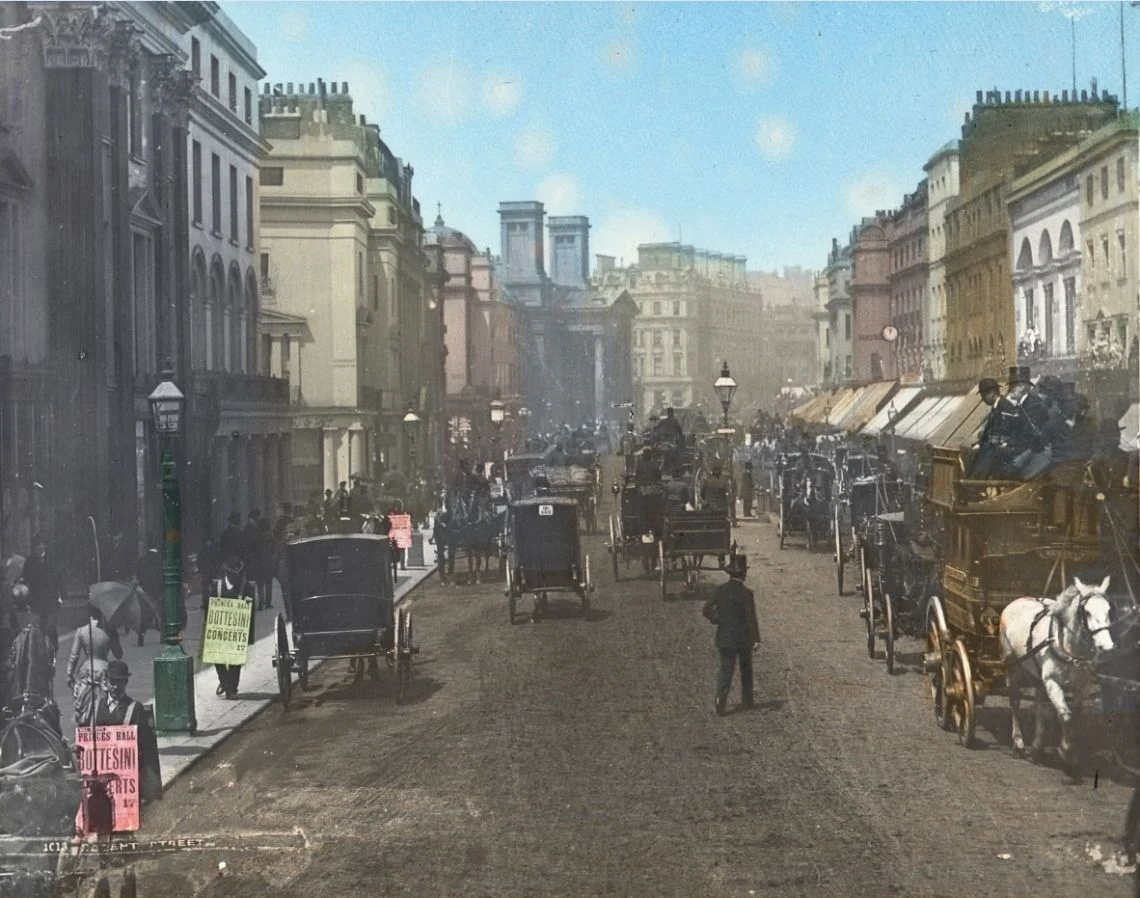
Looking to the North and West
From the East End to Golders Green
Opened: October, 2014, closed: March 2016 | Curators: Avichai Halperin, Asaf Galay
“I look at Whitechapel and think to myself: if London is so cheerful, how will it be in America?!” (Sholem Aleichem, “Motle son of Peisi”) In the late nineteenth century, the dream of a different and better life led millions of Jews to emigrate from Eastern Europe to the New World. London, which in many cases was the last stop before their longed-for destination, offered refuge to groups of immigrants who did not pursue their journey to its end. These immigrants, who settled in London’s East End, distinguished themselves from the city’s established Sephardic community, and reconstructed their former lifestyle in London. White Chapel Street, otherwise known as “London’s shtetl,” was the first stop for immigrants from Eastern Europe. They live there in crowded, impoverished conditions and dreamt of moving to the north and west of the city, while establishing education systems, religious institutions, philanthropic organizations, and workers’ unions. Many of them were small traders or textile workers. Among the immigrants and refugees who ended up in this area of London were a significant number of Jewish intellectuals and revolutionaries. They wrote pamphlets, published literary reviews, and participated in radical assemblies.
United Colors of Judaica
Eliahou Eric Bokobza - Multiple Jewish Identities: A New Perspective
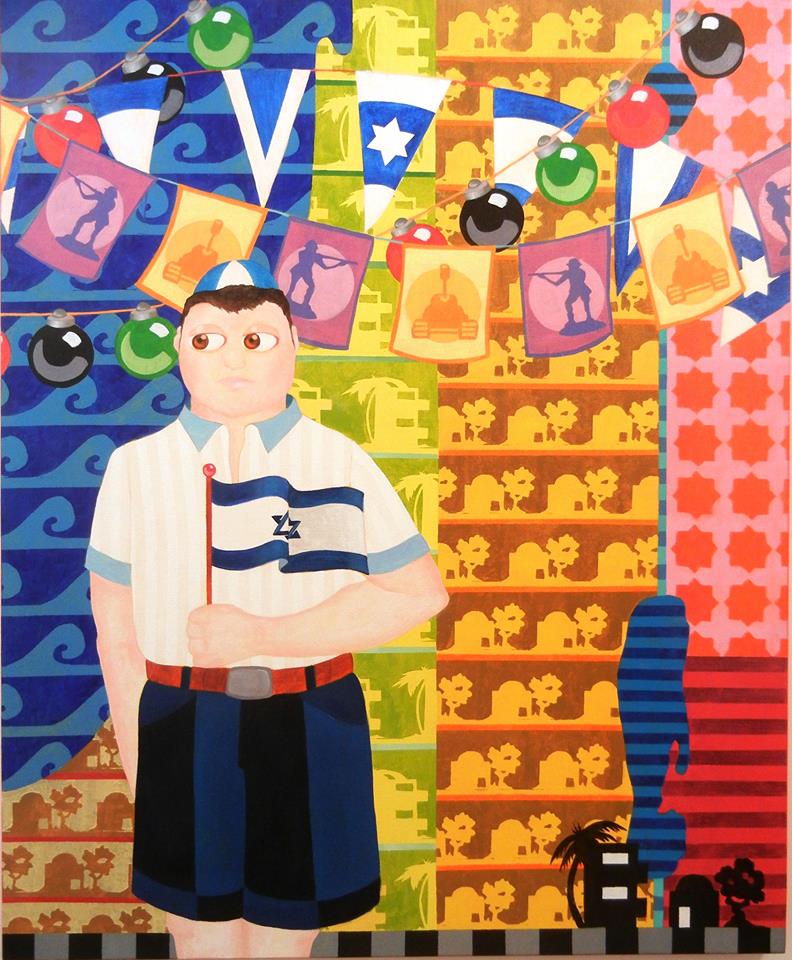
United Colors of Judaica
Eliahou Eric Bokobza - Multiple Jewish Identities: A New Perspective
Opened: July 2015, closed: February 2016 | Chief Curator: Orit Shaham Gover | Exhibition Curator: Dr. Smadar Sheffi
United Colors of Judaica, a solo exhibition by Eliahou Eric Bokobza, is an inspiring discussion of the ethnic, religious and cultural aspects of Jewish identity. The exhibition has three main sections: La Famiglia – a Seder or Shabbat table representing national festivals and personal dramas alongside three family trees (genealogy); Holidays – a series of drawings depicting Jewish festivals; and Lifecycle – a series of drawings depicting milestone events in the life of a Jewish male. Items from the Judaica collection of the Bar David Museum at Kibbutz Baram, William Gross Collection and Beit Hatfutsot collection are displayed alongside the paintings in the Holidays and Lifecycle sections and as part of the Famiglia table display. These items from across varying historical periods demonstrate an additional link to the Jewish past. United Colors of Judaica echoes a will and a hope to recognize secular Judaism as a complete and uncontested identity. Eric Bokobza was born in Paris to Jewish Tunisian parents. His family immigrated to Israel in 1969. Bokobza held his first solo exhibition in 2000. He has since held several solo exhibitions, including “Bezalel – Version B” at the Artists House in Jerusalem (2006) marking Bezalel’s 100th anniversary; “Jaffa” at the Gutman Museum, Tel Aviv (2010); and “Nationality: Jewish” at the Ein Harod Museum of Art (2012). In 2014, Bokobza exhibited at the Jewish Museum in Amsterdam. He has participated in group exhibitions in museums throughout Israel, and in Berlin in 2005 his “The New Hebrews: A Century of Art in Israel” was displayed. His works are found in the collections of the Israel Museum, Ein Harod Museum, the Knesset and in private collections.
Mazal U'Bracha
(Good Fortune and a Blessing)
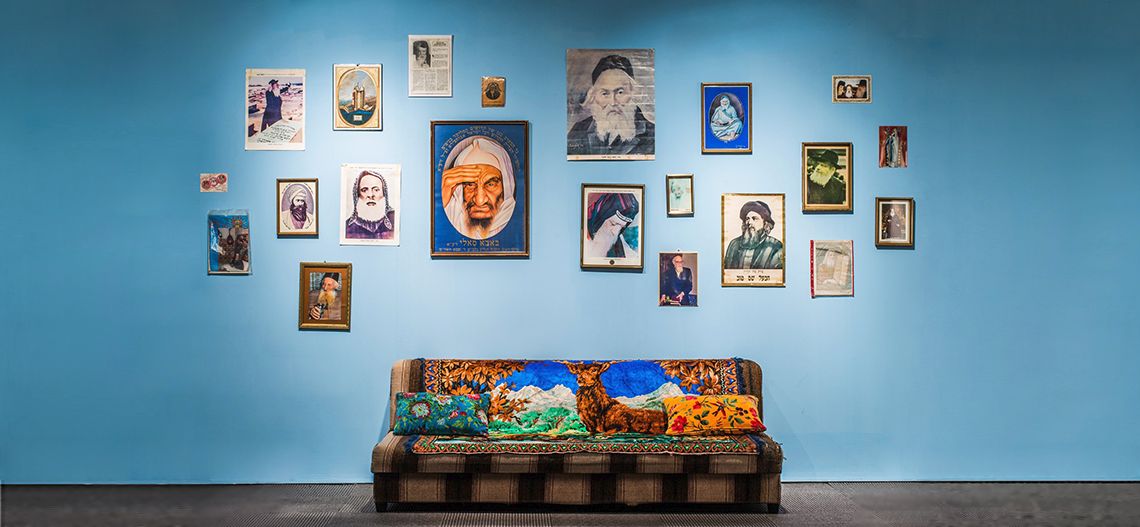
Mazal U'Bracha
(Good Fortune and a Blessing)
Opened: July 2014, closed: December 2015 | Exhibition Curator: Carmit Blumenson | Artists: Shai Azoulay, Deganit Berest, Yair Garbuz, Yosef-Joseph Dadoune, Gary Goldstein, Raafat Hattab, Larva (Maya Attoun & Meital Katz Minerbo), Assi Meshullam, Ravit Mishli, Shony Rivnai, Avi Sabah, Khen Shish, Nurit Yarden
The exhibition unfolds an array of popular and social references to amulets and signs of luck, as manifested in contemporary Israeli art. It explores themes and concepts such as superstition, Jewish and universal myths, blessings, prayers, and folk remedies from diverse perspectives which range from faith and acceptance to a critical approach. The exhibition route begins with a presentation of authentic faith-mediating objects, both ancient and modern, from William Gross’s rich collection, and continues with processed manifestations of more sophisticated references to worship “aids” as they take shape in the work of 13 contemporary artists. All of the participating artists blend a private-intimate touch with social-collective contexts, the conscious and the unconscious, which they assimilate into a personal artistic language. Each in his/her own way relies on the cultural materials which stimulate him, introducing questions regarding his own cultural-genetic code and that of his surroundings, which pertains to questions of identity and affiliation. The featured works are based on recognition of the human need to belong and feel protected, stemming from the realization that culture, myths, folklore, and faith form a dynamic system which constantly nourishes itself by means of accumulation and selection, and through a sense of belonging. Most of the works were created especially for the exhibition. They allude to the world of mysticism, while corresponding with the permanent display around them. The exhibition includes amulets from the Gross Family collection, as well as a video “Hidden Details”: presenting details from the works of the 13 artists participating in the exhibition.
Dream Weavers
From Jewish Tailors to Top Fashion Designers
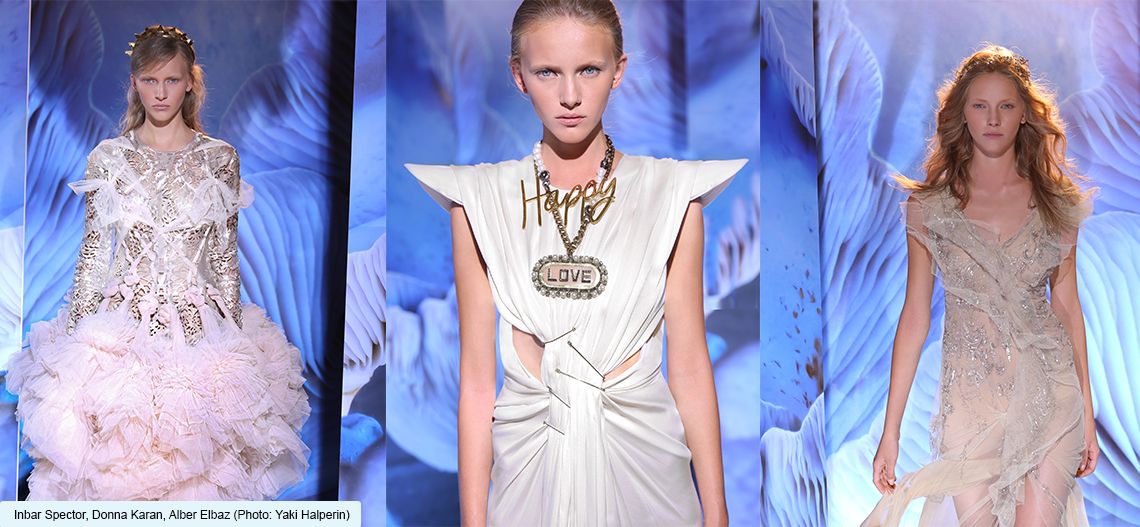
Dream Weavers
From Jewish Tailors to Top Fashion Designers
Opened: November 2014, closed July 2015 | Chief Curator: Dr. Orit Shaham Gover | Exhibition Curator: Shelly Verthime | Curator: Asaf Galai | Video Art Designer: Ran Slavin | Design: Tucan Design Studio | Artists: Ralph Lauren, Donna Karan, Alber Elbaz, Sonia Rykiel, Michael Kors, Marc Jacobs, Arnold Scassi, Diane von Fürstenberg, Victoria’s Secret, threeASFOUR, Nicole Farhi, Ilana Goor, Sarah Moon, Yigal Azrouël, Kobi Halperin, Avshalom Gur, Natalie Capell, Avi Tenzer, Inbar Spector
From tailors to cultural heroes – the contribution of Jewish designers to the world of fashion. For the first time in Israel, a group exhibition featuring dresses, jewelry and accessories from an international dream team of 20 Jewish fashion designers. Some of the works were especially created for this exhibition at Beit Hatfutsot. The exhibition presents the fashion world’s greatest success stories, and the trajectories followed by traditional Jewish tailors as they immigrated to New York to become workers in early-twentieth-century sweatshops, founded the first large clothing companies such as Levi Strauss’ jeans company, and went on to establish the world’s international fashion empires, which provide consumers with clothing ranging from ready-to-wear outfits to refined couture confections that reflect our collective dreams. “Dream Weavers provided me with an unprecedented opportunity to learn about the fashion world and to better understand the ways in which it impacts our lives and shapes our perceptions,” says Dr. Orit Shaham Gover, the chief curator of Beit Hatfutsot. “At the same time, this process also raised numerous questions: What do these clothes say about us as a society? Do clothes truly make their wearers? And to what extent can one detect the Jewish origins of these designers in their works? The answers are in the eyes of the beholder.” Exhibition curator Shelly Verthime quotes Ralph Lauren: “I don’t design clothes, I design dreams.” And Alber Elbaz: “I design from my heart, making the fantasy, the dream, into a reality.” Dream Weavers is an exhibition about the creators and producers of fashion, who thread stories and weave dreams. The display focuses on the beauty of their creations, which are presented as if suspended in midair. In this spirit, the gallery was designed as a surreal space in which the play of mirrors and reflections creates an illusion of floating in a space between reality and dream.
Amy Winehouse
A Family Portrait
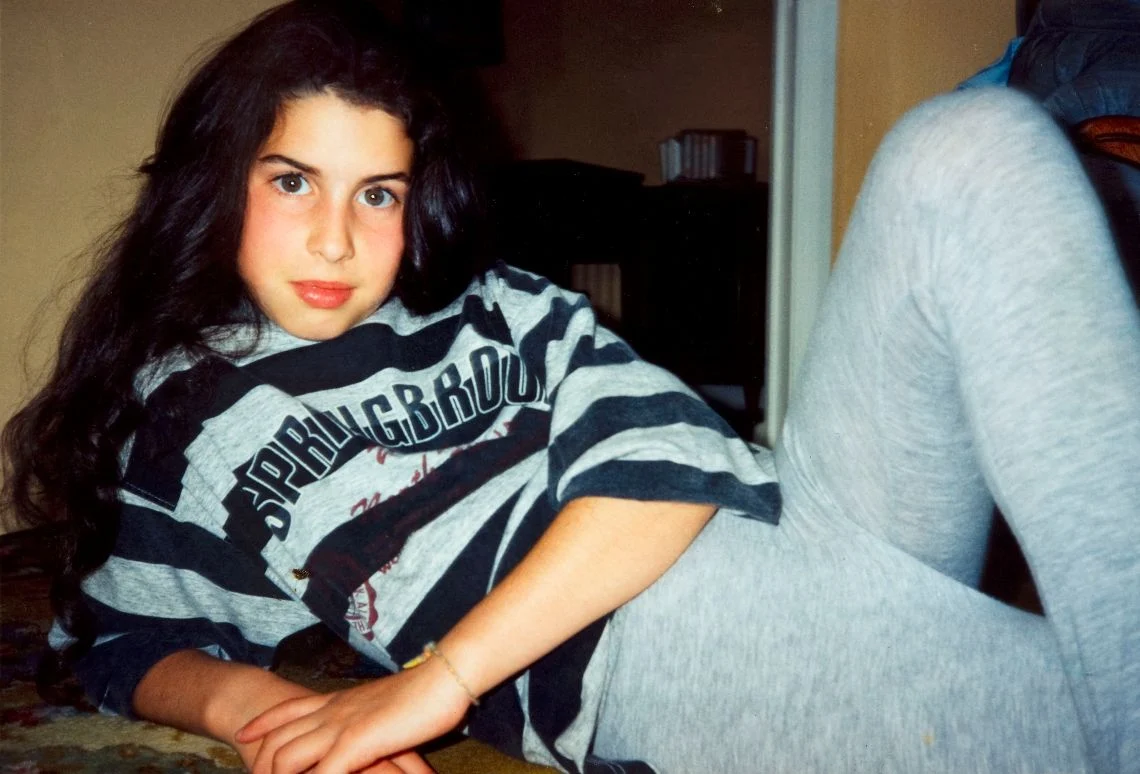
Amy Winehouse
A Family Portrait
Opened: October 2014, closed June 2015 | Chief Curator: Orit Shaham Gover | Exhibition Curators: Alex Winehouse, Elizabeth Selby, Jewish Museum London | Curator in Israel: Asaf Galay
The career of Amy Winehouse (1983-2011) spanned eight years and she achieved huge critical acclaim for her albums and live performances. Her worldwide success brought many plaudits including Grammy, BRIT and Ivor Novello awards. In 2011 Back to Black was the best-selling album in the UK in the 21st century. Amy Winehouse: A Family Portrait is an original exhibition about Amy Winehouse, curated by the Jewish Museum London with help from her brother Alex. After being successfully displayed in London, the exhibition traveled to the Jewish Museum in Vienna and then to Beit Hatfutsot. The exhibition includes a selection of Amy’s belongings, such as her guitar, record collection and iconic outfits. This exhibition celebrates her passion for music, fashion, London and her family. Photographs are an important part of the exhibition and Amy’s own battered suitcase crammed with photographs of friends and family was on display. It is this suitcase that Amy insisted her father to come to look through with her a couple of days before her death in 2011 – the last time he saw her. The exhibition is taking visitors beyond the hype to show them Amy’s life in a family context. Alex Winehouse: “Amy was someone who was incredibly proud of her Jewish-London roots. We weren’t religious, but we were traditional. I hope that the world gets to see this other side not just of Amy, but of our typical Jewish family”. “Amy Winehouse – A Family Portrait” offers us a look at the reality of tradition and innovation, uniqueness and integration, external and internal, of the lifestyle and identity of British Jewry. A preamble to the exhibition presented the story of the great Jewish migration to London at the late 19th century, of which the Winehouse family was a part of. The Amy Winehouse Foundation - The tragic passing of Amy on July 23rd 2011, aged 27, left not only her family and close friends heart broken, but had a huge impact on people all over the world. Amy’s family launched the Amy Winehouse Foundation on September 14th 2011, on what would have been Amy’s 28th birthday. The Amy Winehouse Foundation has been set up in Amy’s memory to prevent the effects of drug and alcohol misuse on young people. They also aim to support, inform and inspire vulnerable and disadvantaged young people to help them reach their full potential. Alex Winehouse, Amy’s brother, is the Creative Director of the Amy Winehouse Foundation.
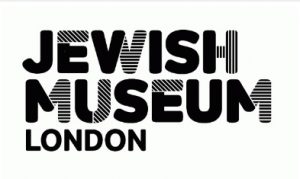

Dreyfus
The Story of a French Jewish Family
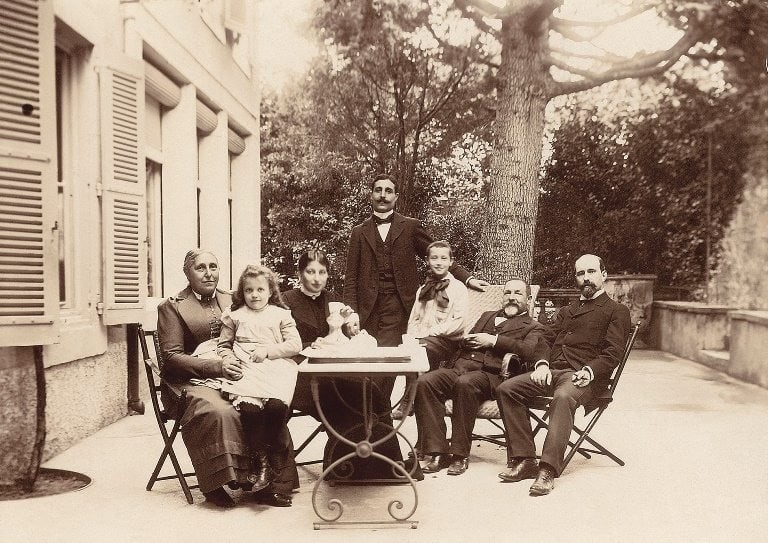
Dreyfus
The Story of a French Jewish Family
Opened: March 2014, closed: September 2014 | Exhibition Curator: Simona Di Nepi | Chief Curator: Orit Shaham Gover | In collaboration with the National Library of Israel
Captain Alfred Dreyfus was a French citizen and a patriot. In 1894, his life changed when he was convicted of high of treason and sentenced to life imprisonment on Devil’s Island, off the coast of South- America. During Dreyfus’ long years on the island, his wife Lucie, brother Mathieu, and his devoted supporters, fought for his innocence and, after five years, obtained a retrial. Dreyfus was once again found guilty but, due to his weakened state, he received the presidential pardon and could at last return to his family. It would take seven more years for his name to be cleared and for Alfred Dreyfus to be, at long last, a free man. The exhibition Dreyfus – The Story of a Jewish French Family reveals the lesser-known part of the Affair: the private, ‘behind-the scenes’ story of Alfred Dreyfus and those close to him. By presenting the passionate judicial fight for Dreyfus’ acquittal, the exhibition raises questions on fundamental issues such as anti-Semitism, racism and human rights- all of which have become synonyms of the Affair. For the first time in Israel, the items on display tell the touching family story. Amongst these are Lucie’s Siddur (prayer book), an embroidered carpet depicting Jewish festivals that once belonged to Alfred, and beautiful family photographs. The items are on loan from the Musee d’Art et d’Histoire du Judaisme in Paris, and Yaël Perl-Ruiz, Alfred Dreyfus’ great grand-daughter. The exhibition at Beit Hatfutsot is the result of her initiative, and she is the true driving force behind this venture. The exhibition also features original letters, formerly in the private Dreyfus family collection, now on loan from the National Library of Israel and the Muse’e d’Art et d’Histoire du Judaisme. This correspondence includes love letters between Alfred and Lucie. In addition to following the story of the Dreyfus family during the Affair, the exhibition also explores their lives during the two World Wars, and that of their descendants in present days. In two historical periods, the family story is intertwined with the fate of the Jews in France: it highlights their integration into French society and culture both in the inter-war period and in the second half of the last century. Here it stresses the major contribution of Jewish artists and philosophers. The exhibition concludes with a documentary presenting interviews with Alfred Dreyfus’ descendants, leading intellectuals and young entrepreneurs. It asks them to what extent the Affair influenced their identity as French Jews, and what it means to be Jewish in France today.
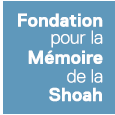
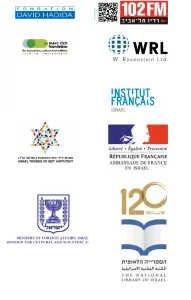
An Island within an Island
The Jews of Cuba
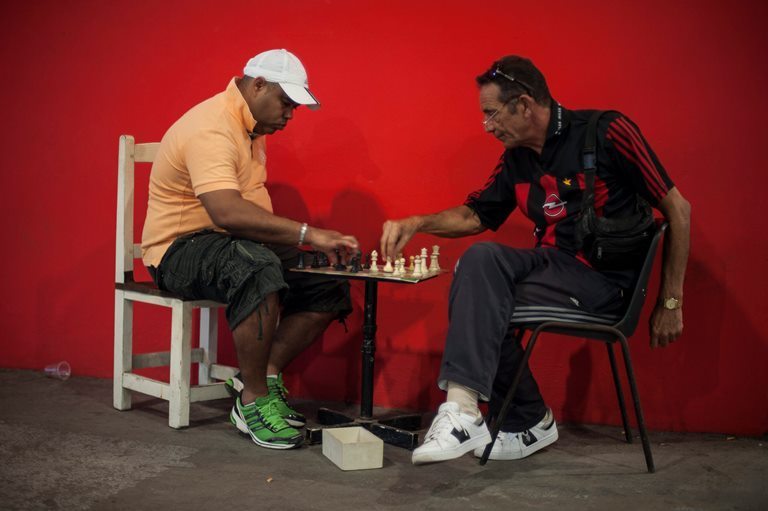
An Island within an Island
The Jews of Cuba
A B See Do
Adventures in Hebrewland
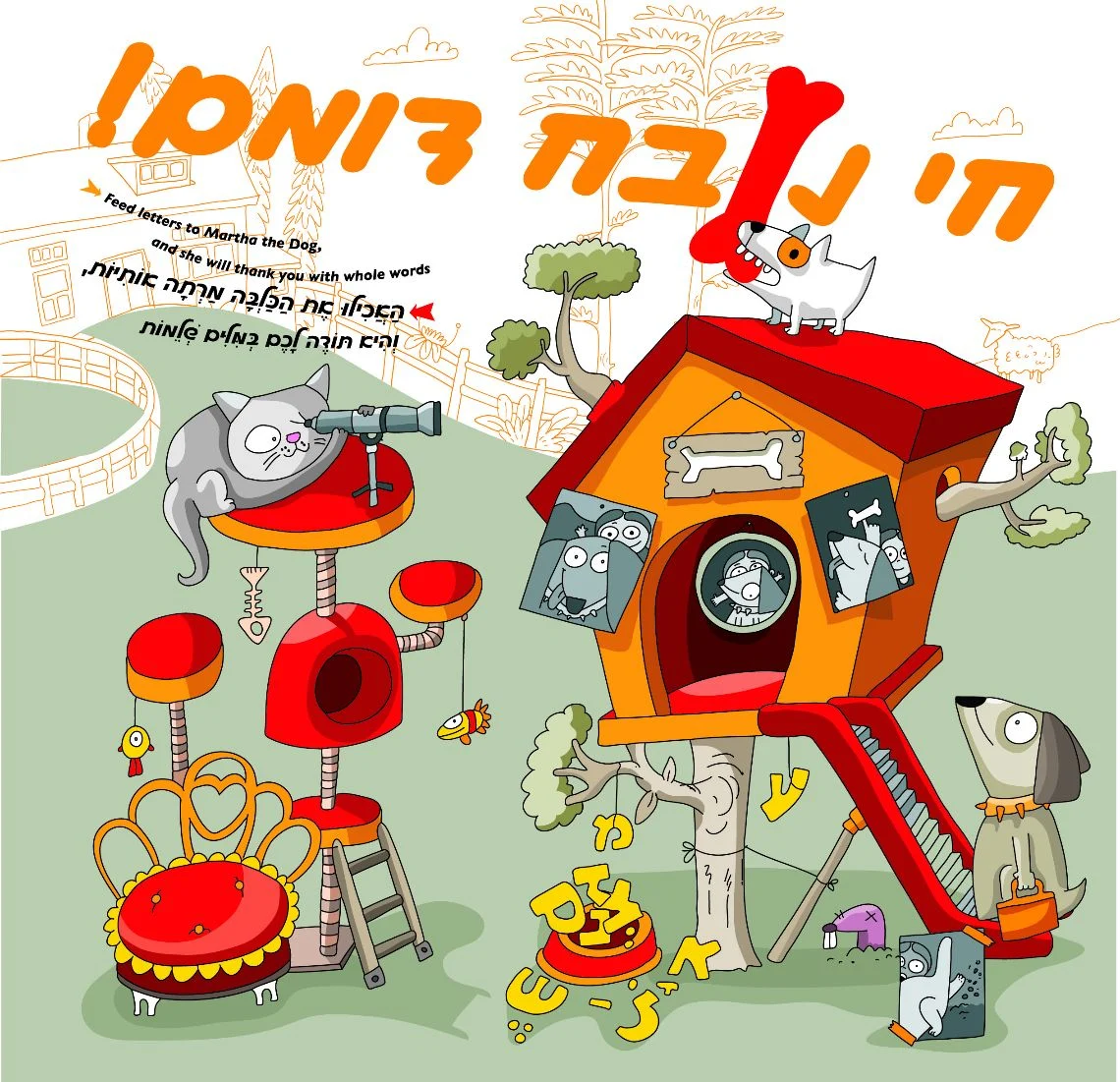
A B See Do
Adventures in Hebrewland
Opened: July 2011, closed: August 2014 | Initiation and Concept Development: Tamar Hadar, Efrat Adiv – CMOTA | Curators: Tamar Hadar, Efrat Adiv, Smadar Keren | Project Manager: Smadar Keren | Design and planning: Eliya Shapiro | Language Consultant & Script Author: Ruvik Rosenthal | Illustrations: Eitay Riechert | Typography: Danny Meirav (Hatayas) | Planning, Production and Media: Breeze Creative Ltd. – Sagi Yehezkel, Ben Genislaw, Reut Shahar, Guy Sagiv
The exhibition A B See Do brings to life the essence of the Hebrew Language and engages all audiences, especially families with young children. Using cutting edge contemporary museum media to create a multi-sensory experiential exhibition aimed at ages 3-10 along with their parents and other adult relatives and friends. The exhibition transmits the idea that language is the foundation for learning and focuses on the rebirth of the Hebrew language and the distinctiveness of Hebrew. The exhibition also emphasizes a respect for history, places value on reinvention, pays tribute to the society where the language was developed, and highlights the vast strength that a language has in communicating heritage and tradition.
Forging the Melting Pot
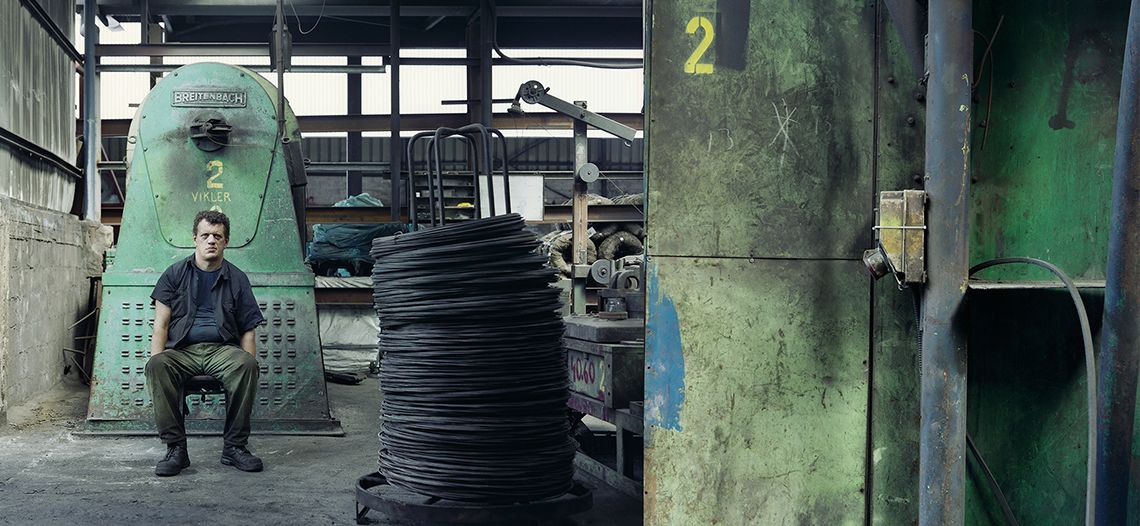
Forging the Melting Pot
Opened: April 2014, closed: July 2014 | Curators: Amit Zoller, Yaacov Israel | Photography & Media Studies at Wizo School of Design | Artists: Yaniv Alon, Poli Blum, Sophie Brooks, Yael Goldsmid, Nofar Hasson Hendelman, Ofir Yona, Karin Lapidot, Hadas Mualem, Doron Oved, Uzi Porat, Hagai Frid, Orly Perl Nir, Omry Keren Lapidot, Rotem Roznai, Nadav Rotem, Roni Shvide Hazan.
The exhibition displays 17 art works, all photographs of students at WIZO Haifa Academy of Design and Education. The works attempt to recreate and interpret current life in Israel. As one image follows another, a viewpoint is formed which suggests something about us as a society and a culture as seen through the eyes of young photographers surveying the landscape, the people, and social and cultural phenomena. The varied points of view represented in the exhibition constitute a pictorial journal. Taken together, they give us yet another perspective of the components of Israeli society.
Here Comes the Bride
Bridal Gowns Embroidering a Jewish Story
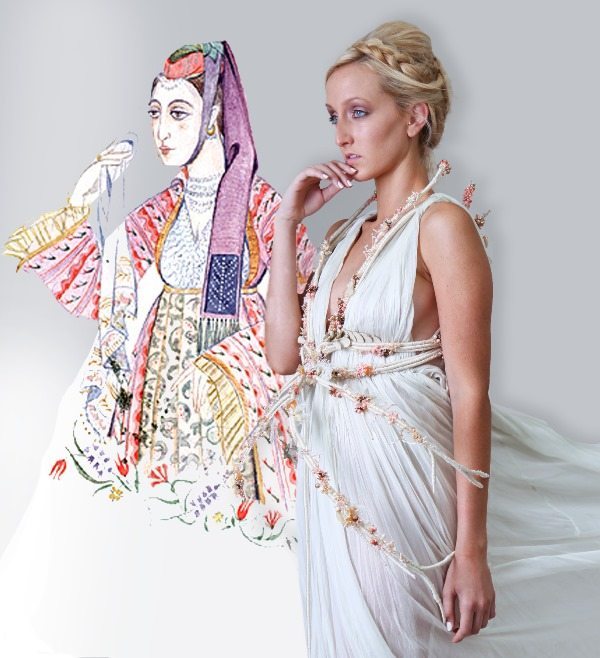
Here Comes the Bride
Bridal Gowns Embroidering a Jewish Story
Opened: September 2013, closed: April 2014 | Curators: Neta Harel, Ronen Levin | Chief Curator: Dr. Orit Shaham Gover | Designers: Roth-Tevet, Leah Perez | Tutorial Staff: Ronen Levin, Daliya Cohen Bat-Shimon, Ziva Seidler | Special thanks: Center for Jewish Art and Life, The Israel Museum, Jerusalem | The exhibition “Here Comes the Bride”, was initiated by the Israel Friends of Beit Hatfutsot
“Here Comes the Bride” was initiated by Mr. Gedeon Hamburger (chair) and Ms. Irit Admoni Perlman (director) of the Israel Friends of Beit Hatfutsot, along with Mr. Motty Reif, member of the Board of the Israel Friends of Beit Hatfusot, together with the Fashion Department at the Shenkar College of Engineering and Design. The result of this unique cooperation is a display of exceptional wedding gowns, decorated with handmade embroidery, inspired by artifacts from Beit Hatfustot. 14 Shenkar third year fashion students, all tutored by Ronen Levin, took part in this project: they explored the core exhibition of the museum and were then requested to choose a Jewish community and present it in a personal narrative through their design. Items displayed at Beit Hatfutsot’s permanent and temporary exhibitions as well as collections from the museum’s documentation center, inspired unique bridal gowns designs, expressing the various styles and traditions of many Jewish communities. These include amongst others – Yemen, Iraq, Turkey, Salonika, Spain, Poland, Germany, Morocco and Algiers. Some of the students were influenced by visual imagery including: synagogue models, Judaica, Ketubas (marriage contracts), musical instruments, Jewish embroidery, dowry chests and family photos. Others were inspired by folklore music and Jewish mysticism (for example the myth of the “Dibbuk”). The exhibition displays 13 wedding gowns and 1 bridegroom’s outfit. Alongside the comprehensive research studies conducted by the students in the preparation of the gowns, are the sketches representing their inspirations for the design: the sketches record each stage in their progress and include drawings and paintings, texts, images and stories from the permanent and temporary exhibition catalogues, patterns, fabrics and embroidery samples. The sketch books describe each stage in the development of the students’ conceptual designs. The ideas and inspirations are expressed in innovatively designed wedding gowns using traditional materials and handmade embroidery.
J.D. Kirszenbaum 1900-1954
The Lost Generation
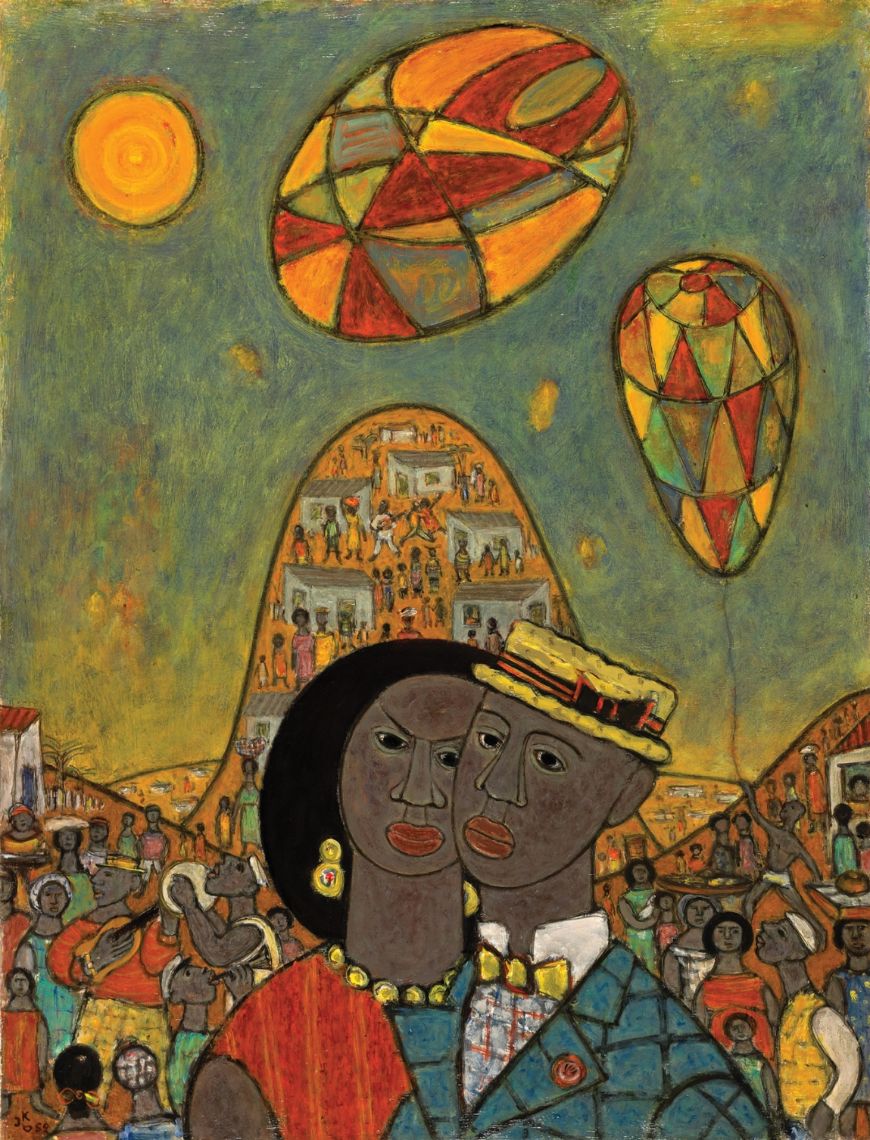
J.D. Kirszenbaum 1900-1954
The Lost Generation
Opened: July 2013, closed: January 2014 | Curator: Dr. Caroline Goldberg Igra | Designer: Museum of Art, Ein Harod | Chief Curator: Dr. Orit Shaham-Gover
Jechezkiel David Kirszenbaum (1900-1954) represents a generation of Jewish artists who, faced with an increasingly hostile and repressive political environment and a dearth of institutions capable of stimulating their artistic development, were compelled to leave their native Eastern Europe. Those artists wandered around Europe between the two World Wars, some of them gained recognition and presented their works in exhibitions and Museums. Their blossoming came to an end with the Nazi regime that not only persecuted the Jewish artists but also destroyed many of their works. After the war many of them were forgotten and only a small part of their work remained. J.D. Kirszenbaum was one of those artists. The exhibition J.D. Kirszenbaum 1900-1954, The Lost Generation displayed at the Art Museum in Ein Harod and now at Beit Hatfutsot, is a tribute to a very important artist and his art. The exhibition, offers a profound visual record of one individual’s effort to survive and even thrive under adverse conditions. Kirszenbaum’s work encompasses the avant-garde artistic development in both Berlin and Paris during the 1930s, the height of displacement and persecution under the Nazi Regime, and the period of recovery that followed. Taken as a whole, his artistic career explores the scope of emotional responses, from celebration to despair, humiliation to hope, which represent that generation of Eastern Europeans swallowed by Nazi terror. Kirszenbaum’s peregrinations – from his native Staszow to the Weimar, Berlin and to Paris, from southern France to Brazil and Morocco – exposed him to the most avant-garde artistic developments in Western Europe during a period of great unrest. His oeuvre illustrates his attempt to simultaneously escape from, and memorialize, the life he left behind in the shtetl; including imagery of local folklore mixed with testimony to deportation and despair. Exceeding the boundaries of reality upon which it was based, Kirszenbaum’s oeuvre captures the magic of the human spirit that rose from the ruins of the Shoah and accordingly, functions as an expressive last sigh, or expiration; a eulogy to loss. The reconstruction of Kirszenbaum’s career was complicated because of the total destruction of the artist’s studio, and all those works housed therein, during the war. Kirszenbaum’s return to life was greatly assisted by his relationship with Alix de Rothschild. She understood his artistic gifts, welcomed him into her family and supported him both spiritually and financially, encouraging his return to teaching and painting.
Courtesy of:
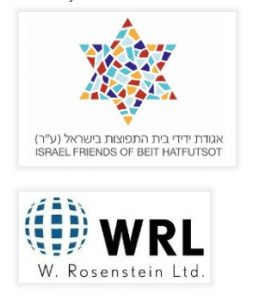
This Great Sight
Moshe Rosenthalis
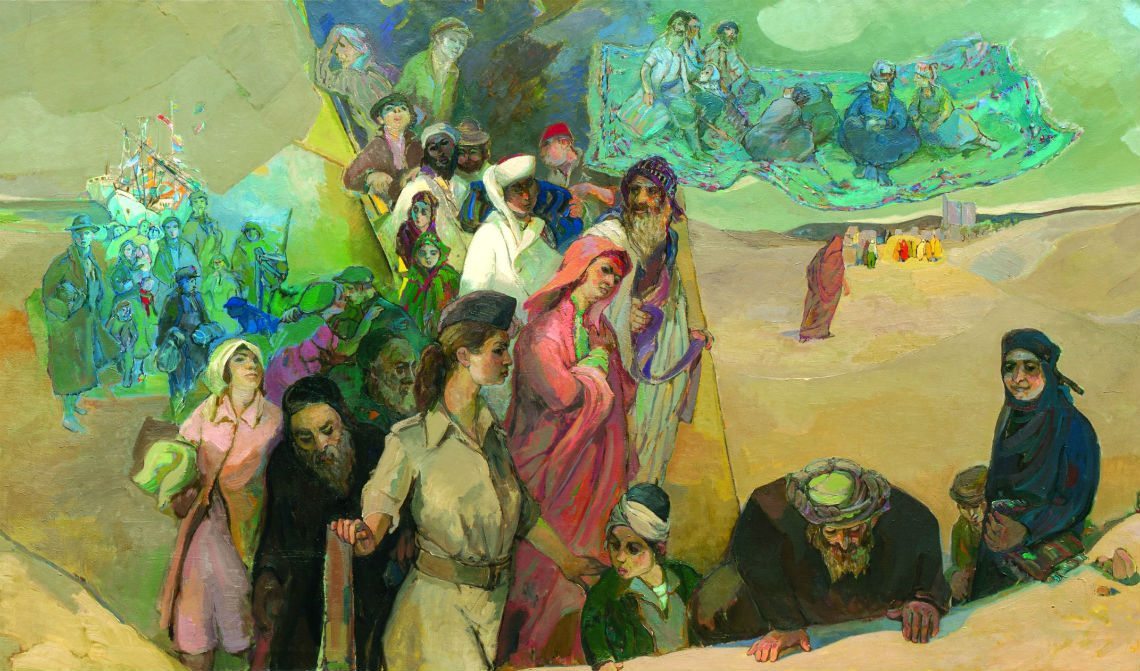
This Great Sight
Moshe Rosenthalis
Opened: March, 2013, closed: July 2013 | Curator: Alec Mishory | Exhibition Initiator: Avner Rosenthalis Director of the Curatorial Department: Smadar Keren
Moshe Rosenthalis (1922-2008) painted four monumental paintings (1978-1980) in which he depicted a visual narrative of the Jewish People history. The series titles are arranged in chronological order: The Exodus from Egypt, From the Inquisition until the Immigration to Jewish Palestine, From the Israeli War of Independence until the Settlement of the Negev Desert, Jerusalem The paintings were commissioned by businessperson Saul Eisenberg for the board room of the ‘Asia House’ in Tel Aviv (1978). This location enabled but a small number of executives to see Rosenthalis’ works; they were never shown publicaly. Beit Hatfutsot has taken upon itself to expose these monumental paintings for the first time to the Israeli public. Their size is enormous: six meters wide and about a meter and a half in hight. The exhibit aims to display Rosenthails’ sketches, preliminary drawings and cartoons that served him in preparation for the monumental works next to the latter; through them, spectators would follow an Israeli artist’s fascinating creative process (for which he dedicated two years of profound research) in search of extraordinary images. The series of paintings’ subject matter, strangely as it may sound, is a rare phenomenon in the history of Israeli public art. The Israeli art field generally (and erroneously) assumes that visual narratives of Zionist dogmas automatically point to works commissioned and dictated by the political establishment. Consequently, such a notion assumes that the artist, responsible for the making of such works, succumbs to the dictation of one that commissioned the work. In contrast, the contents of Rosenthalis’ History of the Jewish People was entirely envisioned by him, with no intervention whatsoever by Eisenberg, who commissioned the works, or anyone else. The artist envisioned the beginning of Jewish history in the Ten Commandments, received by Moses on Mount Sinaiand given to the Israelites; he saw its final stages in the Zionist settlement enterprises of the Negev desert and the city of Jerusalem after 1967. His profound knowledge of Jewish culture and tradition enabled him to come up with an extensive array of visual motifs and images. The four paintings of The History of the Jewish People are, no doubt, the jewel in the crown of Rosenthalis’ artistic oeuvre, both realistic and abstract; they reflect the artist’s vigor and artistic expertise. Shy and hidden for decades, due to the Israeli art field’s command for abstraction during the 1960s and 1970s, the series re=appearance today makes a fascinating artistic event. Rosenthalis’ was ahead of the times in creating his visual summary of the Israeli experience. The exhibition is displayed in collaboration with Rosenthalis House.
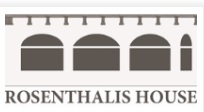
Threads of Silk
The Story of Bukharan Jewry
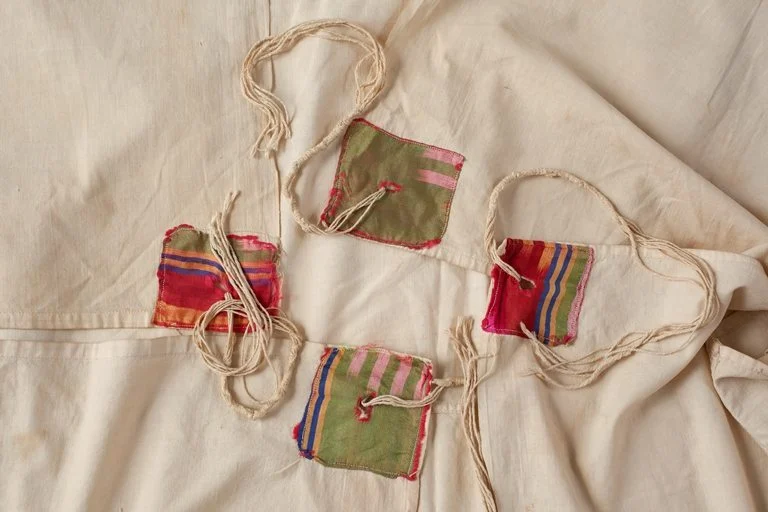
Threads of Silk
The Story of Bukharan Jewry
Opened: January 2013, closed: June 2013 | Curators: Orit Engleberg Baram & Dr. Meirav Balas | Designer: Ori Glazer | Project Director: Michal Houminer | Director of the Curatorial Department: Smadar Keren
A comprehensive exhibition devoted to the remarkable story of Bukharan Jewry. The exhibition “Threads of Silk” tells the story of an ancient Jewish community living along the Silk Road, and reveals its outstanding economic, cultural, and spiritual achievements. This community prides itself on its long and impressive history, which dates back to the exile of the Ten Tribes of Israel or, according to other sources, to Persian Jewry. This exhibition features artworks, sumptuous clothing, objects, embroidery, jewelry, historical and contemporary photographs, documents, and film footage that capture the customs, ceremonies, beliefs, culture, and aspirations of this rich and multifaceted community. This exhibition explores the life of Bukharan Jews in two different spheres: the first is the larger Bukharan sphere in which their identity was consolidated, and the second is the personal sphere. The Bukharan sphere is represented by artifacts related to life along the Silk Road, and to the Jewish community’s existence as a minority. The personal sphere focuses on the union between husband and wife and on the family – the most important unit in the life of this community. An important chapter of the exhibition is devoted to Bukharan Jewry’s strong connection to Zion, which led over the centuries to pilgrimages to the country, to the foundation of Jerusalem’s stately Bukharan neighborhood (built in in the late nineteenth century), and to a massive wave of immigration to Israel following the collapse of the Iron Curtain. This strong connection to Zion led many Bukharan Jews to immigrate to the country in the late nineteenth century with all of their possessions, which constitute true cultural treasures. These include photographs, documents, and objects that bespeak this community’s existence between East and West, and reflect a heterogeneous culture shaped by multiple artistic influences. The exhibition offers a glimpse of this rich cultural world, while revealing how the traditions consolidated over the centuries are still alive today in the Bukharan community. The term “Bukharan Jewry” pertains to the Jewish communities of Central Asia – present-day Uzbekistan, Tajikistan, and Turkemenistan – and derives from the name of the Emirate of Bukhara, which existed in this area from the sixteenth century to the early twentieth century. This exhibition tells the story of Bukharan Jewry from the time of its formation to the present, when few Jews remain in this region. The exhibition includes a selection of photographs by Zion Ozeri and Neil Folberg, which document the life of the Bukharan community in recent years. It also features artworks by community members, including Rima Arselanov and Arthur Ya’akobov. The exhibition “Threads of Silk: The Story of Bukharan Jewry” is a joint initiative of Beit Hatfutsot and of MK Amnon Cohen, a member of the Bukharan community. The exhibition is accompanied by a sumptuous catalogue that includes color and black-and-white photographs, and articles by historians and scholars in a range of fields.
The Absent Body
Body Imagery Between Judaism and Christianity in the Work of Eight Israeli Artists
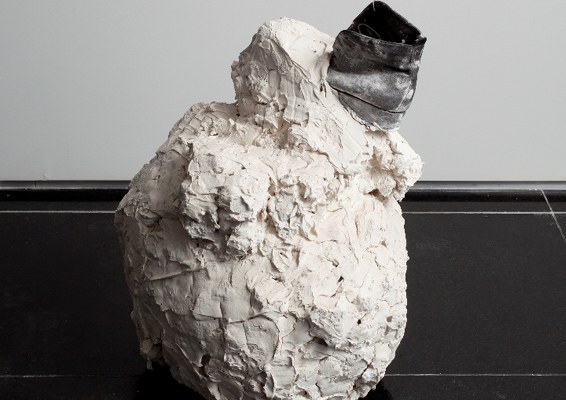
The Absent Body
Body Imagery Between Judaism and Christianity in the Work of Eight Israeli Artists
Opened: July 2012, closed: January 2013 | Curator: Irena Gordon | Director of the Curatorial Department: Smadar Keren | Artists: Etti Abergel, Larry Abramson, Pesi Girsch, Moshe Gershuni, Erez Israeli, Sigalit Landau, Motti Mizrachi, Michal Na’aman
The Absent Body – Body Imagery Between Judaism and Christianity examines works by eight Israeli artists, from the 1970’s to the present, in relation to their detachment from, longing for, and return to images of both the body and of divinity. This exhibition reveals the complex critical relations between Jewish and Christian thought, their mutually exclusive aspects, and their influence on one another, and underscores the centrality of both these traditions to the featured works. These works bespeak the tension between the immateriality of God in Judaism and his concrete material existence in Christianity, while addressing a range of aesthetic and theoretical concerns pertaining to visual representation and its place in Israeli culture. The conception underlying this exhibition is based on the longstanding understanding that the image of body in Israeli art is never taken for granted, but is rather a constantly elusive presence demanding to be redefined. The Absent Body brings together members of several different artistic generations and stylistically diverse works in a single space, and reveals a central conflict at the heart of secular Israeli experience as it has been given expression over four decades of artmaking. The exhibition The Absent Body at Beit Hatfutsot is concerned with the dialogue between Israeli art and the exploration of Jewish identity in a contemporary, local context. It was preceded by the exhibitions Drama of Identities (2009, curator: Irena Gordon), With this Ring (2010, curator: Raz Samira), and Jewish Icons – Andy Warhol and Israeli Artists (2010, curators: Geula Goldberg and Irena Gordon). The Absent Body will be accompanied by a bi-lingual English-Hebrew catalogue featuring selected works from the exhibition, alongside articles by the art historian Gideon Ofrat and the curator Irena Gordon. The exhibition is sponsored by:
Operation Finale
The Story of the Capture of Eichmann
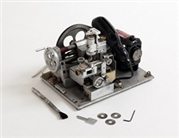
Operation Finale
The Story of the Capture of Eichmann
Opened: February 2012, closed: October 2012 | Curator: Avner Avraham | Architect: Ori Glazer | Head of Curatorial Department: Smadar Keren Project Manager: Michal Houminer | Registrar: Geula Goldberg | History Consultant: Neomi Izhar | Museum Consultant: Orit Engelberg Baram | Graphic Designer: Onna Segev | Interior Designer: Lia Eleonora Fang English Translation and Editing – Gail Aricha | Film Directing: Rotem Kipnis | The exhibit was made possible by the generous support of The IRIS Charity Trust, The SUNFLOWER Charity Trust, The ORCHID Charity Trust, The JASMINE Charity Trust
At the conclusion of World War II, when the scope of the tragedy unleashed upon the Jewish people became known, there were many who felt the need to seek revenge against the perpetrators. One of the major offenders among these war criminals was Adolf Eichmann; he was a senior officer in the Nazi party, charged with facilitating and managing – with uncommon precision – the logistics of “the final solution.” Following the war, Eichmann managed to escape from the Allied Powers, and in 1950 made his way to Argentina under an assumed identity. In 1960, Eichmann was abducted in a Mossad operation led by Isser Harel, who was assisted by a team from the operational unit of the Shin Bet (General Security Services). Eichmann was smuggled out of Argentina and flown to Israel with the aid of an El Al plane and crew. The operation assured that he would be tried in Jerusalem, the capital of the sovereign Jewish state. Eichmann’s trial marked the first time that the story of the Holocaust survivors was revealed to the entire world; their memories and testimonies drew a picture of the human spirit elevated to heights of strength and nobility in the face of heinous crimes too horrible to fathom. Mossad – Institute for Intelligence and Special Operations – chronicles for the first time the story of the abduction through documents illustrating details of the operation – an undertaking which had never before been attempted. The evidence on display in this exhibition represents a body of material gathered during this unprecedented operation. It is rightly heralded as a life-changing event in the history of the State of Israel and the entire world, when the heroic deeds of a few allowed others to raise their voices so that a doubting world would hear the truth. The Mossad is lifting its veil of secrecy in order to educate those who were not alive during the Holocaust, as well as to salute the organizations and individuals in Israel and abroad who acted at great risk, and to give thanks to them and their families. A special thanks, also, to those whose names and identities must remain secret. “Where there is no counsel, the people fall, but in the multitude of counselors there is safety.” (Proberbs 11:14) The exhibition has been arranged under the auspices of the Mossad – Institute for Intelligence and Special Operations.
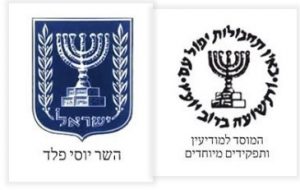
The Game of Their Lives
Jewish Athletes prior to 1948
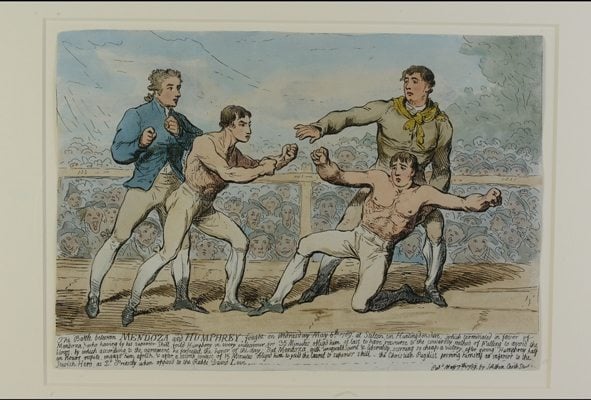
The Game of Their Lives
Jewish Athletes prior to 1948
Opened: January 2012, closed: June 2012 | Curators: Adi Rubinstein, Yael Zeevi | Initiator and Curator: Adi Rubinstein | Designer: Yael Zeevi | Head of the Curatorial Department: Smadar Keren | Production and Curatorial Assistance: Eran Litvin
In Search of Human Grace
Jews in Georgia
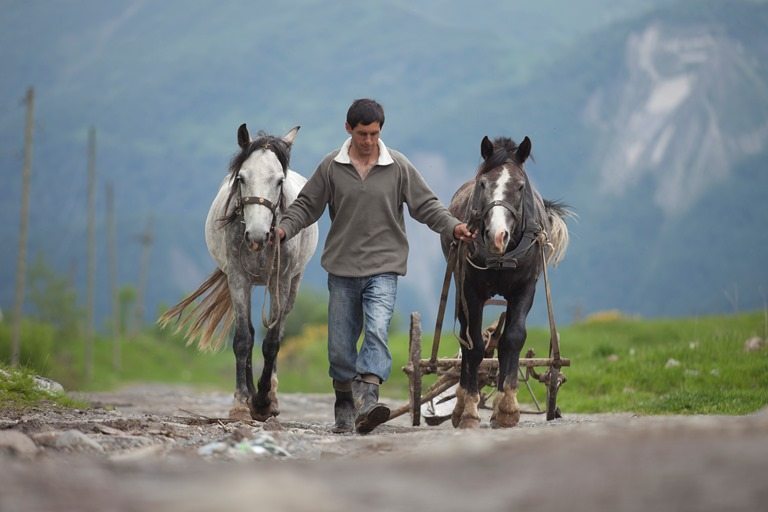
In Search of Human Grace
Jews in Georgia
Opened: March 2012, closed: May 2012 | Curator: Eli Atias | Jdocu photographers: Benny Levin, Atalia Katz, Naftali (Tali) Idan, Amir Halevy, Yossi Beinart, Eli Atias, Eliezer Yaari
In collaboration with the American Jewish Joint Distribution Committee (The Joint), the Jewish Funders Network and the Jdocu Group. “In Search of Human Grace” is a unique story of what was left of the Jewish community in Georgia following the major exodus of the ‘80s and the ‘90s, when most of the Jews left their homes and immigrated to Israel or to other places around the world. This exhibition is also the tale of a group of Israelis, who set out on a journey to their Jewish roots; to tell the story of the Jewish People’s moments of grace and concern for its most remote communities. With a sensitive and inquisitive eye, the exhibition explores how the Georgian Jewish community, from being a thriving and flourishing community in the past, turned into small communities that no longer functioned. The Jewish community in Georgia was left with nothing and was on the verge of severe humanitarian crisis. It was the American Jewish Joint Distribution Committee (JDC) that entered the scene, by creating Hesed Welfare Centers. Today, one hundred and sixty five thousand people throughout the Former Soviet Union receive assistance through these Hesed Centers. The photographs in this exhibition capture moments of Grace and Hope. In Search of Human Grace is a first project of a group called Jdocu – a group of amateur photographers who set on a mission to document Jewish communities around the world and create a new kind of philanthropy. Those who visit the exhibition or view the photographs on line at www.jdocu.com are invited to make a donation in support of the community. As a token of their appreciation, the photographers will in turn provide donors with photographs from the exhibition. Head of the Jdocu group is Benny Levin, one of the leading executives of the hi-tech world, and the vice-chairman of the Israel Venture Network (IVN). Levin is also a member of the Jewish Funders Network (JFN). The professional guide of the group is Eli Atias, a well-known photographer who specializes in editorial magazine and photojournalism. Eli Atias is also the curator of the exhibition. The exhibition In Search of Human Grace was made possible thanks to the collaboration of JDC, JFN, Beit Hatfutsot – The Museum of the Jewish People and the Jdocu group.
Be Happy
Naiveté in Israeli Art
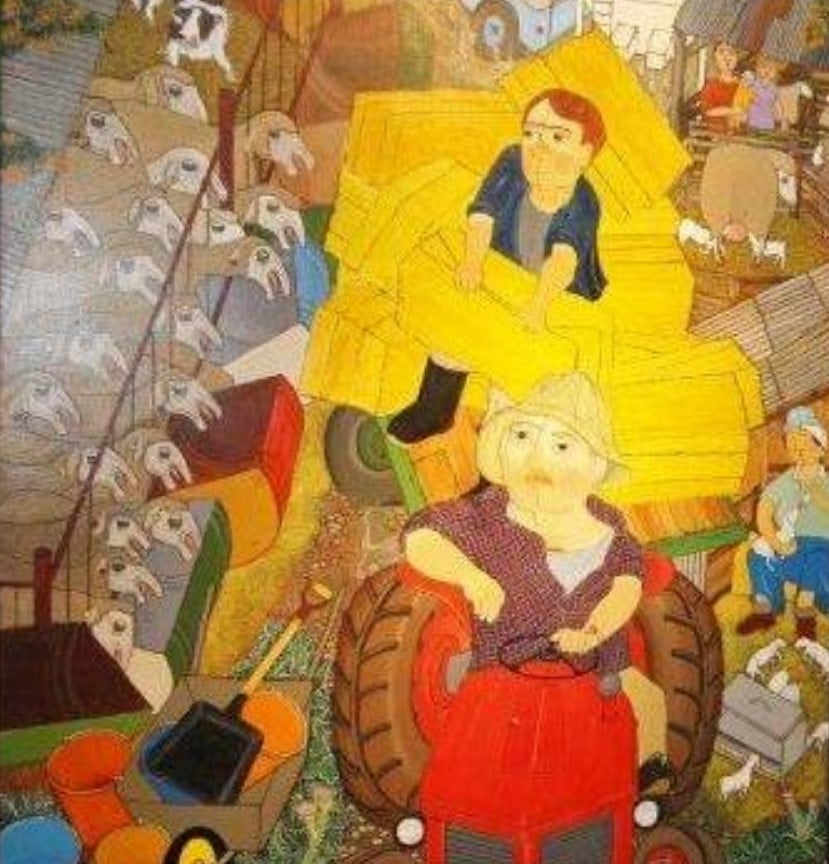
Be Happy
Naiveté in Israeli Art
Opened: September 2011, closed: December 2011 | Curators: Hagai Segev, Shira Friedman | Artists: Ben Bejerano, Shmuel Bonneh, Eliahou Eric Bokobza, Gavriel Cohen, Shalom Moscovitz from Safed, Moshe Shah Mizrahi, Eliahu Sidi, Michael Falk, Siona Tagger
Simple joy is the central motif of the upcoming exhibition, “Be happy: Naiveté in Israeli Art”. Innocence, naiveté, and simple joy in life, is the theme of all the paintings and pieces of art in the exhibition. This exhibition, curated by Hagai Segev and Shira Friedman, will open in Beit Hatfutsot on Sept 13, 2011. The naive outlook presented by the eight artists of the exhibition is unfettered and simple. The artists evoke a basic essence in each piece, elicited from popular Jewish myths and legends. The art reflects a populistic style that has developed independently in disparate places but holds a common thread. These works represent the emergence of a unique art language based on local and biblical cultures that are outside the art mainstream and are thus far undefined in contemporary Israeli art. In this context, “naïve art” has multiple meanings, with a common element of expressing Jewish and Israeli motifs in a simple and uplifting way. These works are unusual in that they present a message and atmosphere that is not multi-faceted or complex in its perspective. Rather, they seek simple identification with the basic elements of Jewish and Israeli mythology. The exhibition is a rare opportunity to encounter naïve art. It will include family and group workshops as well as activities for educational programs.
Transcending Tradition
Jewish Mathematicians in German-Speaking Academic Culture
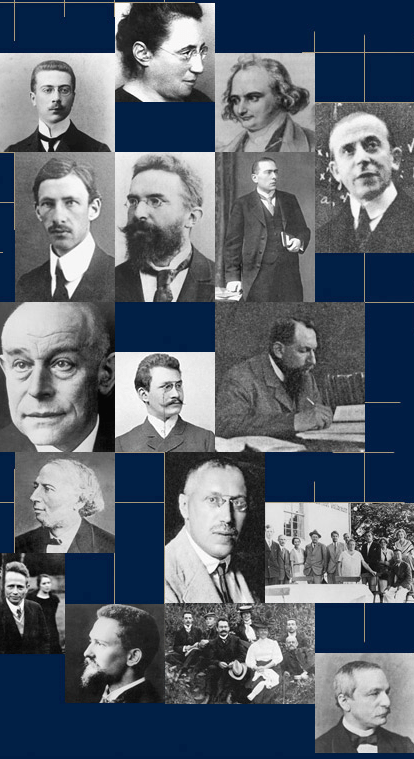
Transcending Tradition
Jewish Mathematicians in German-Speaking Academic Culture
Opened: November 2011, closed: December 2011 | Exhibition Designer: Atelier Markgraph | The Exhibition was designed by a group of seven historians of mathematics in cooperation with the Jewish Museum Frankfurt and the German Mathematical society | Head of the international project: Prof. Moritz Epple | Project Manager: Dr. Ruti Ungar | Authors: Birgit Bergmann, Prof. Moritz Epple, Prof. Walter Purkert, Prof. Volker R. Remmert, Prof. David E. Rowe, Prof. Erhard Scholz, Dr. Annette Vogt | Beit Hatfutsot coordinator: Geula Goldberg | Sponsors: The German Federal Ministry for Education and Research, The German Foreign Office, The Ministry of Science of North Rhine-Westphalia Deutsche Telekom Foundation
The exhibition explores the works, lives and activities of Jewish mathematicians in German-speaking countries during the period between the legal and political emancipation of the Jews in the 19th century and their persecution in Nazi Germany. It highlights the important role Jewish mathematicians played in all areas of mathematical culture during the German Empire and the Weimar Republic, and recalls their emigration, flight or death after 1933. A first version of the exhibition was opened on the occasion of the annual conferences of the German Mathematical Society in autumn 2006 in Bonn and in spring 2007 in Berlin. With the financial support of the Deutsche Telekom Foundation and in cooperation with the Jewish Museum in Frankfurt, a re-designed travelling exhibition has been on display in various places in Germany since May 2008. It has received an award from the German Ministry for Education and Research. An English version of the exhibition has been produced with the support of three German ministries: the Federal Ministry for Education and Research, the Federal Foreign Office, and the Ministry of Science of North Rhine-Westphalia. This international version will be travelling to Israel in 2011-12, where it will be displayed in three central institutes: Beit Hatfutsot, the Museum of the Jewish People, The Technion in Haifa and the National Library in Jerusalem.
Light and Shadows
The Story of Iran and the Jews
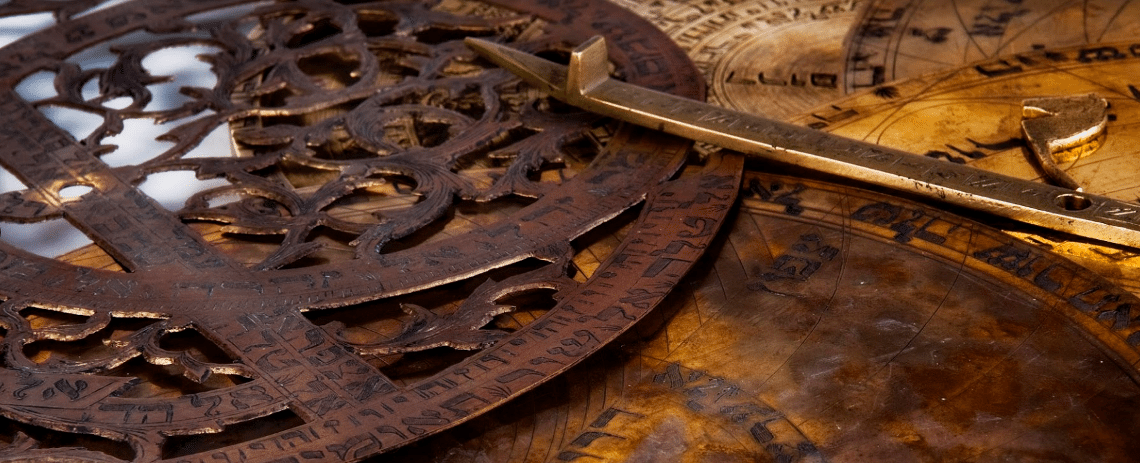
Light and Shadows
The Story of Iran and the Jews
Opened: December 2010, closed: August 2011 | Curator: Orit Engleberg Baram | The exhibition was made possible thanks to the generosity of The Y&S Nazarian Family Foundation
The exhibition Light and Shadows examines one of the world’s oldest Jewish communities. Jews were living in Iran for 3,000 years. As Iran’s oldest religious minority, the Jewish community has confronted numerous challenges, which have affected the overall character of Jewish life in the country. The succession of dynasties and peoples who conquered Iran impacted and enriched Persian Jewish culture in a variety of ways—as has the fact that this community has now lived under Muslim rule for nearly 1,400 years. These influences are revealed in special traditions and unique beliefs. They are also made manifest in the archaeological artifacts, impressive illuminated manuscripts, beautiful ritual objects, amulets, ceremonial garments, musical instruments, photographs, and documentary ephemera presented in this exhibition. Continuing in the Museum’s Goldenberg Galleria, the exhibition examines the modern history of Jews in Iran as well as in Diaspora communities in Israel and the United States. Special emphasis is given to Los Angeles’s own large and dynamic Iranian Jewish community. The exhibition attests to the vibrant life of Iran’s Jewish community from ancient times to the present day. It is a life marked by times of great cultural achievement and periods of prosperity and also by great hardship, persecution, and even forced conversion—truly a story of light and shadows.
Ayelet and Friends
Stories and Paintings by Rinat Hoffer
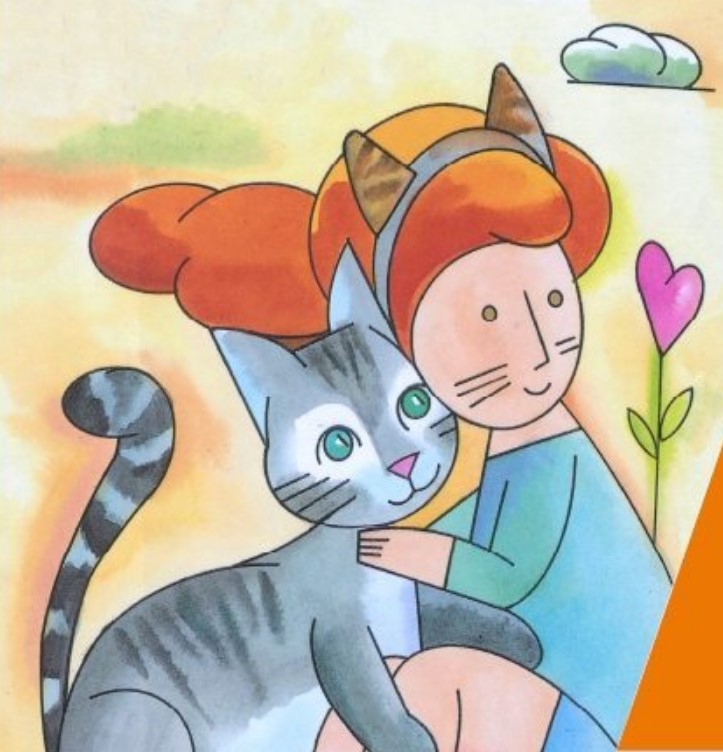
Ayelet and Friends
Stories and Paintings by Rinat Hoffer
Opened: July 2010, closed November 2010
Rinat Hoffer, the renowned illustrator and author of children books, recipient of the Gutman prize for illustration and of the Zeev prize for children literature, is displaying her works in an exhibition at Beit Hatfutsot. On display a selection of Hoffer’s original works from her popular Ayelet Metayelet (Ayelet’s Day Out),Mifletset Segula (Purple Monster), Hannan Hagannan (Hannan the Gardener), as well as from many others of her books. The delicate illustrations leave the pages and become large impressive paintings on the exhibition walls, to the pleasure of children and parents alike. Hoffer has also created an original large new wall drawing, made especially for the exhibition at Beit Hatfutsot.
Jewish Icons
Andy Warhol and Israeli Artists
Jewish Icons
Andy Warhol and Israeli Artists
Opened: September, 2010, closed: November, 2010 | Curators: Geula Goldberg, Irena Gordon | Artists: Andy Warhol, Eliahou Eric Bokobza, David Tartakover, Shy Abady, Hanoch Piven, Hadas Reshef, Ido Shemi, Igael Tumarkin
Ten portraits of Jews of the Twentieth Century, the 1980 screenprint series by the legendary American pop artist Andy Warhol, was recently donated to Beit Hatfutsot from the estate of Allan S. Bird, USA. The portraits in the series include philosopher and educator Martin Buber; physicist and father of the theory of relativity Albert Einstein; father of psychoanalysis Sigmund Freud; composer George Gershwin; stage actress Sarah Bernhardt; the Marx Brothers – Chico, Groucho, and Harpo – in a joint portrait; writer Franz Kafka; writer Gertrude Stein; Israel’s fourth prime minister, Golda Meir; and Louis Brandeis, the first Jewish US Supreme Court justice. From the 1960’s onward, Andy Warhol (1928–1987) – painter, filmmaker and celebrity – created a series of portraits of cultural mostly American, including Marilyn Monroe, Elvis Presley, and Elizabeth Taylor. The artistic process on this series, which he called “Jewish Geniuses,” was similar to that of many of the other portraits. He took famous photographs of the figures, cropped them roughly, and then printed them in black and white on paper or on canvas. After that he produced a screenprint, with the outlines in a free, sketched style and the collage-like geometric surfaces in acrylic paints. The screenprint portraits do not focus on deciphering the character, but on investigating its essence and status as a popular media icon. The prints also provide a basis for an interaction between painting, photography, and print. The series is another expression of Warhol’s efforts to blur the boundaries between high art and popular art and to create a subversive discussion about cultural heroes as objects of consumption and celebrity. The series inspired controversy and criticism when it was first exhibited in 1980, at the Lowe Art Museum in Miami and then at the Jewish Museum in New York. Since then it has toured the US and the world. The present exhibition at Beit Hatfutsot gives us an opportunity to examine the series with the perspective of time and place. It also invites us to look at the works of Israeli artists who deal with twentieth-century cultural icons, both Israeli and Jewish. The works, by Eliahou Eric Bokobza, David Tartakover, Shy Abady, Hanoch Piven, Hadas Reshef, Ido Shemi, and Igael Tumarkin, are in a variety of different media, including painting, photography, sketch, collage, graphic design and digital media. Many of the works engage in a direct or indirect dialogue with pop art and with Warhol’s portraiture genre. All of the works examine the conceptual and visual significance of the notion of a “cultural hero,” whether Jewish or Israeli. The problematic nature in the very choice and representation of a Jewish cultural icon, as it emerges from Warhol’s “Jewish personalities” series, accompanies the works of the contemporary Israeli artists, and expands into the question of the difference between the Jewish cultural icon and the Israeli one and its place in all of our daily lives.
Judaica Twist
Innovation in Judaica design
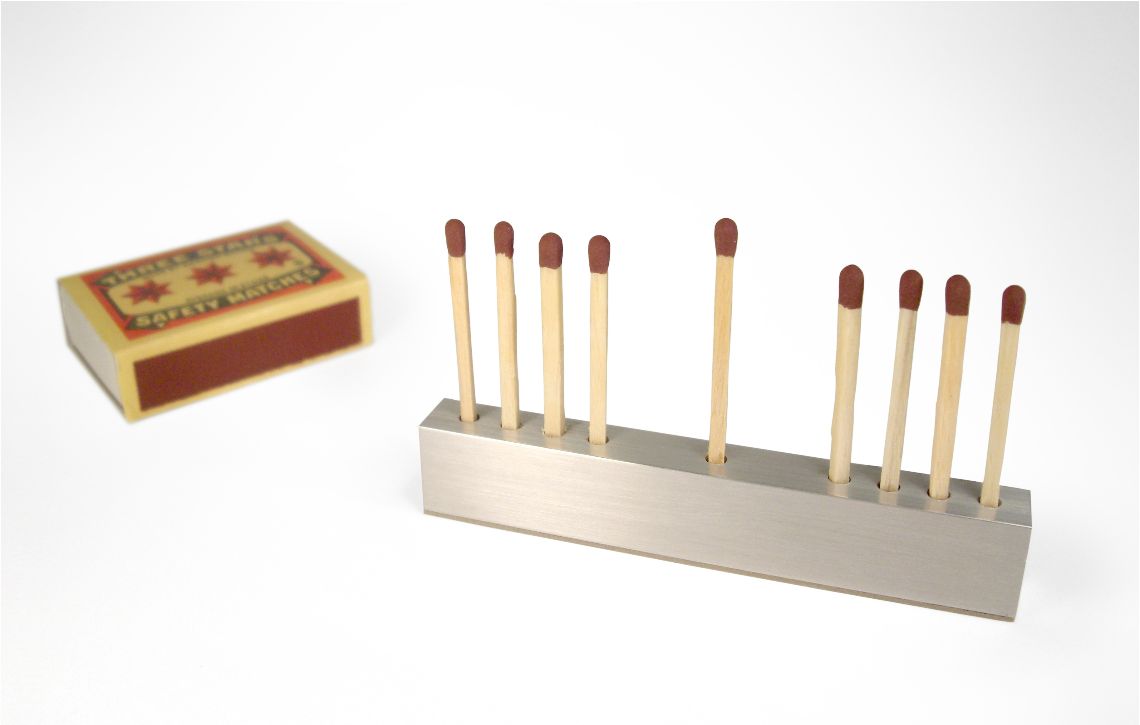
Judaica Twist
Innovation in Judaica design
Opened: December 2009, closed: August 2010 | Curator: Daniel Wajman | Supervising Curator: Hagai Segev | Exhibition design and installation: Design Mill | The installation of the work of Hagit Shimoni with support of HIT | Artists: Galina Arbeli, Avi Biran, Zoya Cherkassky, Mika Drimmer, Orly Edlavitch, Leor Elan, Roie Elbaz, Idan Friedman, Shelly Freiman, Yoel Gilinsky, Shay Goldberg, Merav Goldschmidt-Kay, Yaakov Greenvurcel, Ruth Herman, Rory Hooper, Hila Karni Rawet, Liora Kaye-Kisselov, Boaz Kedar, Pazit Keidar, Marit Meisler, Marcelle Klein, Hadas Kruk, Eran Lederman, Or Luka, Yossi Matityahu, Melissa Shiff, Doron Sar-Shalom, Hagit Shimoni, Sari Srulovitch, Anat Stein, Naaman Steinbock, Nimrod Vardi, Orly Yehiel-Sokolov, Tal Zur, Rinat Efrat-Diamant
With this Ring
Wedding Ceremonies in Contemporary Art
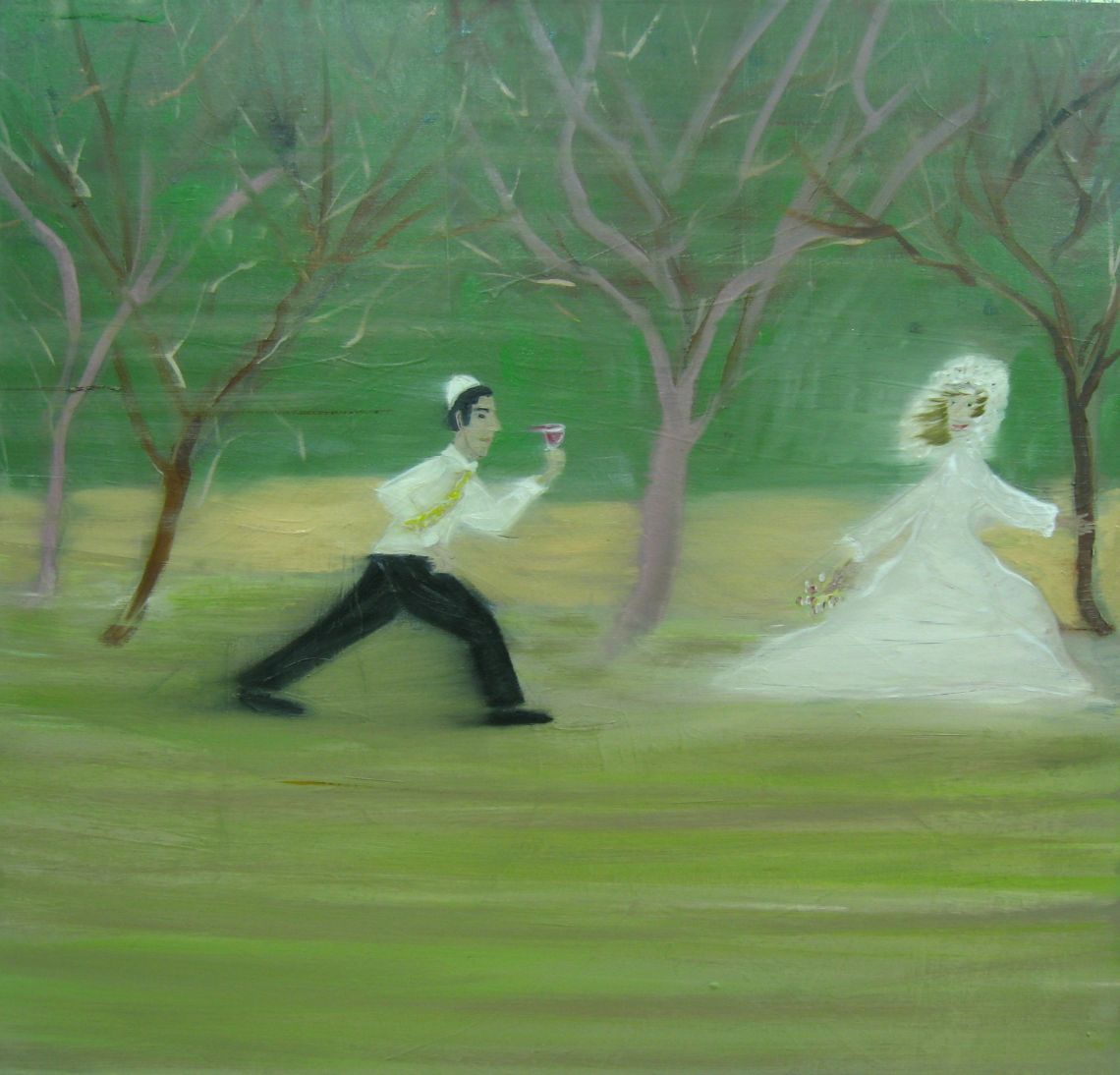
With this Ring
Wedding Ceremonies in Contemporary Art
Opened: February 25, 2010, closed: July 30 | Curator: Raz Samira | Artists: David Adika, Nelly Agassi, Shai Azulai, Meirav Heiman, Hila Karbelnikov Reut Ferster, Eli Petel, Daphna Shapira-Hasson and others
Through contemporary plastic art, the exhibition portrays the changes that have taken place in wedding ceremonies over the last decades. The Jewish wedding ceremony is our ID as well as a social declaration of who we are. The diversity of wedding ceremonies will, no doubt, leave its mark on the future Israeli society. Curator’s note: The Jewish wedding ceremony is an ancient custom which prevailed through the time and the dispersion of the Jewish communities. Proclaiming the wedding vows, a couple publicly and privately declares its intention to live together, establish a home and bring children into the world. Nevertheless, this declaration of interpersonal commitment also affirms the relationship which exists between the individual and the society in which one lives. The ritual dimension of the marriage ceremony represents the acceptance of societal norms and ensures that succeeding generations will adhere to its dictates. In this way, each wedding ceremony embodies a political statement – whether it adheres to custom and tradition or affirms one’s commitment through alternative rites. The exhibition attempts to mirror these complex associations. Nevertheless, in spite of all of the changes and modern influences, there is a continuous element in the Jewish wedding ceremony, an element which is both common and deeply rooted. It reflects elements of tradition alongside expressions of personal and individual world views. These variations are the result of a transition from a family/tribal orientation to an individualistic approach which may lend a personal touch to the wedding ceremony nowadays. Accordingly, the subject of Jewish weddings raises interesting questions about ritual, society, the preservation of an existing order or variations to that order. Some of the works displayed, project a note of defiance or irony, while others express a sense of joy, humor or longing. In their works, the artists succeed in examining the meaning of the subject and its effect on society, and on themselves. Mazal Tov!
Visas for Freedom
Spanish Diplomats and the Holocaust
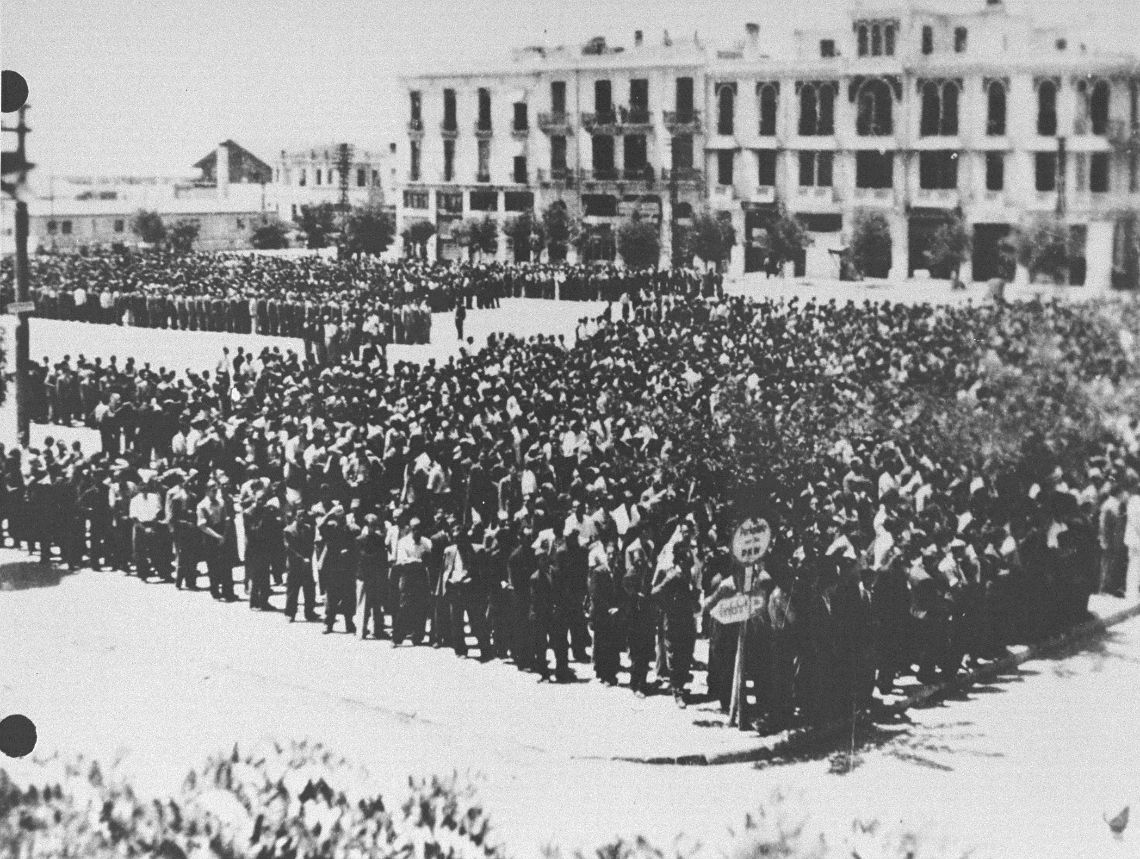
Visas for Freedom
Spanish Diplomats and the Holocaust
Opened: February 18, 2010, closed: April 2010 | Curator: Belén Reina Casanova
During the fateful years of the Holocaust, certain Spanish Diplomats were able to transcend the difficult political situation, and use their influence to change the fate of many Jews, showing solidarity, courage and humanity. “Visas for Freedom” tells the stories of Angel Sanz Briz and Giorgio Perlasca in Hungary, Eduardo Proper de Callejon and Bernard Rolland de Miota in France, Sebastian Romero Radigales in Greece, Carmen and Jose Ruiz Santaella in Germany, Julio Palencia and Tubau in Bulgaria and Jose Rojas Moreno in Romania. These Spanish diplomats were able to evade the prohibitions and restrictions of the authorities in the countries they were accredited in an attempt to save lives. They risked their own political position by eluding the rules set by their own superiors from Madrid. Contemplating pictures and documents, and listening to the testimonies, visitors will be able to share the narratives of these men and women who during turbulent times enabled thousands of Jews to escape the concentration camps and use Spain as a passage to freedom. Their actions saved lives and alleviated the suffering, defending the freedom of their Sephardic compatriots, as well as mitigating the persecution and massacre of the Jewish people.
Sounds of Silence
Traces of Jewish Life in Lithuania - Photographs by Raimondas Paknys
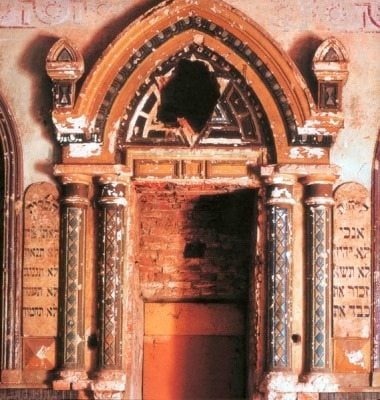
Sounds of Silence
Traces of Jewish Life in Lithuania - Photographs by Raimondas Paknys
Opened: December 17 2009, closed: December 31 2009
On the occasion of the visit of the Minister of Foreign Affairs of Lithuania Mr. Vygaudas Usackas, in Israel, a special exhibition, Sounds of Silence: Traces of Jewish Life in Lithuania, portraying photographs by the Lithuanian photographer Raimondas Paknys, will open at Beit Hatfutsot on Thrusday, December 17th, under the auspices of the Lithuanian Embassy in Israel. The exhibition will be on display for only 10 days. The photographs in the exhibition are a silent eco to a glorious culture that has vanished. 95% of the Jews in Lihuania perished in the Holocaust. in a land that was known for its tolerance towards the ethnic minorities that lived within its boundaries. At the same time, it is important never to forget the heroism of those who risked everything to do the right thing and save a neighbor. Vilna, the Jewish capital of Lithuania, known also as the Jerusalem of Lithuania (Yerusholáyim d’Líto), was famous for its flourishing Jewish culture for centuries and for the achievements in traditional Jewish scholarship that were out of all proportion to the size or wealth of its Jewish population. The stature of Jewish Lithuania reached a highpoint with the life and writings of the Gaon of Vilna, Eylióhu ben Shlóyme-Zalmen 1720–1797. When the totalitarian Soviet regime decided to dismantle the old Jewish cemetery at Piramónt after the war, permission was given for his bones and gravestone, and those of his immediate family, to be moved. Traditional Jewish religious culture is the oldest of the traditions for which Lithuanian Jewry became prominent. Its writings were in Hebrew and Aramaic, and its vernacular was a singular Lithuanian Yiddish that became the most prestigious form of Yiddish in Europe. Cultural counterstreams within traditional orthodoxy spanned a rainbow that embraced dancing Lithuanian Hasidim in the far east of Jewish Lithuania – the Chabad movement, and the sad-sad stern self-improving ethicism – the Musar movement – at its far west. On the other hand, there were the modern realms of Jewish civilization, where Lithuanian Jewry also took a lead. The scope was breathtaking. It included the revival of the modern Hebrew language, and its first contemporary grade literature; the modern Yiddish scholarship and research as a new field of humanistic inquiry; a unique branch of Jewish socialism that stressed the development of Yiddish as a national Jewish language in the context of autonomy for minorities. The Litvak’s love of learning and education became proverbial. One result was a long line of original, maverick creators, among them the philosopher Solomon Maimon, the inventor of Esperanto Ludwig Leyzer Zamenhof, the artists Marc Chagall and Chaim Soutine. For centuries, the compact and exalted culture of Lithuanian Jewry never failed to impress. In his 1899 Journey through Lithuania Nahum Slouschz comments: “We are in the Jewish country, perhaps the only Jewish country in the world.”
The Real and the Ideal
Paintings by Ludwig Blum
The Real and the Ideal
Paintings by Ludwig Blum
Opened: October 2009, closed: | Curator: Dr. Dalia Manor
A first exhibition of the artist Ludwig Blum (1891-1974), known for his panoramic paintings of Jerusalem, the city where he lived and worked for fifty years.
The Revival of Jewish Papercuts
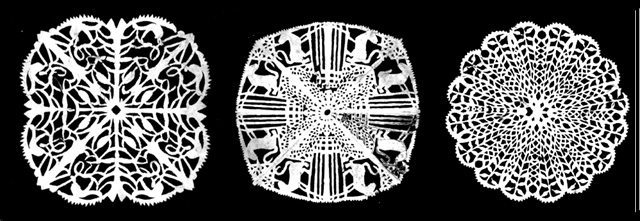
The Revival of Jewish Papercuts
Since the middle of the twentieth century there has been a revival of the papercutting art all over the world, including Israel. This exhibit, with a selection of papercuts by contemporary Israeli artists, is evidence of this resurgence. Dozens of artists engage in papercutting today, professionally or as a hobby, bringing new life to a centuries’ old tradition. Many time-honored genres are still widespread in the Jewish world, including the Mizrach, which indicates the direction of Jerusalem for prayer, and the Shiviti, which hangs in front of the cantor’s lectern. More common today, however, are papercuts that highlight the artist’s own ideas and talents: aesthetic creations that combine traditional motifs with modern elements and make relatively little use of canonical texts (or any text, for that matter). Artistic papercutting is not a Jewish invention. It can probably be traced back to the Far East and China, where papercuts were used for decoration and as charms against the evil eye as early as the sixth century CE. In the Middle Ages papercutting spread to the Near East, notably Persia and Turkey, and from there to North Africa and Europe. Traditional papercuts tend to be based on Jewish motifs and symbols, canonical texts, and figures of plants and animals. Other shapes are derived from various branches of traditional Jewish arts and crafts. From the ornamentation of the Holy Ark, parochet (ark curtain), and other ritual objects, papercutters borrowed the Tablets of the Law, the Torah crown, the two pillars of the Temple (Yachin and Boaz), the menorah, and objects employed in festival rituals (the shofar, lulav and etrog, and so on). The diffusion of papercutting is directly linked to the developed of paper manufacture: as paper became less expensive, papercuts became a more popular art form. But we also know of elegant designs cut in parchment, especially to ornament the Megillah (Scroll of Esther) and ketubot (marriage contracts). The type of material provides evidence of the intended use of papercuts and of the artist’s financial situation: in addition to those made of parchment, expensive paper, and multiple layers of colored paper, we also encounter some cut out of simple paper. The tools of the papercutter’s art are various types of knives and scissors. Today the traditional knife has been supplanted by smaller ones, such as exacto knives and surgical scalpels. In recent years artists have turned to computer-controlled lasers, which significantly reduce the price of the finished product.
A Prayer Tent in a Snowy Forest
The Story of the Jews of Finland
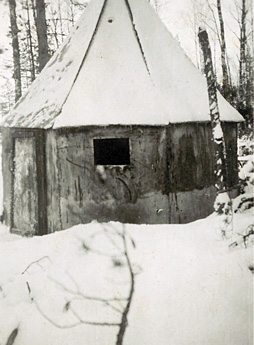
A Prayer Tent in a Snowy Forest
The Story of the Jews of Finland
Opened: September 2009, closed: | Curator: Dr. Simo Muir | Designer: Simo Muir and Hennu Kjisik | The exhibition was made possible thanks to the support of: the National Archives of Finland; the Jewish Community of Helsinki; the Jewish Community of Turku; the Finnish Jewish Cultural Heritage Foundation; the Ministry for Foreign Affairs of Finland; the Embassy of Finland, Tel Aviv; the International Christian Embassy Jerusalem the Finnish Branch; Mr. Poju Zabludowicz; Dave and Leo-Dan Bensky, Finland; Molok Israel Ltd.; Bazan-Oil Refineries Ltd., Haifa-Israel. Team: Christina Forssell, Timo Tervoja, Sheryl Hinkkanen, Geula Goldberg, Enia Zeevi Kupfer, Ruth Spira | Initiated bringing the exhibition to Israel and fundraising: Shulamit Shapira
The Jewish community of Finland is a relatively young and small minority in the country. The community is characterized by its history and the origins of its core: Jews descended from the Jewish soldiers and Cantonists of the Russian army, and small urban communities with an active cultural life. The history of the Finnish Jews during the Second World War is unique – Jews fought in the Finnish army alongside Nazi Germany against the Soviet Union. Despite the deportation of Jewish refugees and the extradition of Soviet Jewish prisoners of war, the Finnish Jewish community itself remained intact during the war. This exhibition tells four stories about the history of Finnish Jews: “Serving the Tsar” pertains to the period Finland was under Russian rule; “We Jews of Finland” tells about the period when Finland gained independence in 1917; “At War” relates to events during the Second World War; and “With Israel” reflects the contacts and cultural exchange between Finland and Israel. The time span covered starts in the 1830s and continues until the 1970s. The exhibition “A Prayer Tent in a Snowy Forest – The story of the Jews of Finland” is a production of the National Archives of Finland, Helsinki. It was exhibited at the National Archives of Finland in 2006, when the Synagogue of Helsinki celebrated its 100 years anniversary. Most of the material for the exhibition has been obtained from the Finnish Jewish Archives at the National Archives of Finland, Helsinki and from the Jewish Community of Helsinki. Material has also been received from the Jewish Community of Turku; the Jabotinsky Institute, Tel Aviv; Hessisches Staatsarchiv, Darmstadt; Bundesarchive, Berlin; the Helsinki City Museum; the Crime Museum, Vantaa; the Photo Archives of the Finnish Defence Forces, Helsinki; the Research Institute for Languages of Finland, Helsinki; and private archives and collections. All artefacts included in the exhibition are from the collections of the Finnish Jewish Archives at the National Archives of Finland, Helsinki; the Jewish Community of Helsinki; and from private collection in Paris. The Film, “David – Stories of Honour and Shame”, is being screened as part of the exhibition. Director & Script: Taru Mäkelä; Producer: Lasse Saarinen; Production: For Real Production, Finland, 1977. Adjacent to the exhibition there is a collection of 12 photos by Raoul Grünstein, Helsinki. The photos of Jews living in Finland were taken during 2006–2009. The visitors have a possibility to see Meliza Amity’s family on-line. The family tree contains most Jewish families in Finland. The current version is a co-production between the National Archives of Finland, Helsinki and Beit Hatfutsot, the Nahum Goldmann Museum of the Jewish Diaspora, Tel Aviv.
Drama of Identities
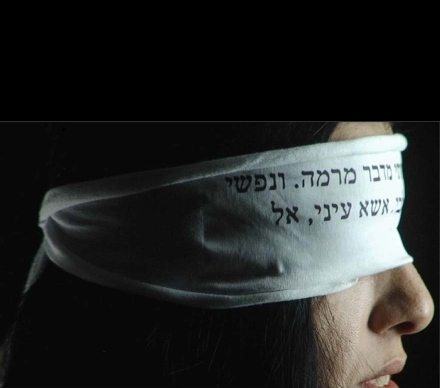
Drama of Identities
Opened: July 09, 2009, closed: October 2009 | Curator: Irena Gordon | Artists: Raya Bruckenthal, Zoya Cherkassky, Gary Goldstein, Assi Meshullam, Roee Rosen, Sala-Manca, Dafna Shalom, Shahar Sarig, Ronen Siman Tov, Keren Shpilsher, Pavel Wolbeg, Maya Zack |Curator in charge: Hagai Segev
Who is a Jew? This culturally, historically, politically, and socially loaded question is at the base of Israeli reality, in both overt and concealed ways. The day-to-day ramifications of this issue, its relevance, and its aggressive nature all have a material and metaphorical influence on the individual and collective search for identity of citizens of the country and non-citizens alike those excluded by the Law of Return. Given its centrality, this search for identity understandably has many manifestations in contemporary art in Israel. One of the most intriguing is the creation of alternating personas and fluid subjects that take shape through narratives of gender, body, sexuality, violence, East-West relations, etc. Not a single , clear, and conformist super-narrative, but many, frequently altering stories. The exhibition focuses on artists for whom the question of Jewish identity is an intrinsic part of their work. Some relate to the subject as an inseparable part of their overall examination of Israeli identity; and all of them confront the various manners in which selfhood is established in light of its continuous undermining. The works present a drama of identities and reincarnations of identities. They offer a new, subversive interpretation of religious concepts and objects and their daily uses. The works bring to the fore new contexts for religious texts and for traditional visual imagery, conducting a dialogue with aesthetic questions and contemporary reality while expressing personal insights into ceremonies and customs, which in turn change their meaning and validity. In all these ways, the works constitute an ongoing contemporary discourse regarding the concept of “being a Jew.” This discourse is not a new one. Its roots can be found in the beginning of Zionism, with the establishment of the Bezalel School of Art at the beginning of the twentieth century, with artists such as Moshe Lilien and Boris Schatz, and later on in the 1930s with artists such as Joseph Budko and Jacob Steinhardt and their discussion of the “old” Jew of the traditional Jewish town and the “new” modern Jew. The discourse continued with the artistic movement of “New Horizons” and with the modernist approach to Judaism as a way to reach the abstract and the sublime in art, with artists such as Mordechai Ardon and Arieh Aroch. Simultaneously, these artists researched local paganism and native cultures. Artists of the 1970s, among them Michal Na’aman and Yocheved Wienfeld, dealt with Judaism as a basis for conceptual action and as a starting point for thinking about gender, body, and politics. From the 1980s onwards following the downfall of political and social ideologies, alongside the emergence of a post-modernist and psychoanalytical orientation, and with the representation of the self in the international art scene—the discussion of Jewish identity became a central means for artists like Moshe Gershuni and Michael Sgan Cohen to create an examination of the self through a focus on Jewish heritage at the expense of the Israeli ethos.
Never Looked Better
Contemporary Artists Respond to the Sonnenfeld collection
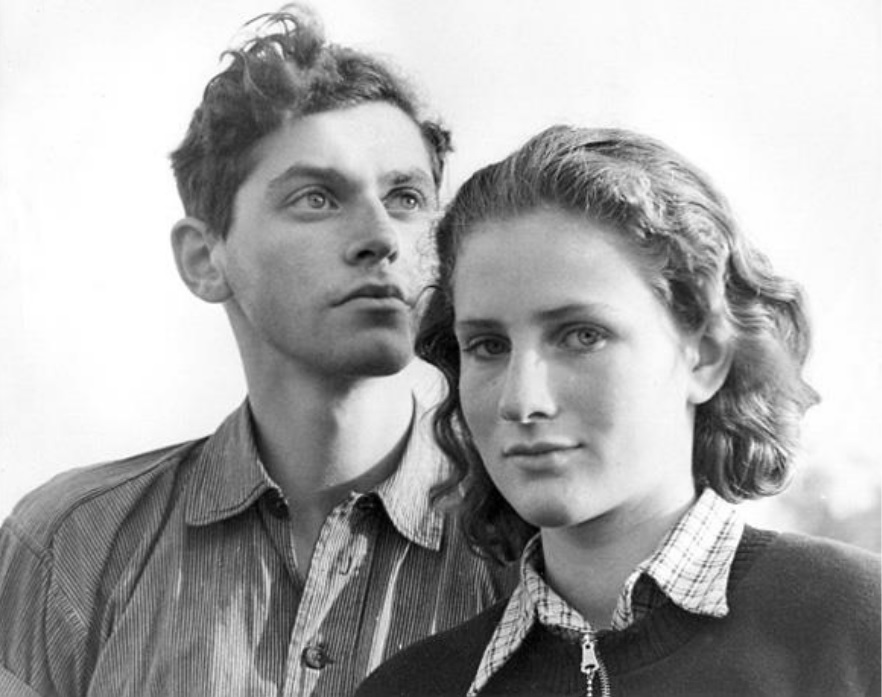
Never Looked Better
Contemporary Artists Respond to the Sonnenfeld collection
Opened: November 2008, closed: August 2009 | Curators: Galit Eilat, Eyal Danon | Artists: Michael Blum, Yossi Atia and Itamar Rose, Yael Bartana, Yochai Avrahami, Ilia Rabinovich
The exhibition “Never Looked Better” displays the photo collection of Leni and Herbert Sonnenfeld, who fled Nazi Germany and found refuge in the USA. The collection documents the Jewish early settlement in Palestine and Jewish communities around the world from the 1930s until the end of the 1980s and serves as a living testimony to the most significant events in 20th century Jewish history. The photos displayed at Beit Hatfutsot are accompanied by interpretation by contemporary renowned artists from Israel and abroad. The Leni and Herbert Sonnenfeld collection comprises approximately 100,00 slides, prints, and photos that document the significant events in Jewish history from the 1930s through the 1980s. The Sonnenfeld collection is not a lost collection that was suddenly exposed. The photographic aesthetics of the Sonnenfelds is not foreign to the Israeli or international publics. The images that were created helped shape the visual memory of Israel and hold a central place in the collective Israeli consciousness, particularly those images from 1933 through 1948. Herbert Sonnenfeld worked for Keren Hayesod, the Jewish National Fund, and the Jewish Agency, and his photos were published in magazines and newspapers including The New York Times, Life, The Daily News, and The Jewish Week, and appeared in exhibitions around the world. The exhibition will present new works alongside catalogued parts of the collection, and will propose new ways of reading the photographs. Viewers will thus be able to reexamine existing categories and collections while offering a different view of their photographic work overall and the way in which they worked in cooperation with the Zionist publicity apparatus through their work.
Wergeland's Legacy
Jewish Life in Norway, 1851-1945
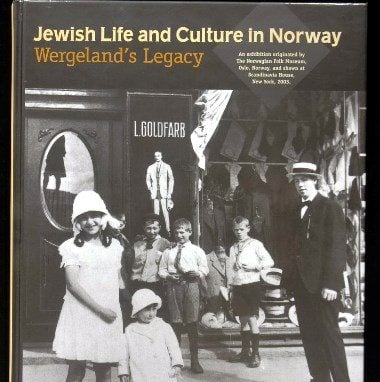
Wergeland's Legacy
Jewish Life in Norway, 1851-1945
Opened: May 2009, closed: August 2009 | Curators: Britt Ormaaasen, Oskar Kvasnes | Designer: Ori Glazer | Curator in charge: Geula Goldberg
The exhibition, held at Beit Hatfutsot under the auspices of the Royal Norwegian Embassy to Israel, tells the story of Jewish immigration to Norway from 1851, following the struggle of the Norwegian national poet Henrik Wergeland for the abolition of the Jewish clause in the constitution – until 1945. It depicts the lives of people who fled from terror and persecution, and who looked for a land where they could live a peaceful life. The exhibition also describes the encounter with a culture that was foreign to them and their struggle to put down roots in a new country. The people who came to Norway had a strong desire to become part of a nation. They wanted to become “ordinary” Norwegians while also upholding their Jewish way of life, which meant to live with a double identity. They discovered that they would pay a price for being different, and that anti-Semitism was not dead. The exhibition ends with 1945, because World War II marks a turning point for all Norwegians seeking to build a modern society. The year 1945 was also a turning point for the Jewish community in Norway as their number declined to only about half of what it had been before the war. The project is a joint production of Beit Hatfutsot, the Norwegian Museum of Cultural History in Oslo and the Oslo Jewish Museum. The exhibition is based on material gathered through the Museum of Cultural History project “Norwegian-Jewish Documentation”, in cooperation with the Jewish Community of Oslo. The project was launched in order to gather information about Jewish life and history in Norway up to 1945. Most of the information collected consists of interviews with Norwegian Jews born before the war and photographs from private albums, which were buried, hidden by friends, or taken along, when fleeing to Sweden.
The Maccabiah
Posters and Photographs
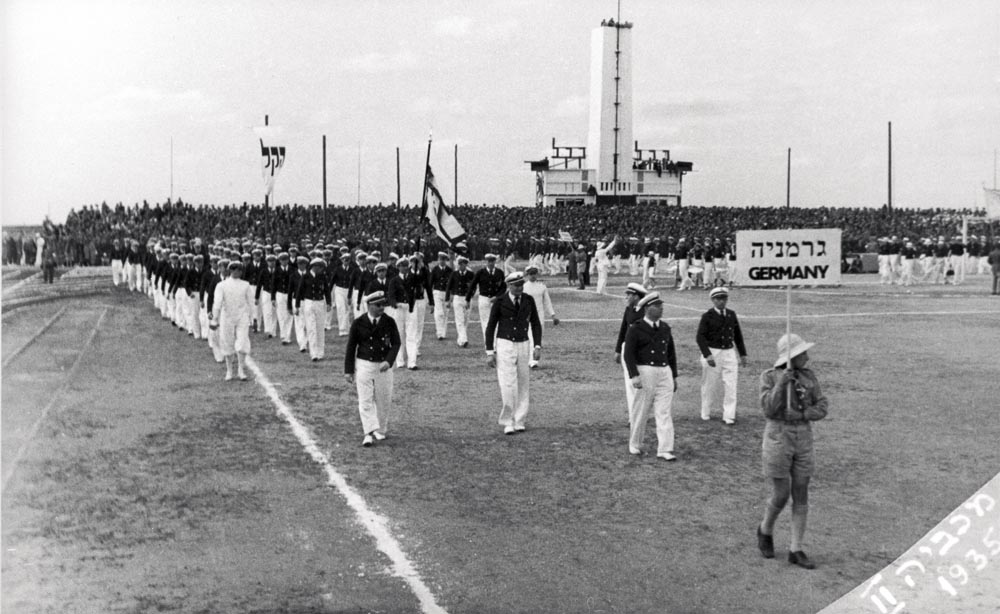
The Maccabiah
Posters and Photographs
Opened: June 2009, closed: August 2009 | Curator: Rachel Schnold
This exhibition displays posters, photographs and documentation of the 80-year old Maccabiah tradition. The Maccabiah is an international Jewish athletic event held in Israel every four years, under the auspices of Maccabi World Union. The decision to hold an international Maccabiah in Eretz Israel was taken at the international Maccabi Congress in 1929. The first Maccabiah was opened in Tel Aviv, on March 28, 1932, with the participation of about 400 athletes. The second Maccabiah was held in 1935 in the shadow of the Nazis’ rise to power in Germany and the wave of anti-Semitism spreading across Europe. The German delegation took part in the games with the approval of the Nazi authorities. These games were called the “Aliyah (immigration) Maccabiah”, since many of the European participants preferred to remain in Eretz Israel rather than return to their homes. The third Maccabiah was held in 1950, the first one after the establishment of the State of Israel. The number of participants and delegations increases with each Maccabiah, which has evolved into the greatest assembly of Jewish athletes in the world. The 18th Maccabiah is to be held this year, in July 2009. About 5,000 participants will arrive from 64 countries, joined by 2,000 Israelis. The displayed photographs and posters are a documentation of various Maccabiah Games. All posters are courtesy of the Pierre Gildesgame Maccabi Sports Museum, Ramat-Gan. The exhibition is displayed at the hall dedicated to the brothers Isaac Grunstein-Shamir and Chaim Grunstein, thanks to the kind support of Ruth Shamir.
Shrines of Tolerance
Synagogues of Turkey - Photos by Izzet Keribar
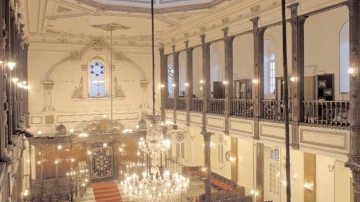
Shrines of Tolerance
Synagogues of Turkey - Photos by Izzet Keribar
Opened: December 2008, closed: April 2009 | Curator: Geula Goldberg | Architect: Ori Glazer
The Ottoman Empire and its territories served as a melting pot for civilizations and religions, throughout many centuries. Today, modern Turkey is proud of its sense of tolerance, especially towards the Jews, who found refuge and settled within the boundaries of the Ottoman Empire more than 500 years ago fleeing the Spanish inquisition. The arrival of the Sephardic Jews in 1492 was not the first wave of Jewish immigration to the Ottoman Empire. Already in the first half of the fourteenth century, Ashkenazi Jews fleeing from the pogroms in Europe had taken refuge in the Ottoman Empire; Jews, who left Sicily and Thessaloniki in the early fifteenth century, gained their freedom in the Ottoman lands. The open door policy and tolerance brought Jews into the Empire from Germany, France, Italy, Hungary and Russia. As the Ottoman Empire entered an era of great development, it consequently had a great need for qualified people. Sephardic Jews, who were familiar with the arts, trade, medicine, printing, textile weaving and dyeing, leather treatment and copper workmanship, contributed the expertise they had acquired in the Golden Age of Spain to the advancement of their new homeland. In the tolerant and liberal environment created by the Ottoman government, Jews produced some of the world’s most famous writings, particularly religious and literary works. Jews who held important positions in Spanish courts were assigned to distinguished posts in the Ottoman palaces, especially in finance and foreign relations. Most palace physicians were Jewish, and they would often accompany the Sultans on their campaigns. Nonetheless, 1492 was not the year that Jews first arrived in the Ottoman Empire and began to settle there. According to discoveries based on historical documentation and archeological excavations, the presence of Jewish communities in Anatolia dates back to the 3rd century B.C.E. It was quite natural that each of the settlements based on a traditional community would have at least one synagogue. The synagogues in Turkey span from the 3rd century C.E through the early twentieth century. Most of the synagogues were influenced by local architectural designs. Among them is the synagogue of Sardis, discovered during excavations in the 1960s, that is believed to be one of the most grandiose synagogues of ancient times. In 2005, the president of the Jewish community of Turkey, Mr. Silvyo Ovadia, approached Izzet Keribar, a world renowned photographer and winner of many international prizes, and offered him to document all the synagogues in Turkey as a legacy to future generations. Izzet Keribar embarked on his research by establishing contacts with leaders of various Jewish communities in Istanbul, Izmir, Ankara, Bursa, Chanakkale, Edirne and elsewhere in Turkey. His research revealed more than sixty synagogues around Turkey. Unfortunately, many of them suffered substantial deterioration, and others were used for different purposes or completely ruined. The photographer tirelessly set out to capture every detail of the glory and splendor of the synagogues that were once the pride and the heart of the Jewish community in Turkey, in order to preserve them for future memory before the deterioration of time takes its toll. Izzet Keribar’s efforts paid off, and he accomplished this goal successfully. The result of this project is the photography exhibition, “The Synagogues of Turkey: Shrines of Tolerance,” consisting of more than 70 photographs. The exhibition is accompanied by a beautiful volume containing a comprehensive historical introduction by Naim Guleryuz, published by Gozlem Publishing. The exhibition at Beit Hatfutsot is under the auspices of the Turkish Embassy in Israel, marking the 85th anniversary of the Republic of Turkey. Beit Hatfutsot is honored to host the exhibition as part of its 30th anniversary celebrations.
Po-Lin
Thousand Years of the History of Polish Jews

Po-Lin
Thousand Years of the History of Polish Jews
Opened: December 2007, closed: March 2008 | Curator: Kinga Duda | Designer: Agnieszka Rudzińska | Team: Renata Piątkowska, Agata Rozbicka, Kacper Lisowski, Piotr Szamburski, Marta Ignerska, Piotr Karetko, Natalia Rajszys , Hege Lønne, Rafał Krzemiński, Nilli Amit, Karolina Sakowicz, Agata Pietrasik, Iwona Wiśnios, Judyta Hajduk, Kalina Gawlas, Joanna Fikus, Klaudia Smurawa, Zuzanna Jakubowska, Maria Tuszko, Marek Jeżowski, Ken Rabin, Jan Weinsberg, Krzysztof Dawid Majus, Krzysztof Słomka, "Camille"
The multimedia exhibition presents over 1000 years of Jewish history in Polish lands. The story is told through seven films that describe different historical eras and take viewers on a journey in time from the Middle Ages through the present. Visitors can take a guided tour through history via the respective Museum galleries, or journey into the realm of imagination via a band of animated characters. The historical narrative and the rich iconography are enhanced by modern animations, for an intriguing and thought-provoking message. History is often transmitted as a story of the past – but the most important aspect of this historical exhibition is the present. Thus, the central area of the exhibition is the Discussion Forum, a place for reflection on the relevance of history today, for each of us. The Discussion Forum is for meetings and dialogue, presented on digital monitor screens, and forms a vital part of the exhibition. The films correspond with the galleries of the Museum of the History of Polish Jews (in the making) and the creators of the respective galleries provide the narrative: 1. First Encounters and First Settlements, narrated by professor Hanna Zaremska, Institute of History, Polish Academy of Sciences 2. Paradisus Judaeorum, narrated by Adam Teller Ph.D., Haifa University 3. Into the Country, narrated by Adam Teller Ph.D., Haifa University 4. Encounters with Modernity, narrated by Marcin Wodziński Ph.D., University of Wrocław 5. The Street – Poland in the Interbellum Period, narrated by Jerzy Halbersztadt, Director of the Museum of the History of Polish Jews 6. Holocaust, narrated by Jacek Leociak Ph.D., Institute of Literary Research, Polish Academy of Sciences 7. Post War Years, narrated by Helena Datner, Jewish Historical Institute and professor Stanisław Krajewski, Warsaw University.
Jews of Struggle
The Jewish National Movement in the USSR, 1967-1989
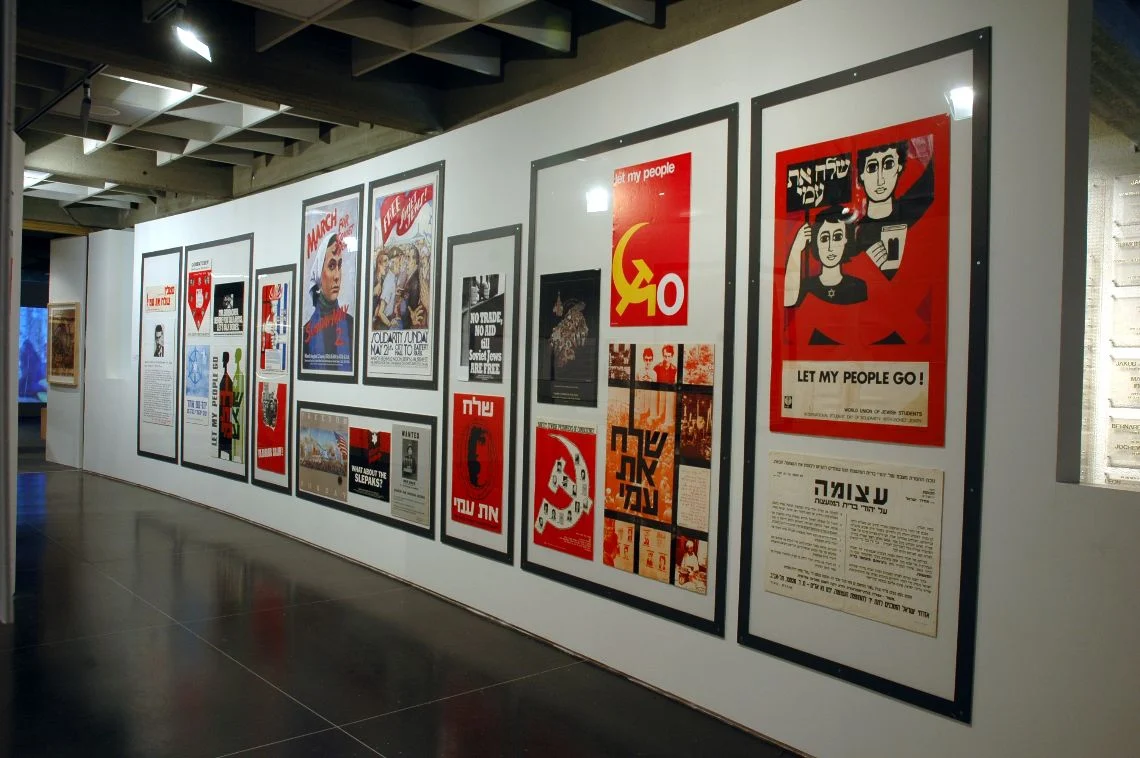
Jews of Struggle
The Jewish National Movement in the USSR, 1967-1989
Opened: October 2007, closed: January 2008 | Curator: Rachel Schnold
“My wish is to live in Israel. It is my dream… Let me go!” (Boris Kochubiyevsky). Jews of Struggle: The Jewish National Movement in the USSR, 1967–1989, displayed at Beit Hatfutsot in 2007-8 to mark the birth of the Jewish national movement in the Former Soviet Union. This event was prompted by the Six-Day War. The outcome of that epic week provided a tremendous impetus to the Zionism of Jews in the Soviet Union and catalyzed their demand for the right to immigrate to Israel and later for free emigration and the ability to maintain Jewish life in the Soviet Union itself. “The Jews of Struggle” provides an overview of Jewish national activity in the USSR between 1967 and 1989 and of the international support it received from Israel and world Jewry. Initially the movement was relevant for only a small segment of Soviet Jewry and for the State of Israel, which has always promoted aliya. Soon, however the struggle waged by Soviet Jews captured headlines throughout the Jewish world and subsequently caught the attention of various Jewish and non-Jewish organizations, public figures, and statesmen, who considered the Soviets’ Jewish policy to be a violation of basic human rights such as freedom of migration, the freedom to study one’s own language, culture, and heritage, and freedom of religion. The Soviet persecution of movement activists reinforced Western opposition to the totalitarian regime in the USSR and increased sympathy for the movement. The international campaign on behalf of Soviet Jewry, waged by Jewish organizations in North America, Britain, the Continent, and elsewhere, had a tremendous impact on Jews worldwide and significantly enhanced their sense of Jewish peoplehood. The exhibition includes photographs, posters, documents, and publications, including original Samizdat (clandestine) publications; objects; and art, music, and films by and about activists. The concept for the exhibition was initiated by the Remember and Save Association in Israel, which was established by former Refuseniks and activists of the Jewish Aliya movement in the USSR.
Jewish Melbourne
Photos by Angela Lynkushka
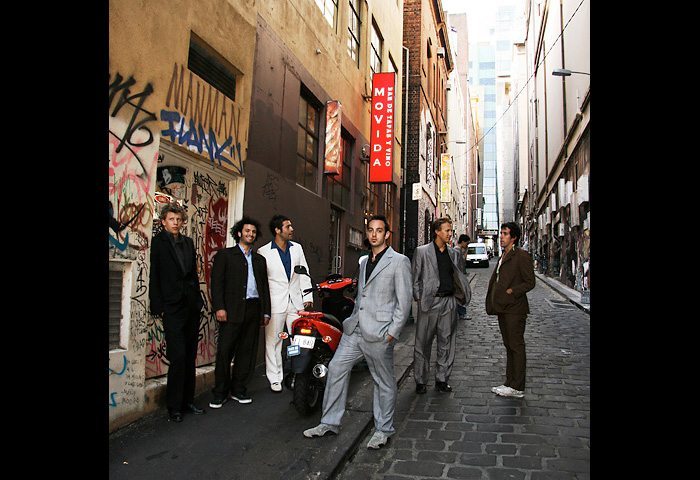
Jewish Melbourne
Photos by Angela Lynkushka
Opened: March 2007, closed: July 2007 | Curator and catalog editor: Helen Freiman, Melbourne | Coordinating curator: Geula Goldberg
Unfolding a unique Australian story of immigration, settlement and change, the exhibition was produced in cooperation with the Jewish Museum of Australia in Melbourne. This is the story of a striving community, comprised of three photographs series, representing three typical aspects of the Jewry of Melbourne. Continuity and Change: The Melbourne Community, 1989-2006 Two adjunct series, one of B&W photos from the “Community” series, created during 1988-1990, the other of large color photos, created during 2006 especially for the exhibition. The first series expresses photographer Angela Lynkushka’s wish to document various faces of the Jewish community of Melbourne at times of rapid changes. She focuses on regular people who live and work within the unique Australian arena, and also on familiar figures, such as actors, artists, young political and intellectual activists. The 2006 portraits show six of the younger generation of the community. Felix Tuchinsky, A Tapestry of Memory 1999-2002 Photos that reveal the story of Felix Tuchinsky, a holocaust survivor who lost his youth in the Nazi concentration camps and arrived at Australia at the age of 26. In his eighties, Tuchinsky translates his memories into art, expressing his spiritual might and reflecting on the vitality of the Melbourne community and the renewal of Australia Jewry after the holocaust. The Old Synagogue in East Melbourne, 2005 A series of photos documenting the oldest synagogue in Victoria, one of the most beautiful in Australia. The synagogue was established in the gold rush era of the 1850’s. the current building was inaugurated in 1877 and renewed during the 2000’s. it is formally a historical site in use, now called Melbourne City Synagogue. Angela Lynkushka’s photos exhibit the colonial architecture of the synagogue, along with examples of the community life around it. The exhibition and catalog were made possible thanks to the generosity of the Gandel Foundation, Australia.
By the Shores of the Black Sea
Jewish Farmers in the USSR, 1922–1941
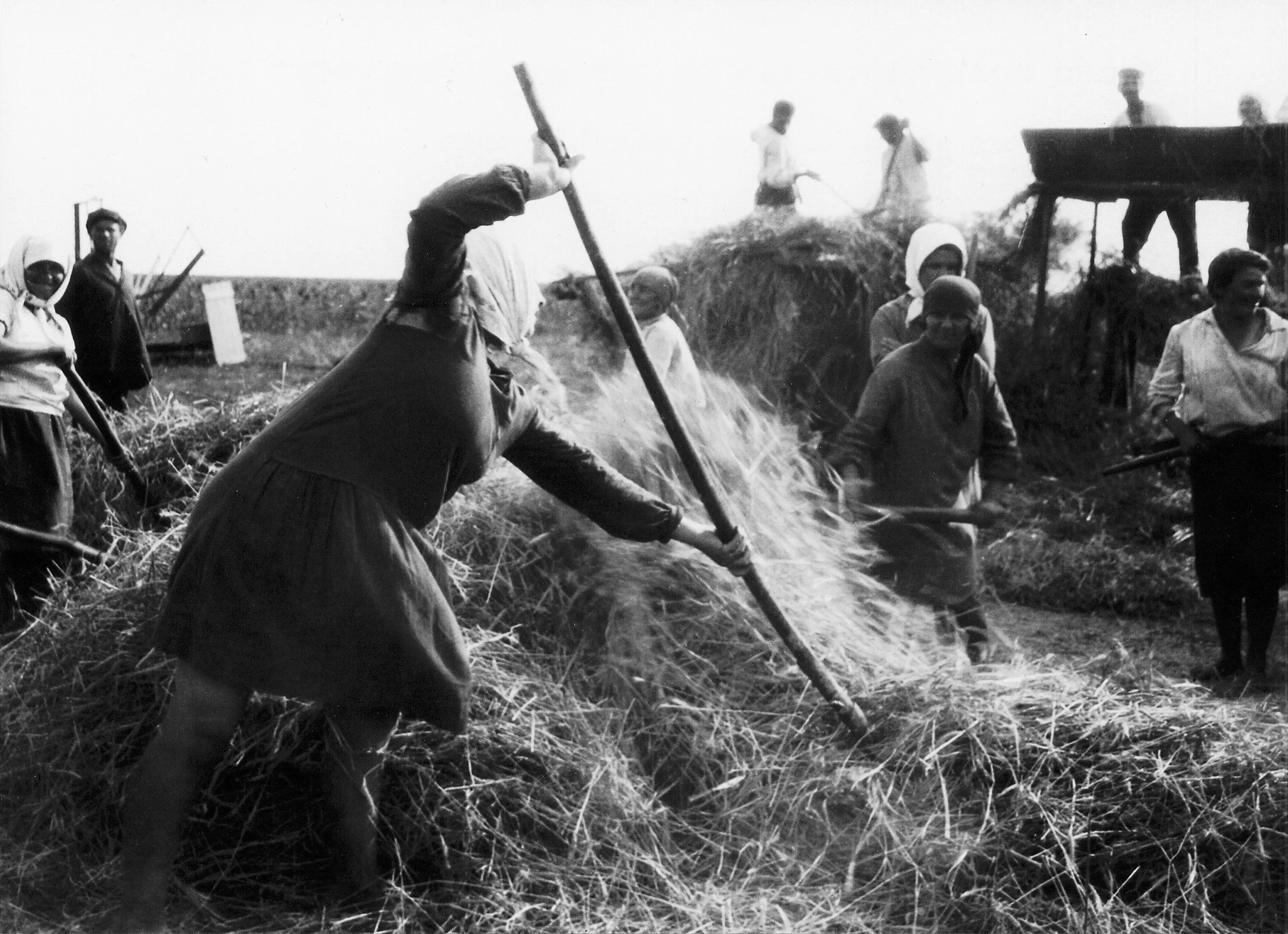
By the Shores of the Black Sea
Jewish Farmers in the USSR, 1922–1941
Opened: June 2005, closed: October 2005 | Curator: Rachel Schnold
The exhibition tells the story of the Jewish agricultural colonies in the Soviet Union, and in particular those in southern Ukraine and the Crimean Peninsula (now part of Ukraine). Among the items to be displayed are 45 photographs, 20 paintings by Meir Axelrod, a Russian-Jewish artist who documented the lives of the Jewish farmers in the colonies, and excerpts from historical films. In the 1920s, the Soviet government allocated territory for Jewish agricultural settlement in various places, including northern Crimea and southern Ukraine. The first settlers in Crimea (1922) were members of the Hehalutz movement. Thanks to assistance from Jewish philanthropies abroad, including the American Jewish Joint Distribution Committee (Agro-Joint), and the introduction of advanced farming methods and western technologies, the project was expanded. The region, most of it previously uncultivated, came to life. The Jewish colonies suffered a severe setback in the 1930s but continued to exist, despite the collectivization policy, Stalin’s reign of terror, and the suspension of Agro-Joint activities in the Soviet Union (1938), until the Nazi invasion in 1941 put an end to the enterprise. In 1930, the Soviet authorities sent the artist Meir Axelrod to document the lives of Jewish farmers in the Crimean colonies. He settled in the commune of Vojo Novo (Esperanto for “New Way”); many of his works depict life there. The story of Vojo Novo is also linked to a dramatic chapter in the annals of settlement in Eretz Israel: its founders were members of the left-wing faction of the Joseph Trumpeldor Labor Battalion (Gedud Ha’avoda), who returned to the Soviet Union after the group split in 1927. These “traitors to Zionism,” as they were perceived in Eretz Israel, came to a tragic end. After the commune was converted into a kolkhoz, some of its members moved elsewhere. Some, falling victim to the purges, were arrested and executed or disappeared without a trace into the labor camps of Siberia. The exhibition is mounted in conjunction with an international conference, “To the Land! 200 Years of Jewish Agricultural Settlement,” and is organized in cooperation with the Leonid Nevzlin Center for the Study of Russian and East European Jewry at the Hebrew University of Jerusalem and the American Jewish Joint Distribution Committee. The paintings and drawings of Meir Axelrod are on display by courtesy of the Yahilevich Collection. About Meir Axelrod (1902–1970): Meir Axelrod, born in Molodechno, Belorussia, studied at the Higher State Artistic and Technical Workshops (the Vkhutemas-Vkhtein), the center of avant-garde artistic activity in Moscow. Its teachers included Vladimir Favorsky and Alexander Rodchenko; Axelrod himself taught drawing there. When, as part of the first Five-Year Plan (July 1930), it was decided to create an artistic record of the achievements of agricultural collectivization, Axelrod was named to head the team sent to the Jewish farming colonies in Crimea. The Axelrod team included the artists Lidia Zholtkevich, Mikhail Gorshman, and Lev Zevin. In 1930/31 Axelrod created the series “In the Steppes,” comprising dozens of works in watercolor and gouache, sketches, and drawings. Some of these were exhibited in Moscow in 1931. Axelrod was also a book illustrator, graphic artist, and theater designer. His work includes the series “The German Occupation” (1941–1944), “The Ghetto” (1964–1969), and “Remembering Old Minsk” (1968). Axelrod’s work can be found in public and private collections in Russia and in Israel.
Tree of life
The Jews of Hungary, 1981-2004 - Photographs by Andres Lacko
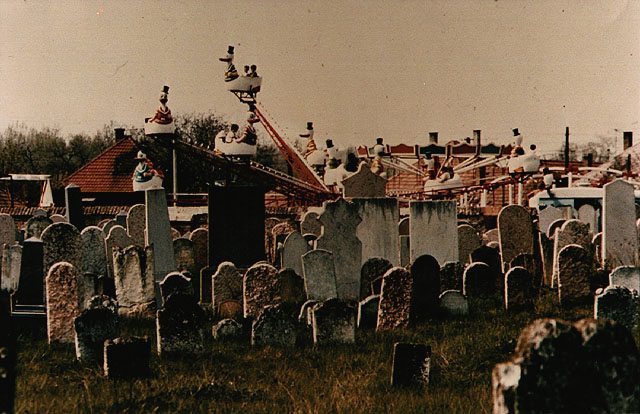
Tree of life
The Jews of Hungary, 1981-2004 - Photographs by Andres Lacko
Opened: May 2004, closed: August 2004 | Curator: Rachel Schnold
The exhibition “Tree of life – The Jews of Hungary, 1981-2004″ displayed a selection of 40 photographs by Andres Lacko, which reflect the changes in the lives of Hungarian Jews in the two decades of 1980’s – 2000’s. The exhibition blends past and present. Lacko’s first visual documentation dates back to 1981-1988, when Hungary was under Communist rule, and Jewish life was relatively meager. He took photographs throughout Hungary and Czechoslovakia mainly in places where Jewish communities no longer existed or were dying out. In that period he mostly focused on cemeteries, gravestones and synagogues converted into storehouses, as well as the elderly Jews in the towns and villages – all bearing witness to Jewish life which had vanished. Andres Lacko has returned to Hungary and Slovakia during the past few years and the photographs taken between 2000-2004 draw a different picture of Jewish life since the fall of Communism (1989). They depict the dynamic life of the Jewish community and reflect the participation of young people in communal life. This photographic project by Lacko, an Israeli of Hungarian origin, began after a visit he paid in 1978 with his father to the village where his grandfather was born, Dunaszerdahely, Czechoslovakia (now Dunajská Streda, Slovakia). The visit aroused his interest in Jewish history and culture. “For me, taking these pictures was a journey into my family’s past, about which I knew very little” he says. “It may have been my way of finding my roots.” The exhibition is being displayed in conjunction with the Hungarian Embassy in Israel. It will be exhibited in Hungary at the Photography Museum in Budapest and will then tour other galleries throughout Hungary. Lacko’s photograph project was made possible by the generosity of: The Memorial Foundation for Jewish Culture, New York; The Leslie and Vera Keller Foundation for Enhancement of the Jewish Heritage, New York; The Ministry of Cultural Heritage, Hungary; The Israeli Embassy in Hungary, Budapest; Alliance of the Jewish Communities of Hungary (MAZSIHISZ), Budapest; and World Jewish Congress, New York and Jerusalem. About the photographer, Andres Lacko: Andres Lacko was born in Argentina (Buenos Aires, 1947) into an assimilated Jewish family of Hungarian origin. His parents moved to Peru in 1966, where he studied Sociology at the Catholic University of Lima. Between 1975-1986 he lived in Budapest, where he studied at the Film Academy; one of his teachers was the renowned film director István Szabó. In 1986 Lacko immigrated to Israel and a year later was awarded second prize in a world photography competition organized by Beit Hatfutsot: “Jewish Heritage in the Eye of the Camera.” A selection of his photographs was displayed at the exhibition held at the Museum in 1987.
Sigmund Freud
Conflict and Culture
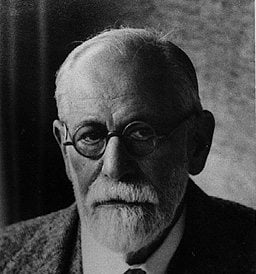
Sigmund Freud
Conflict and Culture
Opened: April 2002, closed: October 2002 | Curator: Sarah Harel Hoshen
Few figures have had as decisive and fundamental an influence on the course of modern cultural history as Sigmund Freud. Yet few figures also have inspired such sustained controversy and intense debate. Freud’s legacy continues to be hotly contested, as demonstrated by the controversy attracted by this exhibition even before its opening. Our notions of identity, memory, childhood, sexuality, and, most generally, of meaning have been shaped in relation to — and often in opposition to — Freud’s work. This exhibition examines Freud’s life and his key ideas and their effect upon the twentieth century. Sigmund Freud: Conflict and Culture is composed of three major sections. Section One: Formative Years The Formative Years section begins in late nineteenth-century Vienna, the milieu of Freud’s early professional development. The cultural ferment, ethnic tensions, and class conflicts of fin-de-siecle Vienna were part of Freud’s daily existence. The city was a hothouse for radical innovations in politics, philosophy, the arts, and sciences. Freud chose early to concentrate on research in neurology, a field in which the frontiers of knowledge were changing dramatically. Financial concerns eventually led him to pursue clinical work with patients. His analyses of patients and of himself became the chief sources for his professional writings. Section Two: The Individual: Therapy and Theory This section examines key psychoanalytic concepts and how Freud used them in some of his most famous cases. Like many doctors, writers, and philosophers working at the end of the nineteenth century, Freud grew increasingly interested in the unconscious. He took the unconscious to be a dimension of human life at once inaccessible and important as a source of thoughts and actions. In his efforts to decipher the meanings of hysterical symptoms and other neglected mental phenomena that seemed beyond conscious control (such as dreams and slips of the tongue), Freud moved further away from his neurological training. Committed to the idea that apparently meaningless behaviors actually expressed unconscious conflict, he developed techniques for determining what the behaviors might mean. This section—divided into six parts—introduces us to some of Freud’s most famous patients and the key concepts with which he tried to make sense of their symptoms and their lives. Section Three: From the Individual to Society The third section explores the diffusion of psychoanalytic ideas, and Freud’s speculations about the origins of society and the social functions of religion and art, and how crises reveal fundamental aspects of human nature. As Freud expanded his sphere of inquiry to include basic questions about moral and political life, he inspired intellectuals and artists to take his theories about conflict, desire, and the unconscious into new areas. These theories seemed to many to open promising new avenues for understanding the successes and failures of modern society. Others thought that these routes led straight to deception — or worse. The first part of this section deals with the professional expansion of psychoanalysis and the critical reaction to that expansion. Next the exhibition examines Freud’s theories of society, from his speculation on its origins to his views of the contemporary world. The violent crises that shook the world at the end of Freud’s life are the subject of the final part of this section. Throughout the exhibition, words and images — often contentious, sometimes humorous —attest to the impact of Freud’s ideas on the twentieth century. Freud’s thinking emerged in the wake of Marx and Darwin, both of whom emphasized struggle as the engine of change. Freud’s thought developed in a century in which violent conflicts reached unheard of dimensions. The conflicts that Freud stressed were within the psyche: people at war with themselves and sometimes with the cultural authorities they had internalized. But he thought that the way we managed (or failed to manage) those conflicts had everything to do with the explosions of violence that marked the modern world. Although much has changed since Freud first formulated his theories, today’s concern with the disruptive power of sexuality and aggression has only intensified. Freud did not propose solutions to how one might escape this violence. Instead, his writings on the connection of culture and conflict identified fundamental problems for the twentieth century — problems that show no sign of disappearing as we move into the twenty-first. The exhibition has been organized by the US Library of Congress in cooperation with The Sigmund Freud Museum, Vienna and The Freud Museum, London. The Exhibition was made possible thanks to the generous sponsorship of the following: Austrian Embassy in Tel Aviv Austrian Ministry of Education Bank of Austria Casinos Austria International City of Vienna Helmut Zilk-Fonds fuer internationale Beziehungen Wiens Israeli Munistry of Foreign Affairs – Joshua Rabinovitch Oesterreichische Nationalbank R. Steindling Wiener Staedische
Homage to Odessa
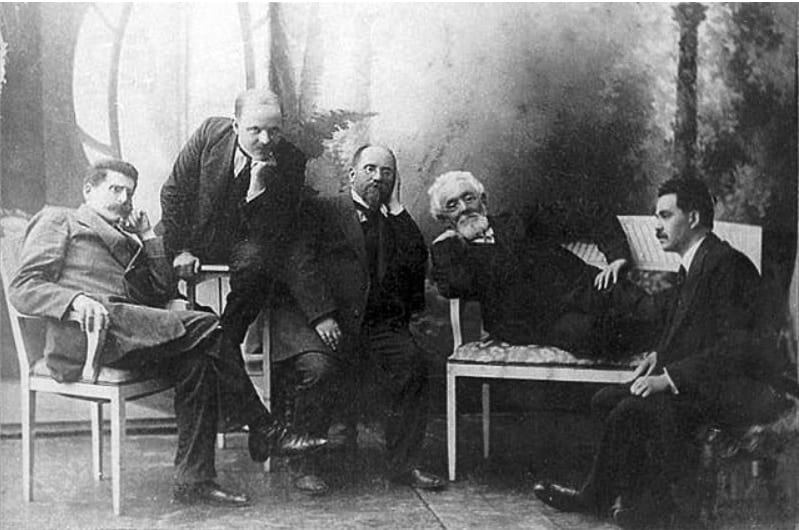
Homage to Odessa
Opened: April 2000, closed: August 2001 | Curator: Rachel Arbel
The author and essayist Eliezer Steinman summed up the years he spent in Odessa with a categorical “that’s what Odessa was like.” But he added, without pausing, “Was it really like that? Maybe that is how it was revealed to me in my memory, in a retrospective vision?” Odessa was a myth even before it was a memory. A wealthy city, fun-loving, frivolous and sinful. That is how Jews in the Place of Settlement pictured Odessa in the late 19th century. Literature enhanced and fostered the myth: Mendele Mokher Seforim and Shalom Aleichem portrayed Odessa through the wide eyes of newcomers from the shtetl, like Fishke the Lame and Menahem-Mendel. Vladimir Ze’ev Jabotinsky in his novel Piatero (“They were five”) and Isaac Babel in his Odessa Tales contributed to the city’s frivolous image through their descriptions of various facets of Odessan Jewry: the former in his depiction of the Jewish bourgeoisie which had adopted Russian culture; the latter in his stories about the Moldavanka suburb and the Jewish underworld. In the three exhibitions that compose our “Homage to Odessa”, we were looking for the relationship between the mythical image of the city and a very different image – Odessa, the capital of modern Jewish literature (an identification that itself developed into a myth of sorts). In many senses, the Hebrew authors of Odessa constituted a closed and isolated entity, as described by Y.D. Berkowitz: “The Odessa writers lived as on an enchanted far-off island, strolling among the frivolous, fun-loving Odessans; they viewed these Odessans, who had integrated in their own unique way into Russian culture, as if they were hospitable yet spiritually remote natives.” We found the thread that runs through these different worlds in the attempts of artists and writers to relive the unique character of the city; this character, as it emerges in their memoirs, literature, and art, is elusive and nebulous, while at the same time distinct and tangible. This is exemplified in Yefim Ladizhingsky’s series, Growing Up in Odessa; his paintings constitute a journey through his memories to the city where he was born and grew up, to its bustling streets, its sun-drenched parks, and boulevards, its colorful markets, beaches, residential compounds and houses, its coffeehouses. Ladizhinsky portrays Odessa through the eyes of the child he once was, but also through the prism of the adult artist. His paintings reach out in longing for that vanished world by eschewing perspective leaving us outside the picture, removed from the space it defines. “We are merely looking,” he remarked of his pictures, “not taking part in them… Never again will we find ourselves sitting beneath the striped awning of the coffeehouse, wearing tennis whites, or crowding around the band in the park.” The same clear, mischievous spirit in Ladizhinsky’s Odessa may be found in the fiction of Babel, Mendele, Shalom Aleichem and Jabotinsky. It is also found in the memoirs of many of those attracted in the early 20th century to Odessa, where they hoped to find a place in its circle of Hebrew writers. The writers of these memoirs take walks on the beaches, around the Fontaines, in Alexander Park; they converse about lofty matters while treating themselves to ice cream in a coffeehouse of cracking watermelon seeds on the boulevard. They are wrapped in the same sense of ease and belonging that is radiated by Ladizhinsky’s paintings. The excerpts from memoirs and belles-lettres that are incorporated in the three exhibitions complement one another. They open another window through which we observe that unique quality of Odessa: a carefree, whining, and open city, where, for a brief moment, Jews could feel at peace and at home in the earthly order. Even when they chose to preserve or to cultivate their distinct identity, as did the Hebrew writers of Odessa, they did not become the classic “other”; they became just one more hue on the city’s multicolored palate. Perhaps it was no a coincidence that in this most modern, liberal and multinational city in the Russian Empire it was possible to dream about the revival of a national culture that would be both Jewish and modern, and to try to turn that dream into reality. Where do memories end and myths begin? Or in Steinman’s words, “Was it really like that?” Did those who frequented the coffeehouses and strolled on the promenades really wear only white in summer? Where the Hebrew writers really a band of brothers who spent entire days in extended conversations in the parks and on the boulevards? Was there really a spirit of tolerance and mutual respect among the many nationalities living in Odessa? Debbi Cooper’s photographs of Odessa close the circle and return to contemporary Odessa in quest of the lost golden age. Jewish Street, Vorontsov Palace, Nikolayevsky Boulevard, Bialik’s house, the building where Jabotinsky lived – these are mere relics of past glory that is no more. Today, little is left of this enchanted setting, yet the peeling buildings retain a charm of their own. Something of the mischievous and ironic spirit of Odessa is sensed in Cooper’s photos. Perhaps it is only the myth of the glorious past that lends its glamour to the impoverished present. Perhaps it exists in the eyes of the beholder, in our own eyes. (Rachel Arbel, curator)
Him Too..?? Oz Almog's Concise Index Judaeorum
A Chronicle of a Cultural Obsession
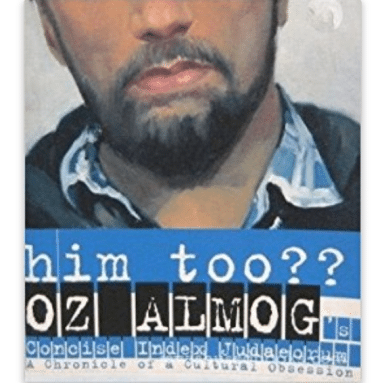
Him Too..?? Oz Almog's Concise Index Judaeorum
A Chronicle of a Cultural Obsession
Opened: May 2000, closed: August 2000
Oil paintings of prominent Jews from various cultures, eras, and continents. Exhibited at the Jewish Museum, Vienna, 22 September-31 October 1999; ; Hallisch-Frankisches Museum, Schwabisch Hall, 1 September-12 November 2000. Portraits of well-known politicians, scientists, writers, philosophers, artists, musicians, composers, businessmen and actors, among others, from Moses to the present.
Icons of War – Yevgeny Khaldei | Soviet Photographer
World War II
Icons of War – Yevgeny Khaldei | Soviet Photographer
World War II
Opened: May 1999, closed: May 2000 | Curator: Rachel Schnold
Yevgeny Khaldei was one of the most prominent Soviet photojournalists of World War II, and played an important role in molding memories of this war. Khaldei’s “visiting card” was “The Raising of the Soviet Flag Over the Reichstag Building” May 2, 1945 – a photograph which commemorates the capture of Berlin and the end of the Third Reich. This picture, which Khaldei staged meticulously, is one of the renowned historic photographs of the 20th century. The life of Khaldei, born into a Jewish family, was bound up with the changes which occurred in the Soviet Union before, during and particularly after the war – when he became the victim of anti-Jewish purges. Exhibition sections: 1917 – 1940 From Yuzovka to Moscow / the Young Photographer | 1941 – 1945 From Moscow to Berlin / Photographer of the “Great Patriotic War”| 1945 – 1946 / From Berlin to Potsdam and Nuremberg |1947 – 1990 – Back to Moscow / Antisemitism / A Propaganda Photographer |1991 – 1997 – Epilogue / International Fame. The exhibition was opened in 1999, marking the 60th anniversary of the outbreak of World War II.
The Chinese Saga of a Viennese Doctor
The Story of Jakob Rosenfeld
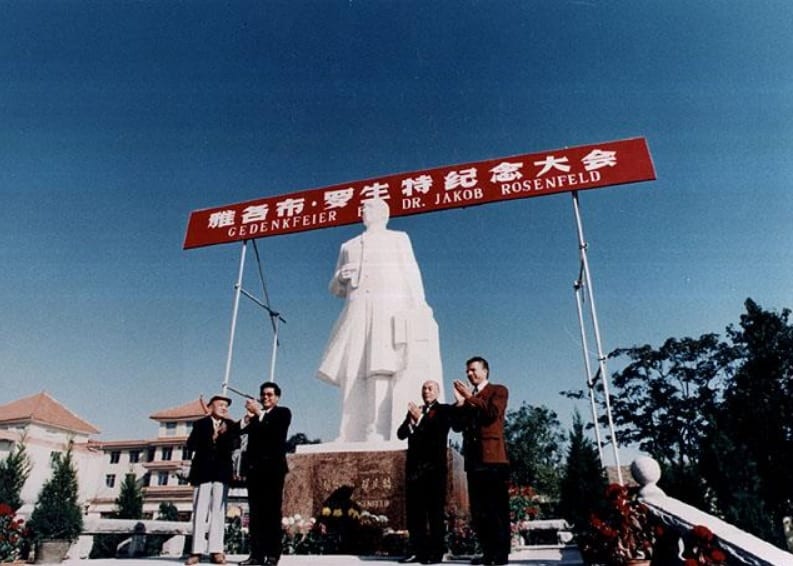
The Chinese Saga of a Viennese Doctor
The Story of Jakob Rosenfeld
Opened: January 1999, closed: July 1999 | Curator: Rachel Arbel
About Jakob Rosenfeld (1903-1952): physician, general in the Chinese army, born in Lemberg, Austria-Hungary (now Lviv, in the Ukraine), the son of an officer in the Austro-Hungarian army. His family settled in Woellersdorf, in Lower Austria in 1910, where Jakob Rosenfeld attended the school and then continued his education at the gymnasium in Wiener Neustadt. He studied and then practiced medicine in Vienna. Following the Anschluss, he was arrested by the Nazis who confiscated his house in central Vienna. He was detained in the Dachau and Buchenwald concentration camps, was released in the autumn of 1939 and given a few days to leave the country. Rosenfeld succeeded in immigrating to Shanghai, China, where he joined the Communist army of Mao Tze Dong serving as a physician. Known in Chinese as Luo Shengte (“Long Nose”), he took part in the battles against the Japanese occupation forces and then against the Nationalist army of Chiang Kai-shek. Rosenfeld’s efforts and contribution were acknowledged and he was eventually granted the rank of general in the Chinese Communist army. He returned to Vienna in 1950 where he tried to continue his practice, but left a short period with the hope to come back to China. He immigrated to Israel, where he started working in a Tel Aviv hospital and died there in 1952. Jakob Rosenfeld has been acclaimed as a national hero in China.
Pilgrimage in the Jewish World
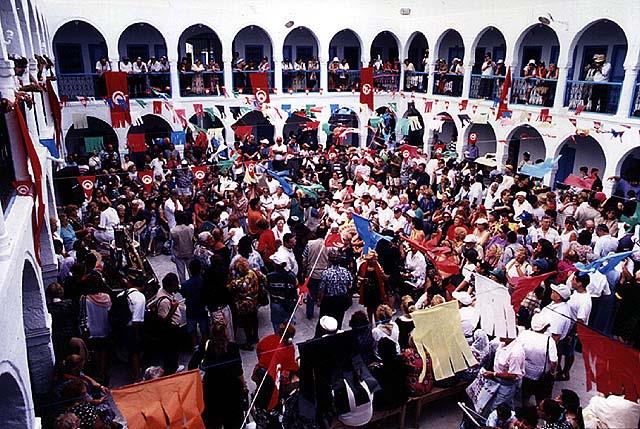
Pilgrimage in the Jewish World
Opened: January 1999, closed: April 1999 | Curator: Ruth Porter | Photos by Micha Bar-Am, Kobi Kalmanovitz, Shimon Lev, Alex Levac, Shlomo Taitz
Blue and White in Color
Visual Images of Zionism, 1897-1947
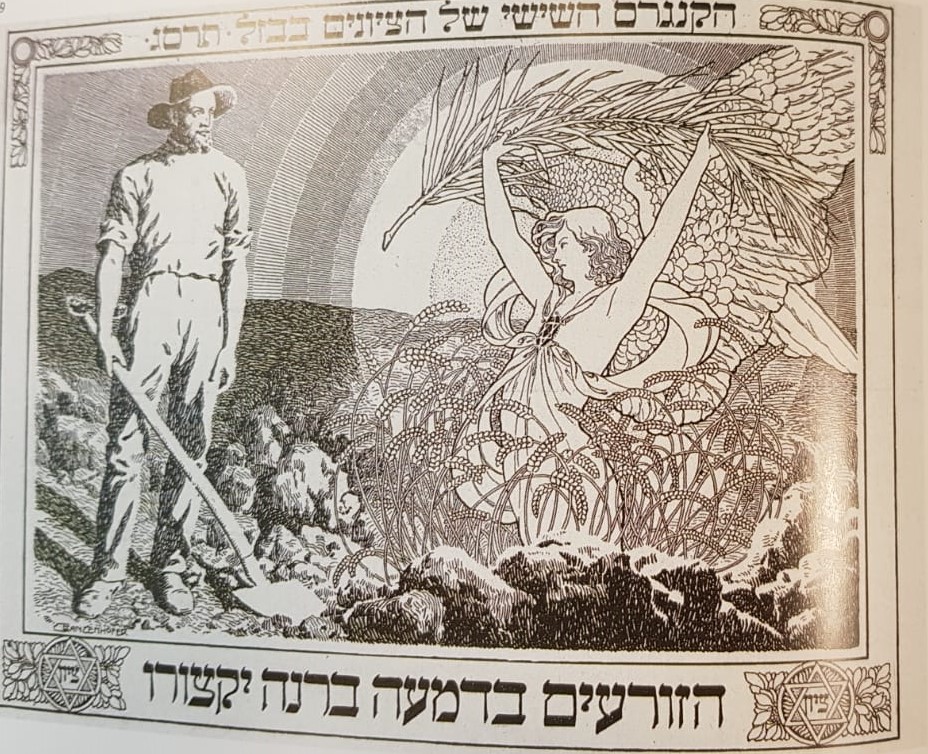
Blue and White in Color
Visual Images of Zionism, 1897-1947
Opened: August 1996, closed: August 1997 | Curator: Rachel Arbel
Jews and Medicine
Religion | Culture | Science
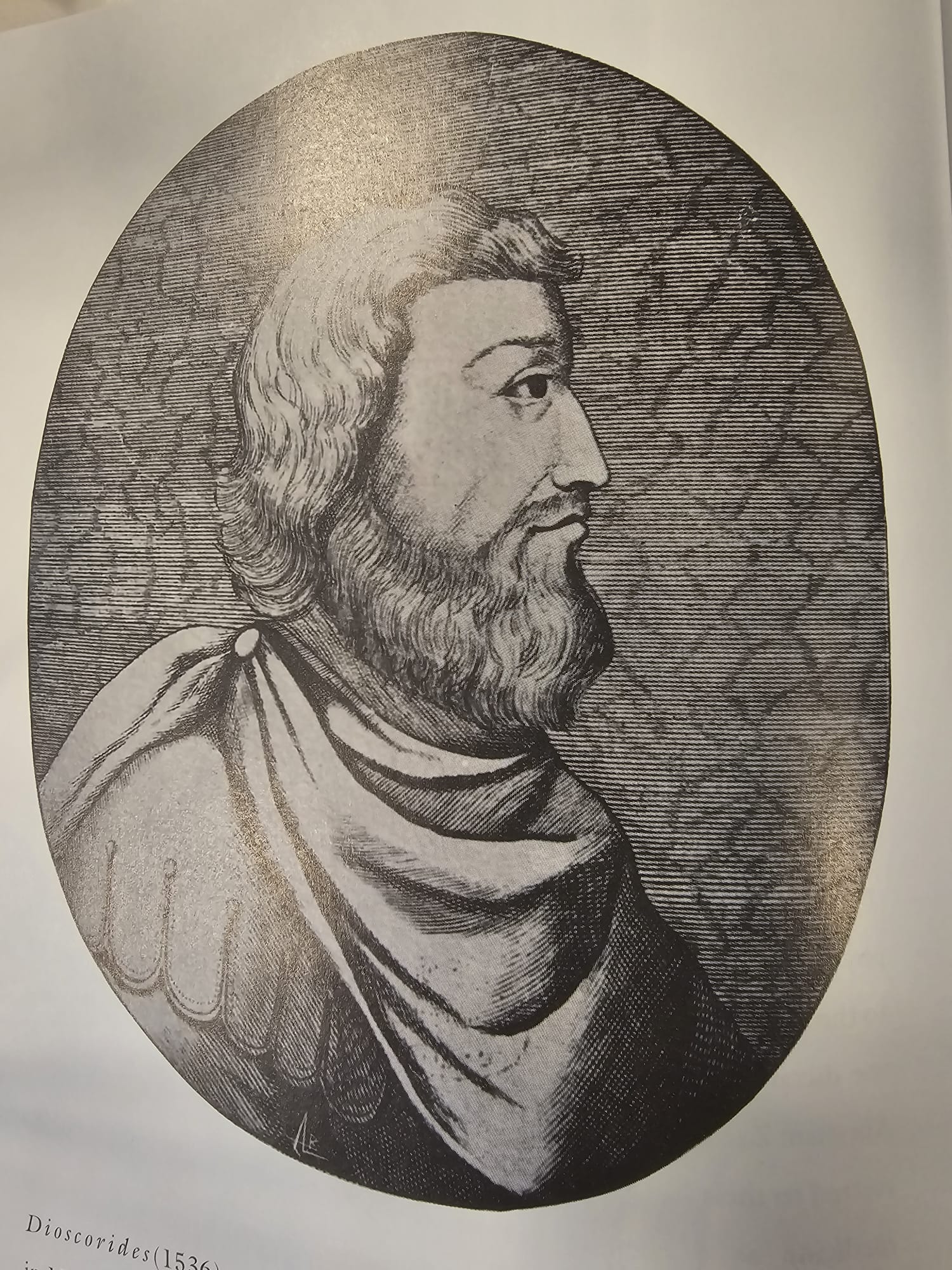
Jews and Medicine
Religion | Culture | Science
Closed: 1996 | Curator: Natalia Berger
Since the Middle Ages, Jews have regarded medicine as one of the most honorable professions to pursue. Indeed, Jews have been represented in medicine in much greater numbers than their percentage in the population would seem to warrant. Jews and Medicine examines the special relationship between Jews and medicine both intrinsically, from within, and historically, from without. Two questions were posed: first, does Judaism in itself foster a special attitude toward medicine, and secondly, to what extent did life in the Diaspora influence the Jewish contribution to medicine?
In the Heart of the Atlas
Jews of Rural Moroccom Elias Harrus, Photographs 1940-1960
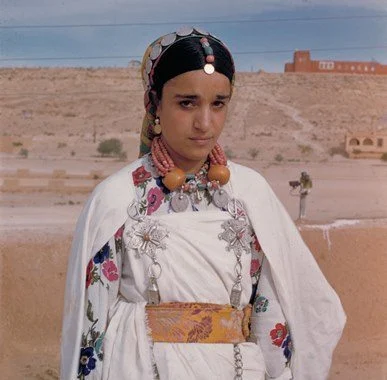
In the Heart of the Atlas
Jews of Rural Moroccom Elias Harrus, Photographs 1940-1960
Opened: January 1993, closed: | Curator: Sara Hoshen-Harel | Designers: Sarah Levin, David Gal
Life in the rural Jewish communities of Morocco that existed until fifty years ago now exists only in memory: the memory of those who left and that of those who remained, and the visual memory recorded in photographs and film footage. Personal objects, garments and work tools have now become ethnographic museum exhibits. The Jewish communities in the Atlas mountains and the northern Sahara oases ceased to exist in the mid-1960s as a result of internal and external migration, mostly to Israel. These communities were among the most ancient and deeply-rooted of the Jewish diaspora communities, and according to some folk traditions, were founded almost 3000 years ago. In the mid-1940s the region still had more than one hundred and fifty mellhas, Jewish neighborhoods of the walled Berber villages. Elias Harrus, an amateur photographer, frequented these communities as representative of the Alliance Israelite Universelle educational network. For over two decades he documented, on hundreds of rolls of film, the rural Jews and their world. Elias Harrus’ stand as a documenting photographer differed from that of other photographers active in Morocco at the time. The latter were usually Europeans traveling as scholars, collectors or ethnographers: foreigners viewing the exotic “other”; while Harrus, the native of a town in the middle Atlas and a graduate of the Alliance teachers’ college in Paris, belonged at one and the same time to two cultures indigenous and European. Thus, alongside a natural sense of beauty and composition, his photographs reflect empathy and intimate acquaintance with his subjects. The literary quotations in the exhibition are from Inside Maghreb: the Jews in North Africa, by H.Z. Hirschberg, scholar of North African Jewry from the Hebrew University in Jerusalem, who toured Morocco in the spring of 1955.
Where Cultures Meet
The Story of the Jews of Czechoslovakia

Where Cultures Meet
The Story of the Jews of Czechoslovakia
Closed: 1990 | Curator: Natalia Berger
The story of the Jews of Czechoslovakia – a community with a history of more than a thousand years – is unique. Despite the destruction of the community during the Holocaust, a small number of people succeeded in preserving their cultural heritage and created one of the largest and most important collections of Judaica and documents in the world.
Jews in the World of Sports
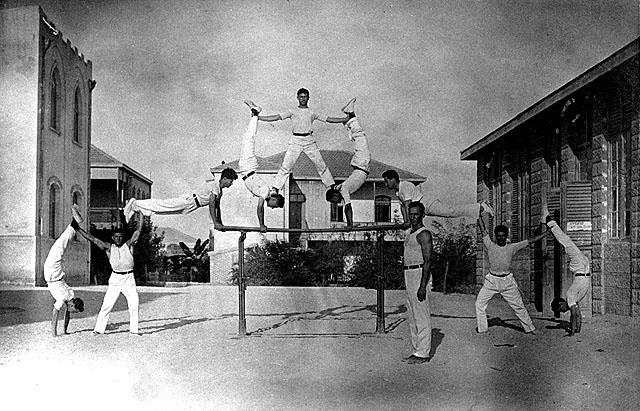
Jews in the World of Sports
Opened: January 1985, closed: April 1985 | Curator: Rachel Arbel
The Jews of Kaifeng
Chinese Jews on the Banks of the Yellow River
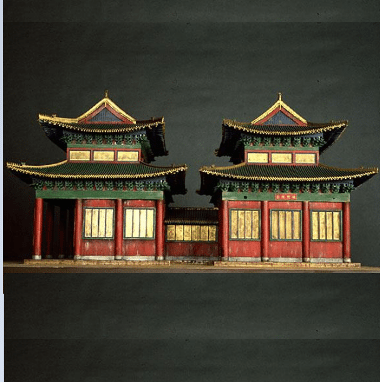
The Jews of Kaifeng
Chinese Jews on the Banks of the Yellow River
Opened: March 1984, closed: July 1984 | Curator: Leorah Kroyanker | Historical Consultants: Prof. Irene Eber, Michael Pollak | Design: David Gafni
The exhibition “The Jews of Kaifeng” recounts the story of a small community of Jews who lived in Central China, in the city of Kaifeng. Jews initially arrived in China from the Near East by way of the Silk Route – the commercial road linking China to the West – more than 1,000 years ago, and settled in different cities, among them Kaifeng, which was then the capital of the North Sung Dynasty. Their relations with the rest of the Jewish world were tenuous; and when, in the 16th century, China shut itself off from the West, these relations ceased completely. only in the 17th century, following the Jesuit missionaries’ arrival in China, did new reports reach Europe of Jews who were indistinguishable from their Chinese neighbors in appearance, yet who maintained a Jewish way of life. The size of this community probably never exceeded 1,000 to 2,000 people. They were well integrated into the surrounding environment, economically well established and of respected status. Some even gained high official rank. Their synagogue, which resembled a Chinese temple, was originally founded in 1163.
World of Yesterday
Jews in England, 1870-1920
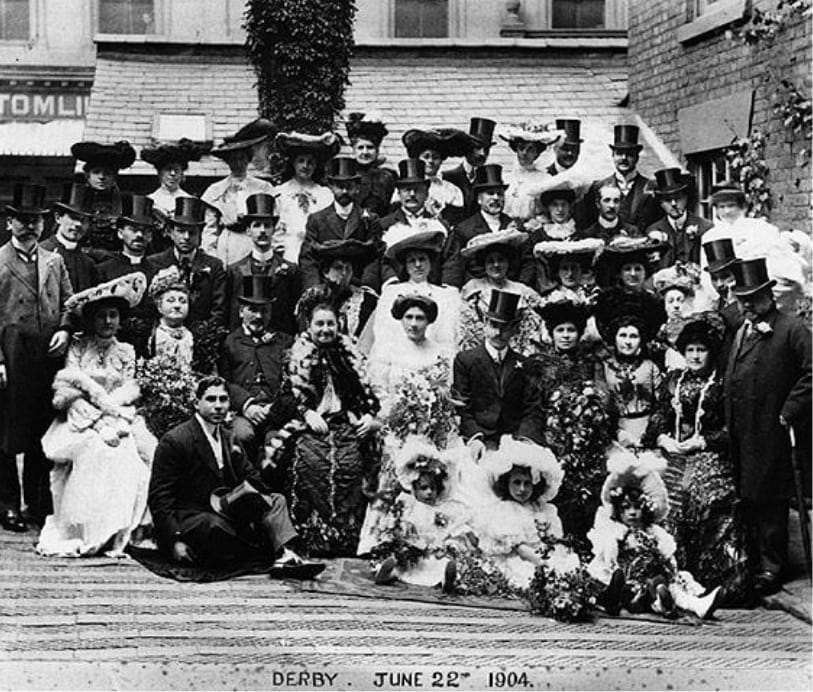
World of Yesterday
Jews in England, 1870-1920
Opened: January 1984, closed: July 1984 | Curator: Nava Schreiber Photographer: Dr. Nahum T. Gidal
Jewish Communities in Spanish Morocco
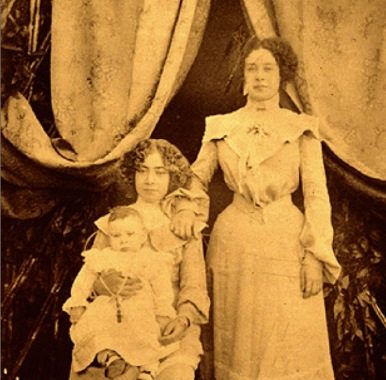
Jewish Communities in Spanish Morocco
Opened: January 1983, closed: October 1983
The Jews who were expelled from Spain and Portugal at the time of the Inquisition wielded a strong influence on the social economic and spiritual life of all the communities of all the communities they reached. They left a particularly distinctive mark on the communities of northern Morocco. The exhibition “Jewish communities in Spanish morocco is dedicated to the Jewish communities of Tetuan, Tangier and the neighboring towns. there the expelled Jews and their descendants continued to preserve their distinctive language and traditions, and lost none of the individuality in the encounter with the local environment. Most of the visual material collected prior to the exhibition was taken from the albums of Jewish families from northern Morocco. The hundreds of photographs we received have been deposited in the Visual Documentation Center of Beit Hatfutsot. The communities: Tetuan, Tangier, Ceuta, Melilla, Arcila, Larache, Alcazar Quivir, Chechauen, Gibraltar.
The Living Bridge
The Meeting of the Volunteers from Eretz Israel with the Holocaust Survivors
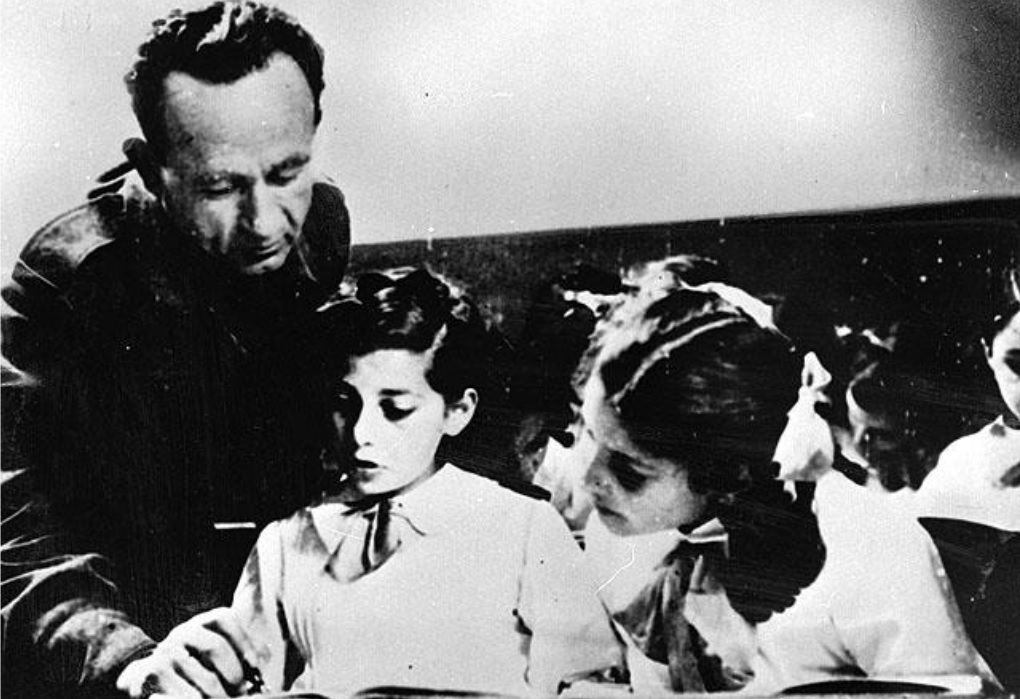
The Living Bridge
The Meeting of the Volunteers from Eretz Israel with the Holocaust Survivors
1983 | Curator: Nava Schreiber
The exhibition – “The Living Bridge – the meeting of the volunteers from Eretz Israel with the Holocaust survivors” is dedicated to the memory of Haim Laskov. Haim Laskov, renowned as one of Israel’s chiefs of staff, was among those who volunteered for service in the British army. As an officer in the Jewish Brigade, he took part in the historic encounter with the remnants of European Jewry which this exhibition records. Towards the end of his life, in his capacity as President of the Israel War Veterans’ League, he was one of those who initiated this exhibition. “The Living Bridge” was prepared on the initiative and with the active assistance of the Israel War Veterans’ League. Its objective is to bring to the knowledge of the general public, and in particular the young generation, a dramatic and vitally important chapter in the annals of the Yishuv, which must never be eradicated from national consciousness. By virtue of the volunteering movement, which brought thirty thousand Palestinian Jews into the ranks of the British army, the historical fact that was established that Jews, fighting under the Jewish flag, took part in the battle against the Nazis. And thanks to the Zionist mission which these volunteers carried out after the War ended among the Holocaust survivors, in the DP camps and along the escape and illegal immigration routes, hundreds of thousands of Jewish refugees were transformed into a great force, fighting for the right to build their home in their historic homeland. There can be no doubt that the organized pressure of the survivors played a significant, perhaps decisive part in the political developments which led ultimately to the establishment of the State of Israel. The various sections of the exhibition endeavors to reconstruct, with the aid of photographs, the encounter of the volunteers with the Jews of the Diaspora – in the Middle East, in North Africa and in Europe. The visual material has been taken in part from the I.D.F. Archives and other public archives, but the great majority was provided by private individuals – former volunteers in British army units. Members of the Israel War Veterans’ League played an important part in collecting this material.
Synagogues in 19th Century Germany
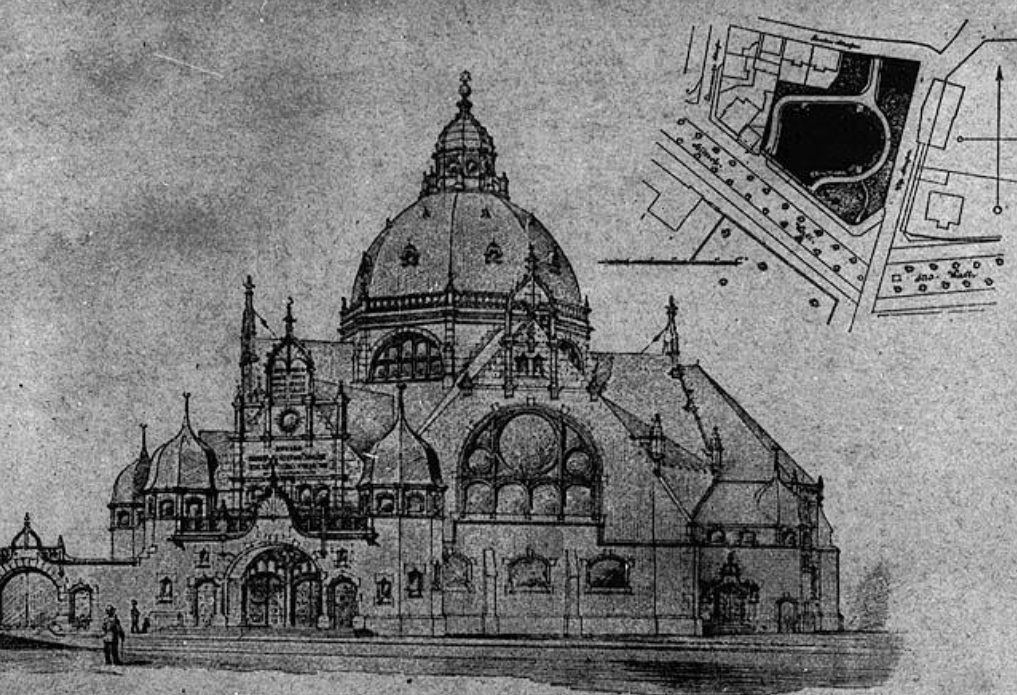
Synagogues in 19th Century Germany
Opened: December 1982, closed: August 1982 | Photographer: Dr. Adina Meyer | Curator: Sarah Harel Hoshen
The Wonderful Island of Djerba
An Ancient Jewish Community on the Tunisian Coast / Photographs by Jan Parik
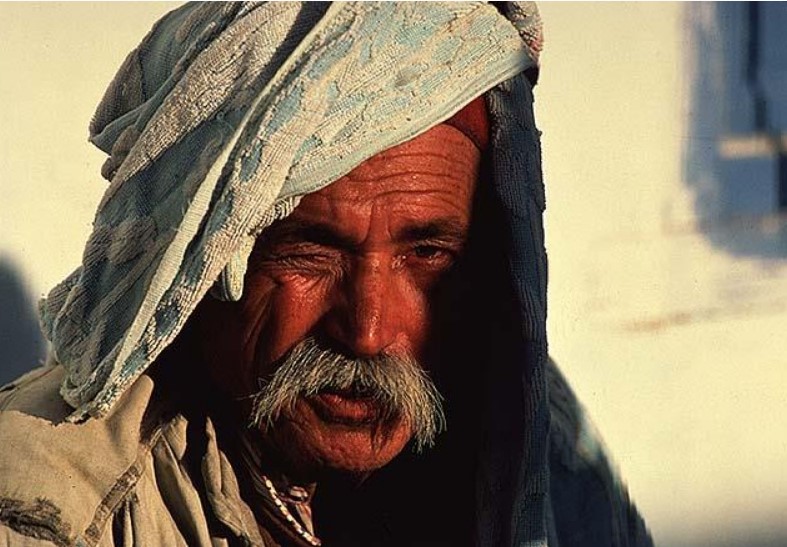
The Wonderful Island of Djerba
An Ancient Jewish Community on the Tunisian Coast / Photographs by Jan Parik
Opened: April 1981, closed: November 1981 | Curator: Nava Schreiber
A Century of Jewish Settlement in Western Canada
A Century of Jewish Settlement in Western Canada
1981 | Curator: Nava Schreiber
Beit Hatfutsot hosts the exhibition “A Century of Jewish Settlement in Western Canada”, prepared jointly by the Jewish Historical Society of Western Canada and The Jewish Communities of Western Canada. The exhibition was planned and organized by Harry Gutkin, Vice-President of the Jewish Historical Society of Western Canada, assisted by Mrs. Dorothy Hershfield, the Executive Director of the society and Mrs. Nisenholt, the Archivist. Loan of the exhibition to Beit Hatfutsot was made possible by the kind generosity of Mr. Sol Kanee from Winnipeg, Honorary President of the Jewish Historical Society of Western Canada and Treasurer of the World Jewish Congress. The exhibition was first presented in its original form under the name “Journey Into Our Heritage”, at Winnipeg in 1972/3. Later the touring version was prepared and taken across Canada. When adapting this touring exhibition to the specific context of Beit Hatfutsot, a few exhibits relating to general aspects of Jewish life and Jewish religious ritual were deleted. The catalog is based both upon the exhibition itself and on Harry Gutkin’s book, “Journey Into Our Heritage”, which appeared in Canada in 1980.
La Nacion
The Spanish and Portuguese Jews of the Caribbean
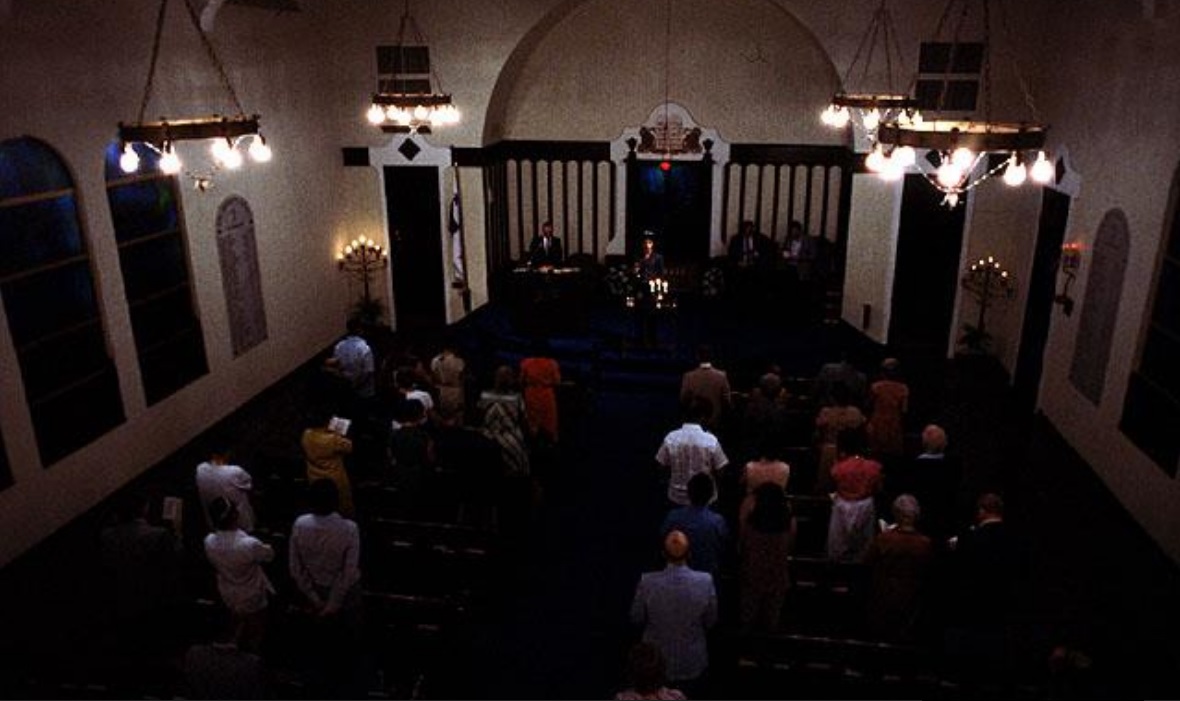
La Nacion
The Spanish and Portuguese Jews of the Caribbean
1981 | Curator: Nava Schreiber
Several centuries ago, Jewish life in the Caribbean thrived with activity. Descendants of the Conversos from Spain and Portugal came to the region in the 17th century and established a chain of flourishing settlements. They played important roles in the lands where they lived, participating in the political and military struggles, and saw themselves as part of what they called “The Portuguese Hebrew Nation,” or the “Nacion.” Today, only a few remnants of this “Nacion” survive. Jewish communal life is limited to a few centers. Elsewhere, all that remains are ruins, tombstones, and memorial tablets, most of which are neglected. The jungle is slowly taking over the sites of ancient synagogues; poisonous fumes from refineries erode the ancient gravestones and the inscriptions are fading; houses of prayer have become cinemas, warehouses and, in one case, a fish restaurant. Beit Hatfutsot sent out a small expedition to the region to locate these remains, document them, and preserve the record for future generations. The project was initiated by Mordechai Arbell, who has studied the history of the Jews of the Caribbean. He was accompanied by the well-known photographer Micha Bar-Am and, for part of the time, by David Silber, a senior member of the Beit Hatfutsot staff. Under the direction of Mr. Arbell, Micha Bar-Am photographed the remains of the Jewish communities in Surinam, Curacao, Coro (Venezuela), Barranquilla (Colombia), Panama, Jamaica, Barbados, St. Thomas, and St. Eustatius. Some 240 of his pictures are displayed in this exhibition. We would like to express our thanks to all who have helped make this exhibition possible; first and foremost, Mr. Shoul N. Eisenberg, Honorary President of the Association of Friends of Beit Hatfutsot in Israel, who financed the expedition, the exhibition, and the catalog. Special thanks are also due to Dr. Geoffrey Wigoder for his assistance in compiling the catalog and to Orna Bar-Am who helped with the editing and the presentation of the exhibition. We also express thanks to Ernst de Souza from Kingston, Jamaica, who contributed some photographs from his collection to the exhibition.
The Closed Curtain
The Moscow Yiddish State Theater
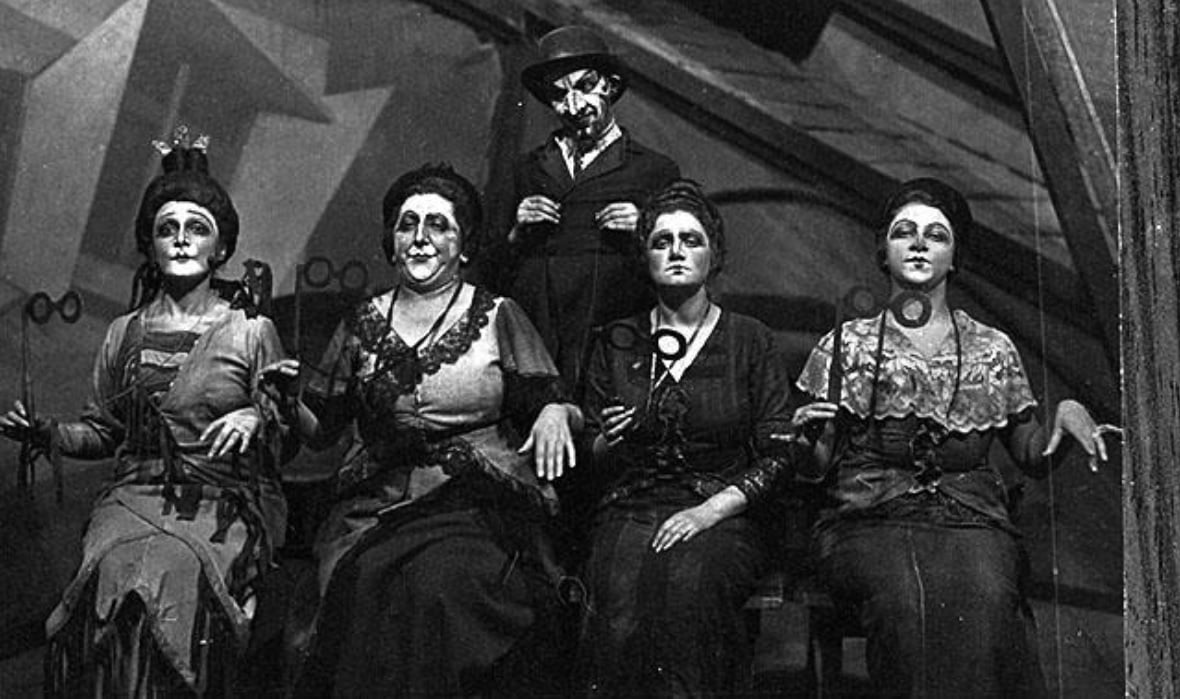
The Closed Curtain
The Moscow Yiddish State Theater
1980 | Curator: Nava Schreiber
“I would have liked the Moscow Yiddish State Theater and its actors to be remembered not only in the light of the tragic events which beset them but principally for their artistic merit”, said Mrs. Ella Perlman, daughter of the actor Benjamin Zuskin, as she donated her father’s collection of photographs to Beit Hatfutsot. Mrs. Natalia Mikhoels-Vovsi, the daughter of Solomon Mikhoels, also lent the Museum photographs from her collection. Thanks to both of them this exhibition was made possible.The exhibition depicts some of the diverse activities of the Theater, whose development occurred during the great cultural revival after the Russian Revolution. It traces the Theater’s story from the beginning and describes the artistic achievements and changes that took place over the years until the Theater’s destruction in 1949.
Kafka-Prague
Photographs by Jan Parik
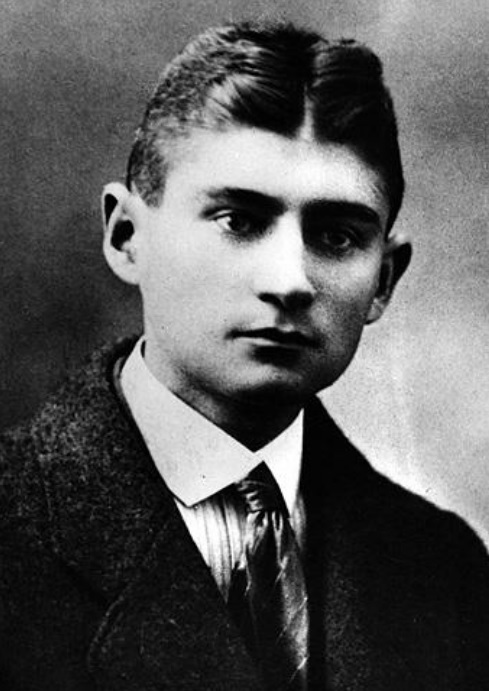
Kafka-Prague
Photographs by Jan Parik
1980 | Curator: Nava Schreiber
The “Kafka-Prague” exhibition tells the story of an exceptional writer who made an unforgettable contribution to world literature. Kafka’s story is recounted against the background of his birthplace – the city of Prague – a meeting point for eastern and western cultures. This is a city where ancient Jewish communities flourished in a ferment of intellectual achievement; a city that produced Jewish thinkers and creators who make an indelible impression on the twentieth century. This exhibition was prepared and compiled for Beit Hatfutsot by the photographer, Jan Parik. It comprises documentary material on the life of Franz Kafka, collected from various sources by Parik, as well as exceptional photographs of Prague which he took himself. Parik’s camera captures the landscape that surrounded Kafka, and offers the visitor a glimpse of the unique atmosphere of Prague through its churches and towers, bridges and alleys, as well as through the endless corridors of the office buildings. The exhibition is divided into the following sections: Childhood, University Years, Adulthood and the Last Years. To complete the exhibition, a sculptured bust of Kafka, by Dan Kulka, and a documentary film of the life of Kafka were included. Altogether there are 180 photographs, 100 of which are taken from the work of Jan Parik, and the rest from the collection of documentary material. Also included are the first editions of many of Kafka’s works.
Jews in Egypt – Spring 1979
Photographed by Micha Bar Am
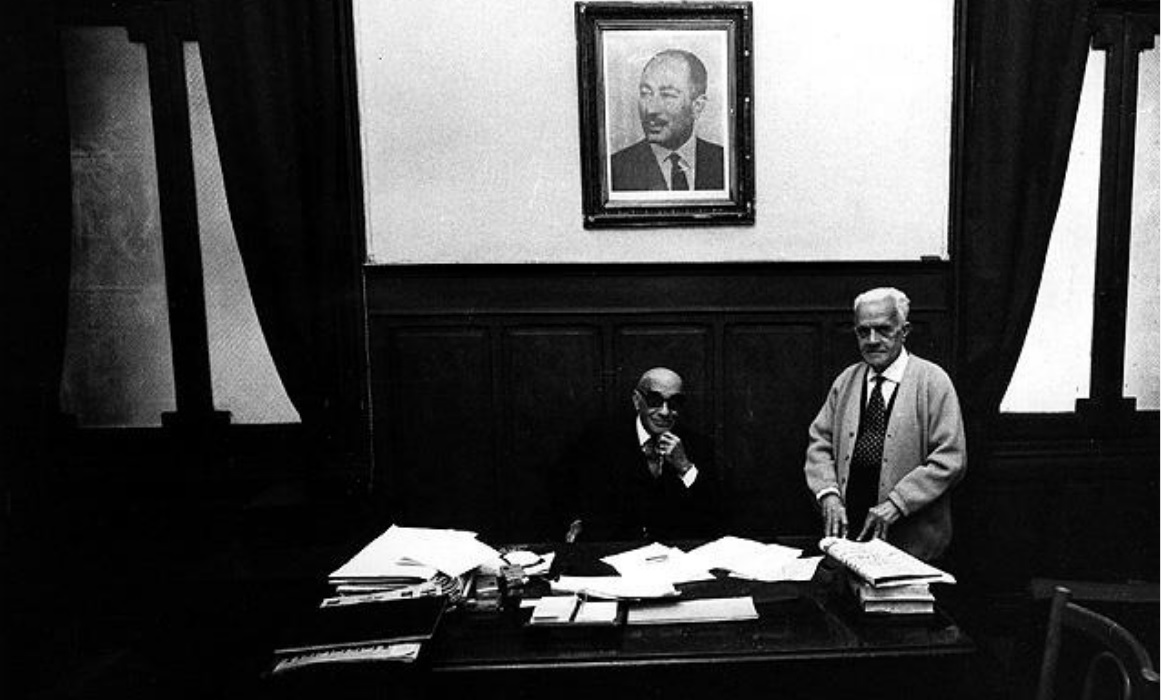
Jews in Egypt – Spring 1979
Photographed by Micha Bar Am
1979
“Like every other Jew, I see myself as though I was personally a part of the Exodus from Egypt. But despite the Biblical prohibition never to return, I went back in the spring of 1979. In contrast to my first visit, when I went to record history-in-the-making, on this occasion, I went out of personal motivation and on behalf of Beit Hatfutsot to photograph the current situation of the Egyptian Jewish community. Jews were already living in Egypt in ancient times. Abraham and Sarah, Jacob and his sons: they all went down to Egypt in times of famine and drought. Throughout the ages, Jews arrived in Egypt from many directions – fugitives from wars in the Land of Israel, refugees from Medieval Spain, survivors of pogroms in Russia, and exiles from Jaffa and Tel Aviv during World War I. In the spring of 1979, I found a shrunken community, a shadow of a glorious past: empty synagogues, vanishing communal institutions, and huge cemeteries being encroached upon by frantic development and desert. I was in Egypt during a period of uncertainty regarding the outcome of the peace talks. The Jews, out of bitter experience, were reserved and concerned. The picture I received of the community was not entirely clear and unequivocal. Even the statistics given to me by the official representatives of the Cairo and Alexandria communities were only approximations. They spoke of a total of about 300 Jews in both communities combined (apart from 60 members of the Karaite community in Cairo). The average age is high; about two-thirds are women – most of them widows – and altogether there are only about a dozen children. Not all the Jews living in Egypt today keep in regular touch with the traditional community institutions. Some usually keep their Jewish identities hidden; on the rare occasion, they appear at a Jewish function – and then return to their anonymity. This exhibition does not claim to present a historic survey or comprehensive documentation of a community. This is the picture as I saw it, the picture seen by a visitor intrigued by the sources of the vitality of an ancient neighboring community.” Micha Bar Am, Photographer, Israel.
Jews in Cuba, May 1978
Photographs by Bill Aron
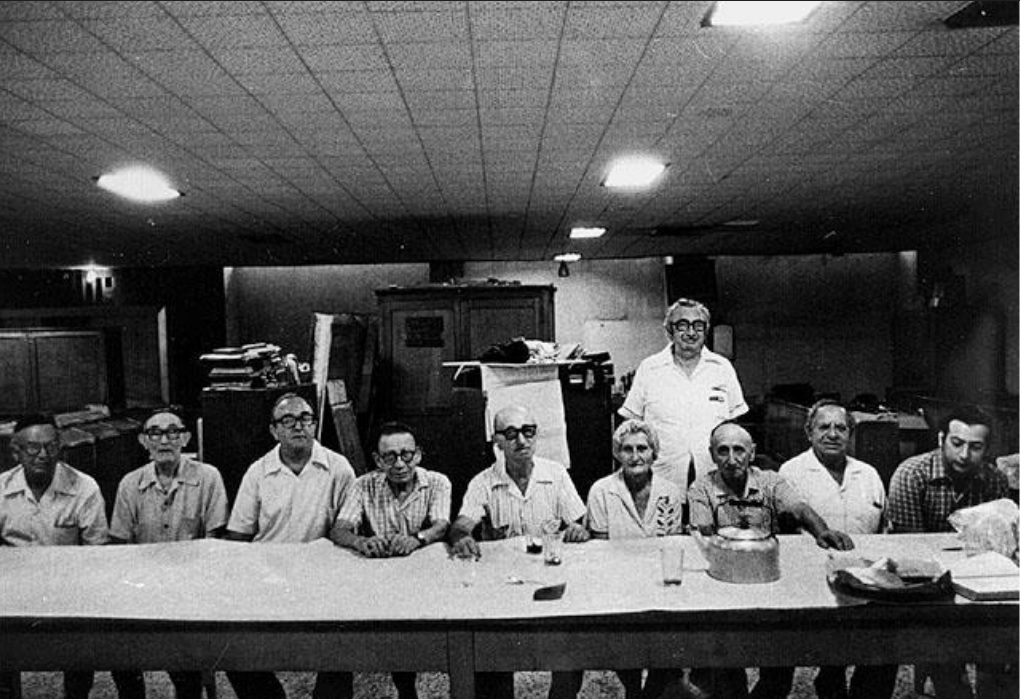
Jews in Cuba, May 1978
Photographs by Bill Aron
1978
Bill Aron is a Los-Angeles based freelance photographer, with a doctorate in sociology. His photographs have been exhibited in major museums and galleries throughout the United States, Europe and Israel. His work has also appeared in a wide variety of publications and is found in numerous public and private collections, including the Museum of Modern Art, The International Center for Photography, The Jewish Museum, The Chicago Art Institute, The Boston Museum of Fine Arts, The Mississippi Museum of Art, The Skirball Cultural Center, The Museum of American Jewish History, The Israel Museum in Jerusalem, and the Museum of the Jewish People at Beit Hatfutsot in Tel-Aviv. He first gained international recognition for his photographs of Jewish communities around the world, in New York, Los Angeles, Cuba and the Soviet Union. He has published several photo books and is continuously working on new projects. He lives in Los Angeles.
Moses Mendelssohn and His Time
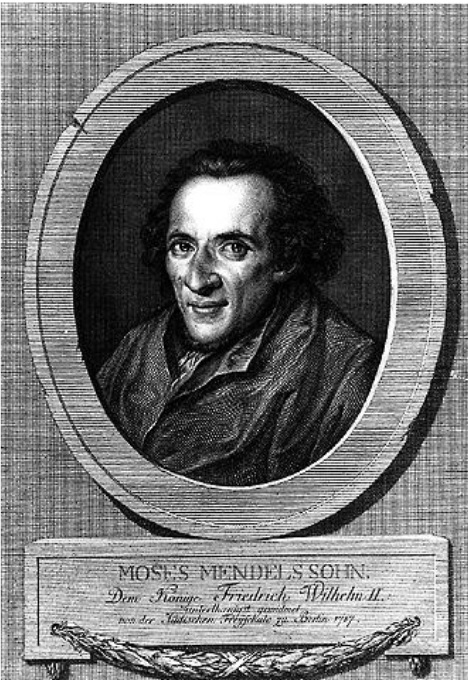
Moses Mendelssohn and His Time
1979
Moses Mendelssohn’s career foreshadowed the historical trend which he came to symbolize – the movement of the Jews out of the Ghetto and into the world of European culture. Mendelssohn was lionized by Berlin society, where he was admired for his wisdom and known as “the German Socrates”. His home attracted the leading intellectuals of the day. But at all times he was a traditional and conscious Jew ready to use his influence in the Christian world to help fellow Jews and Jewish communities in distress. He did not live to see the realization of Jewish Emancipation but he was the spiritual leader in the struggle for its attainment, and many aspects of Jewish Enlightenment can be traced back to his teachings. The trends he ushered in were not without their dangers. As Jews entered into German society and culture and were dazzled by it, many – including Mendelssohn’s own descendants – chose to break all bonds with Judaism and embrace Christianity. Nevertheless, Mendelssohn’s own life exemplified the symbiosis of the best in European culture with faithful adherence to Jewish tradition. The original idea for the exhibition came from the noted German-Jewish photographer Nahum (Tim) Gidal. He collected books, paintings, and lithographs, from which he realized an exhibition depicting the many-faceted activities of this great Jewish thinker, on the background of his times.
The Last Jews of Radauti
Photographs by Laurence Salzmann
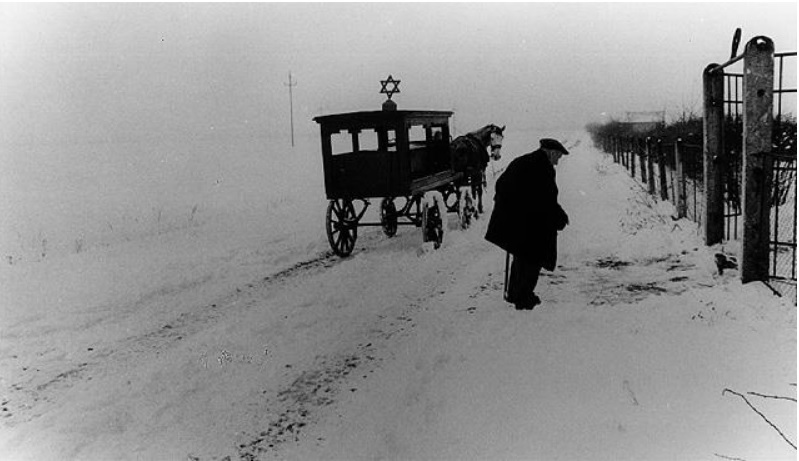
The Last Jews of Radauti
Photographs by Laurence Salzmann
1978
Beyond the Golden Door
The Jews of New York
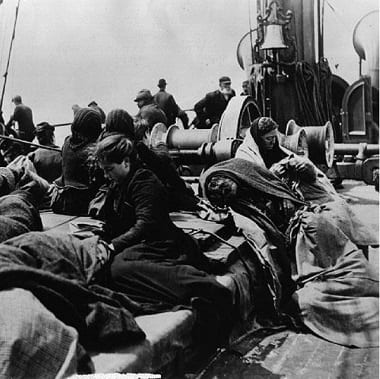
Beyond the Golden Door
The Jews of New York
1978 | Curator: Daniella Luxemburg
